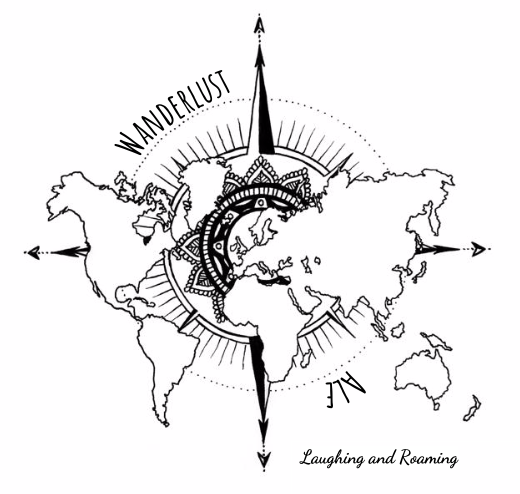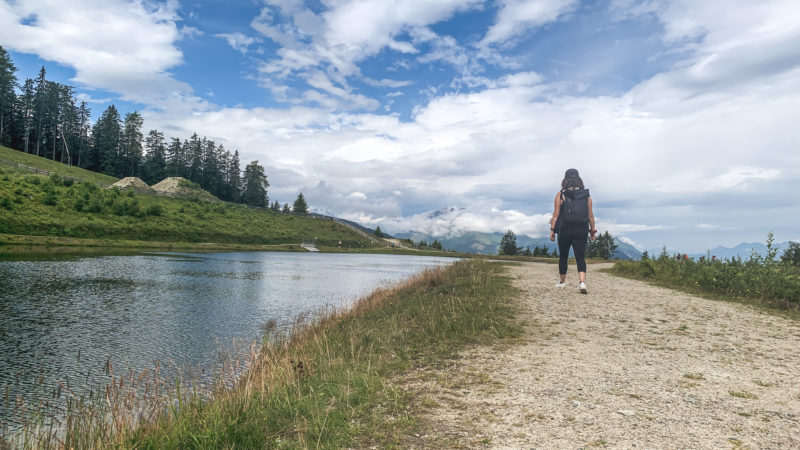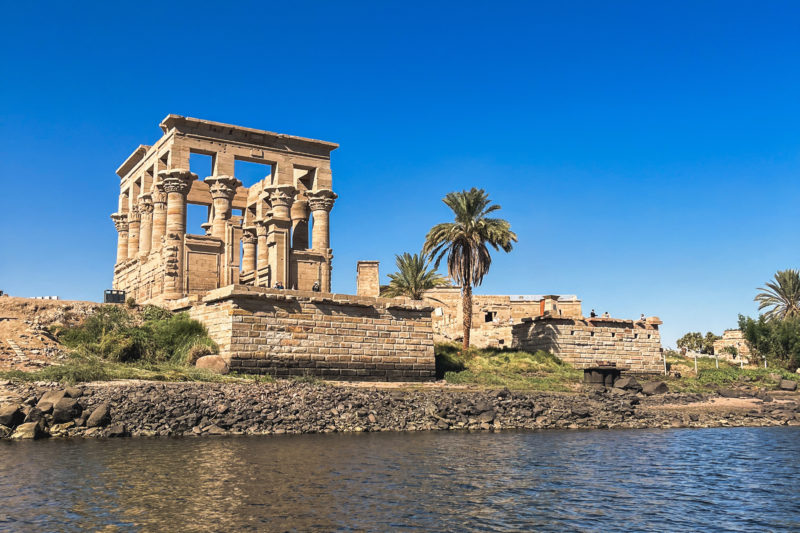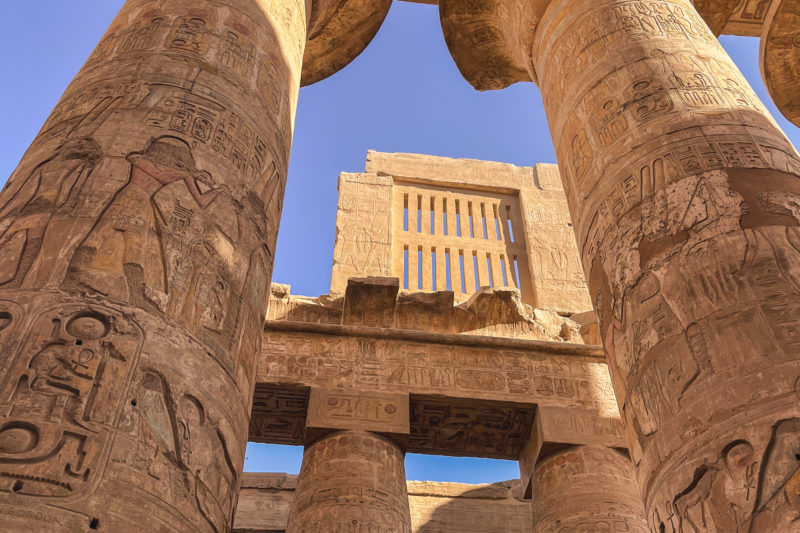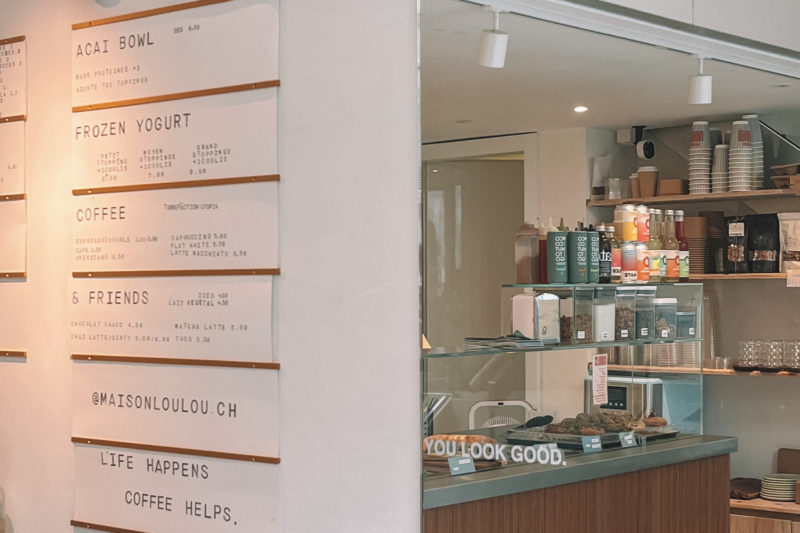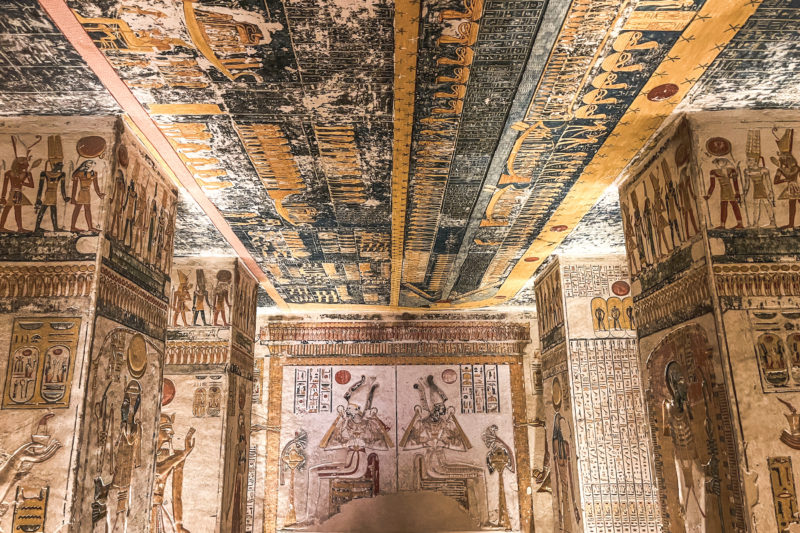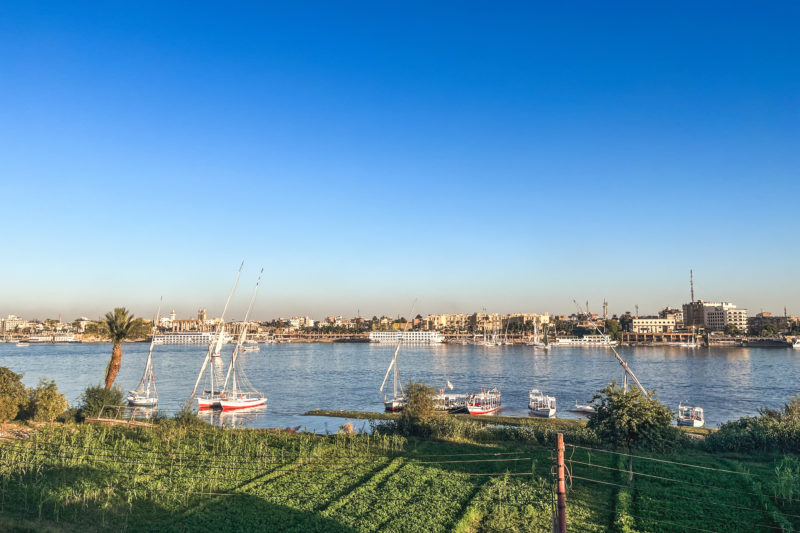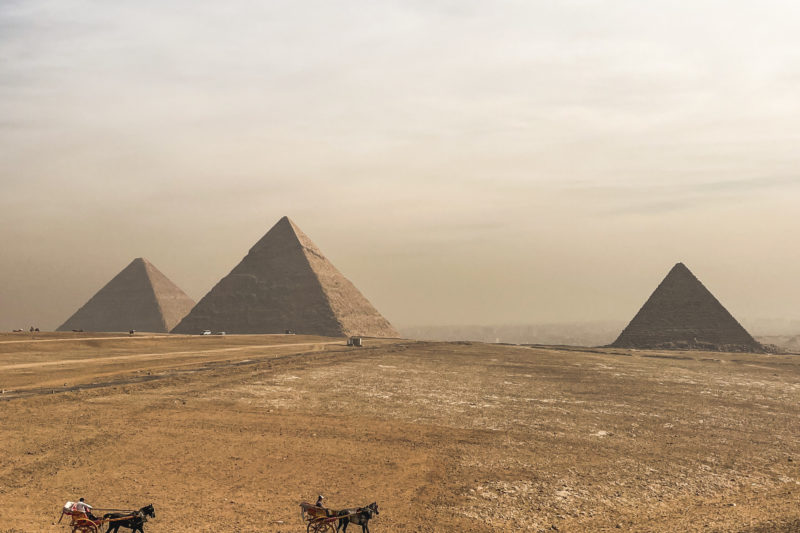The city of Innsbruck is a small Austrian nugget that manages to mix nature, urbanism, gastronomy, culture and sport. What more could I ask for in a destination?
The possibilities of visits and activities are numerous and yet it breathes an Olympian calm between vintage historical heart and new modern architecture. Innsbruck is the “capital of the Alps” and of the Austrian Tyrol. Fifth Austrian city in terms of population (behind Vienna, Graz, Linz and Salzburg), it became my second favourite city in the country of the Schnitzel after the romantic Salzburg.
I spent two whole days there during my second train trip in Austria, not knowing much about this destination which aroused my imagination with snow-covered mountains and especially its historical ski jump which I spotted every time I travelled by train in Austria (and I did since I was a child).
I went there in summer, but I will definitely have to come back in winter because this city was such a nice surprise, and then you can’t avoid an Austrian after-ski, here or in the numerous resorts of the Austrian Tyrol (have you ever heard of Dj Ötzi!?!).
This article gathers the various must-do and activities to discover in Innsbruck in summer. You’ll see, you can’t get bored there.
Stroll through the old town of Innsbruck, full of colour and history
The old town of Innsbruck is an incomparably charming place to discover on foot, a bit like an open-air museum! Just let yourself be carried away by strolling through the narrow streets to discover a rich historical and cultural heritage. Well, there are a few places you should not miss.
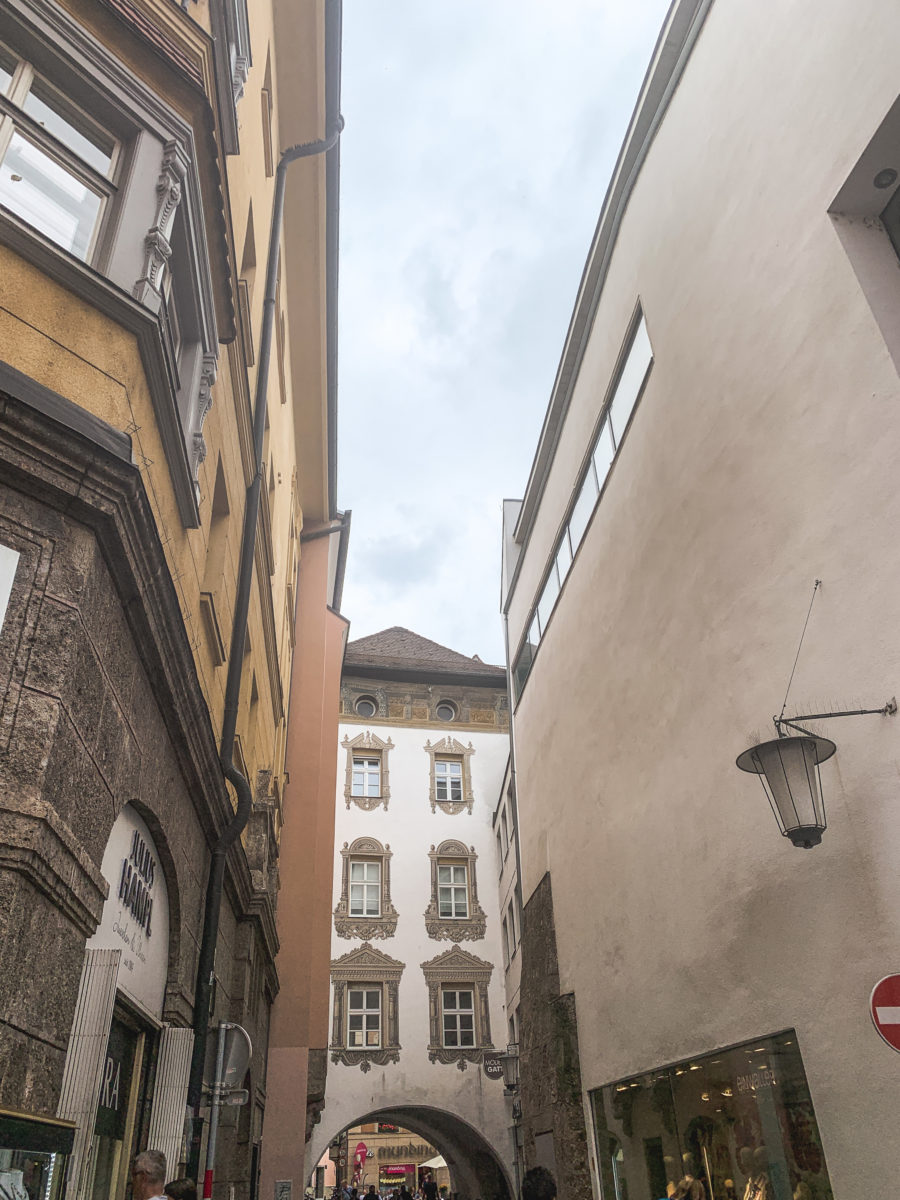
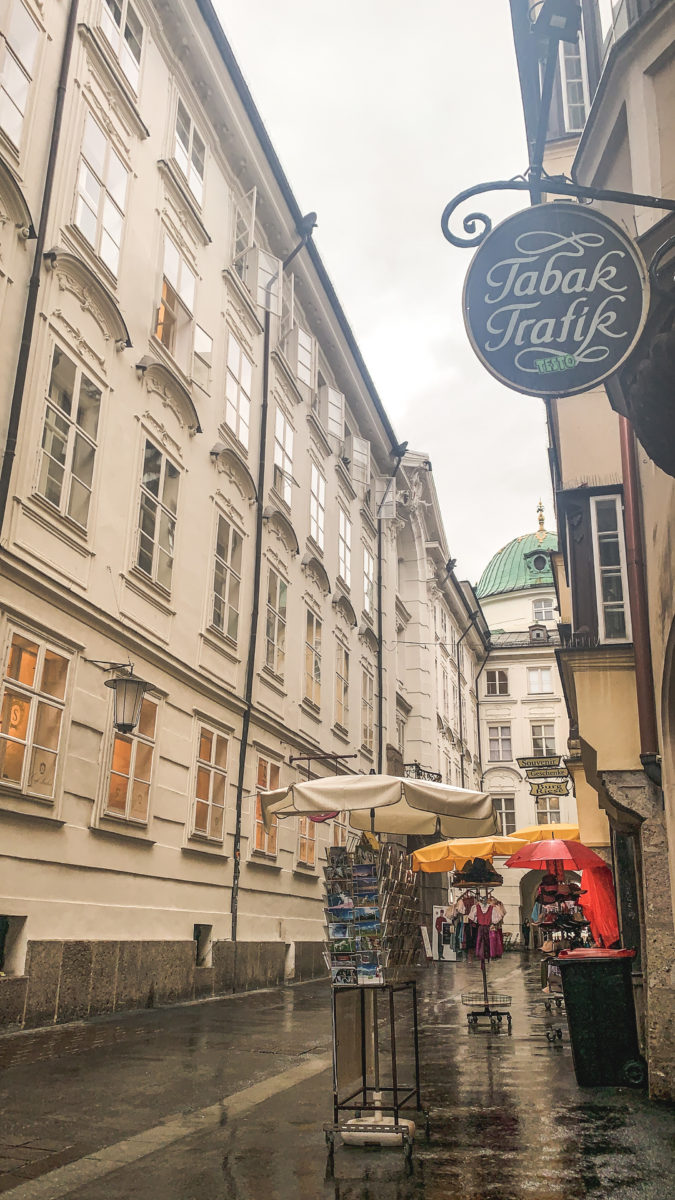
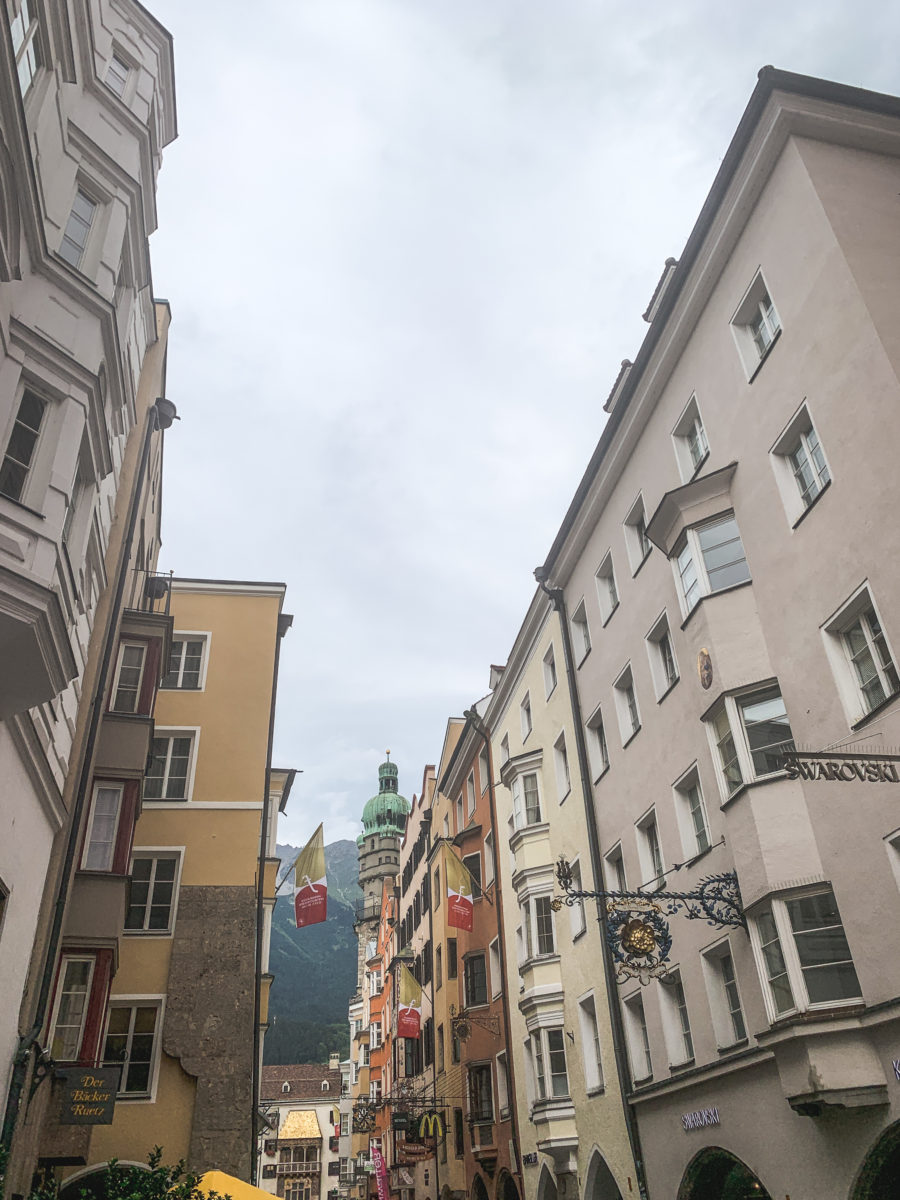



The Golden Roof
Emblematic site of the city, the Golden Roof (Goldenes Dachl) records the glorious period of Innsbruck’s history, which reached its peak under the reign of Emperor Maximilian I, of the powerful and famous Habsburg family
Located at the end of the extension of Maria-Theresien-Straße, this building has become a museum, which I, unfortunately, did not visit during my stay but which is included in the Innsbruck Card (I’ll tell you about it at the end). Surrounded by many atypical houses, like the Helbling Haus which reminds a bit of the houses built by Gaudi in Barcelona, the particularity of the Golden Roof is precisely in this one, with its 2’657 gold-plated copper tiles which sparkle even under rainy weather.
It was built by the emperor to dispel the gossip of the time about the (bad) finances of the Holy Roman Empire and then served as a “lodge” for the many knights’ tournaments that were organized (Maximilian I was fond of it, by the way, an exhibition about this and about the emperor was in place in the Hofburg Palace during my stay).
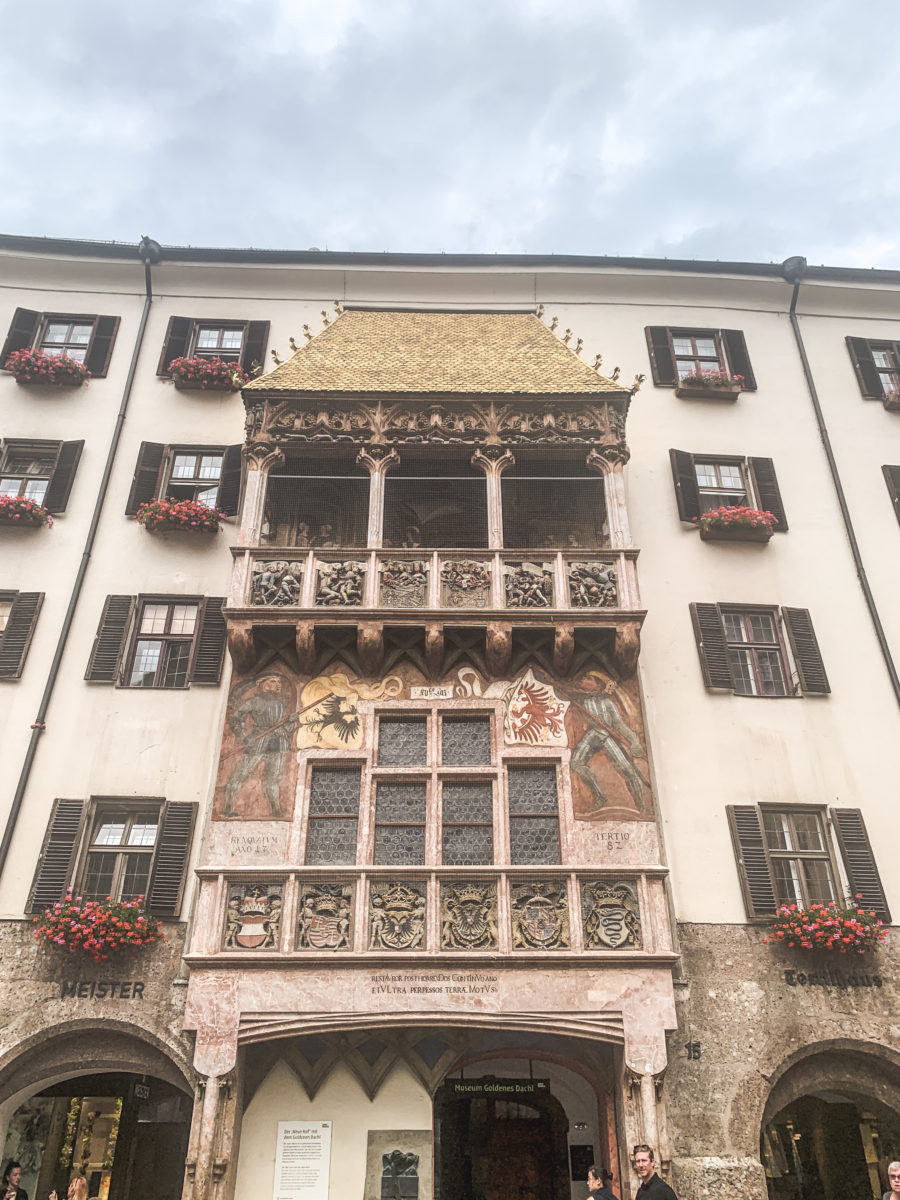
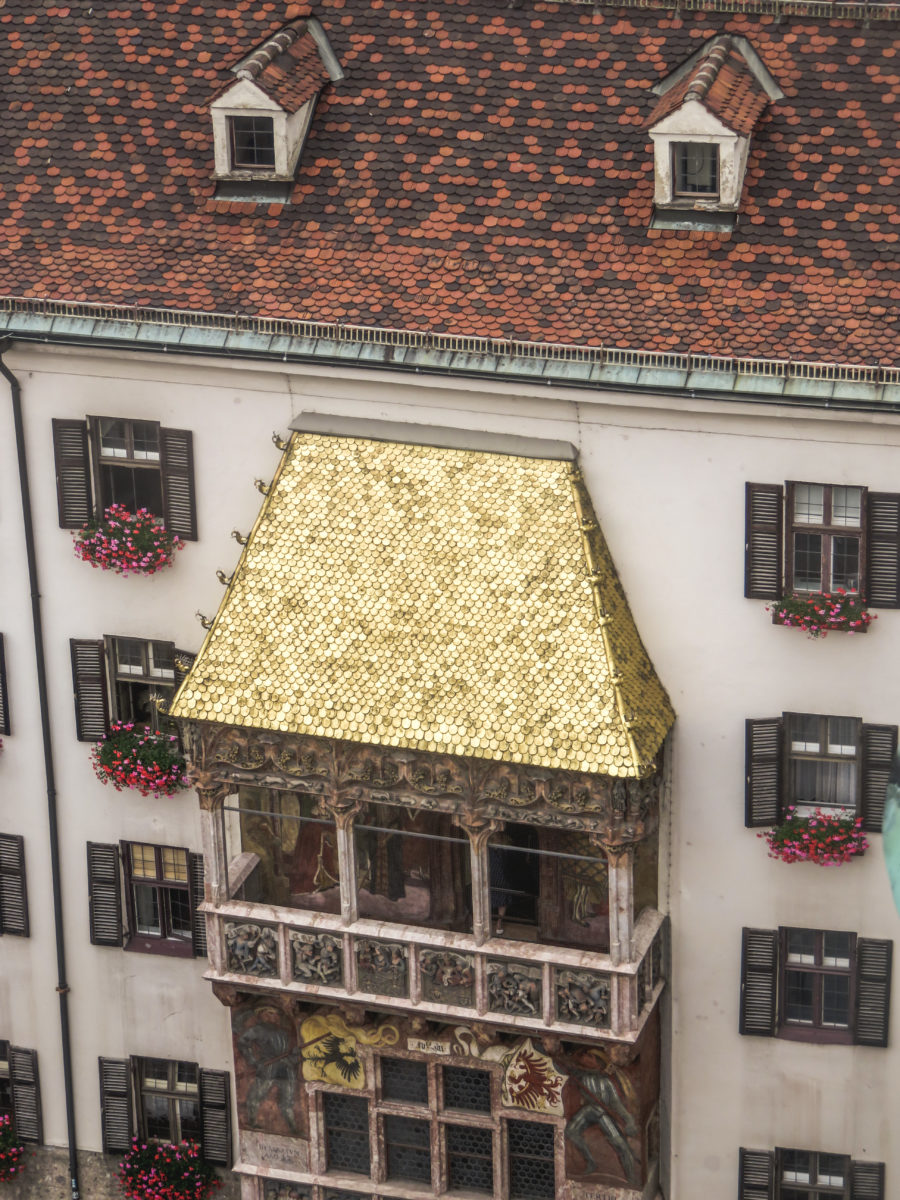

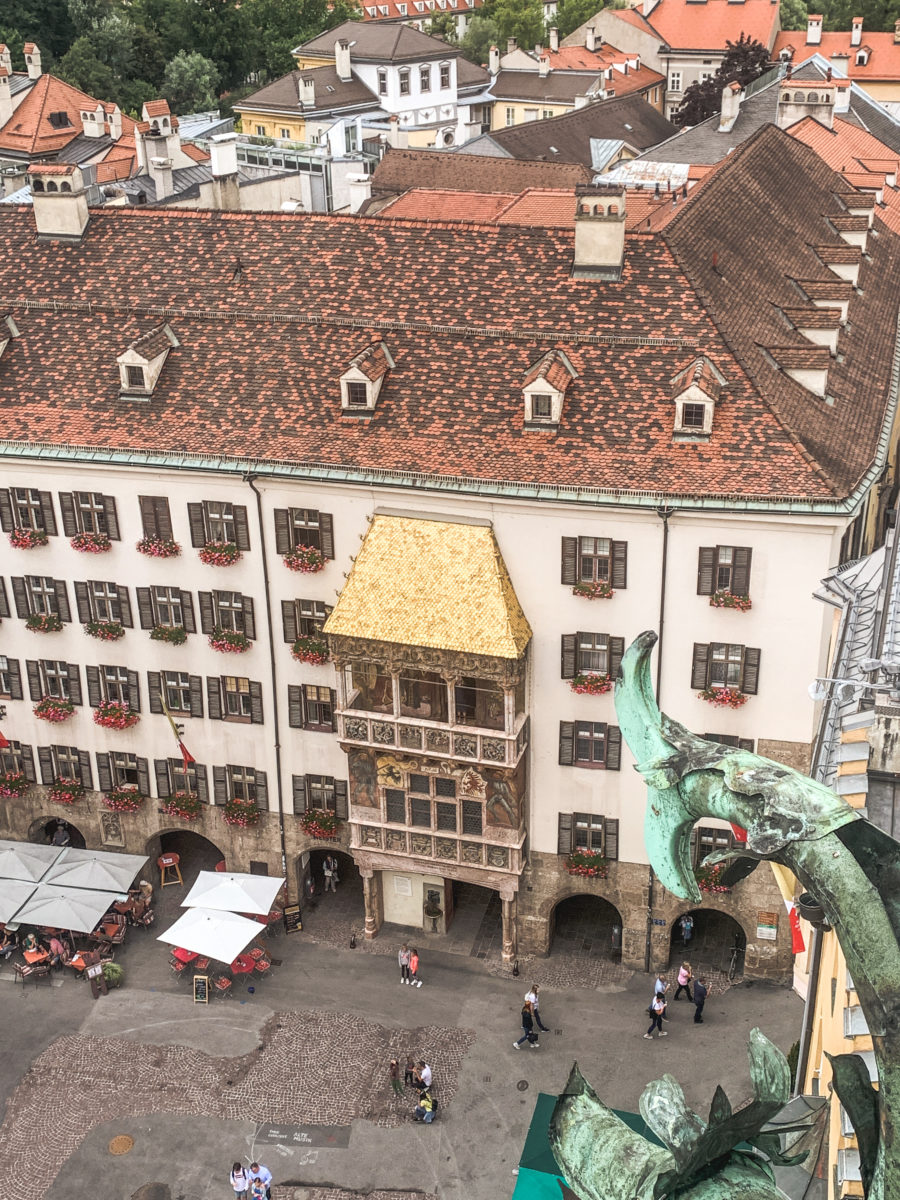
City Tower
For a first overview and a really beautiful view of Innsbruck, you will have to climb some 133 steps. The city tower, also called the belfry, is located in the heart of the Austrian city, next to the Golden Roof.

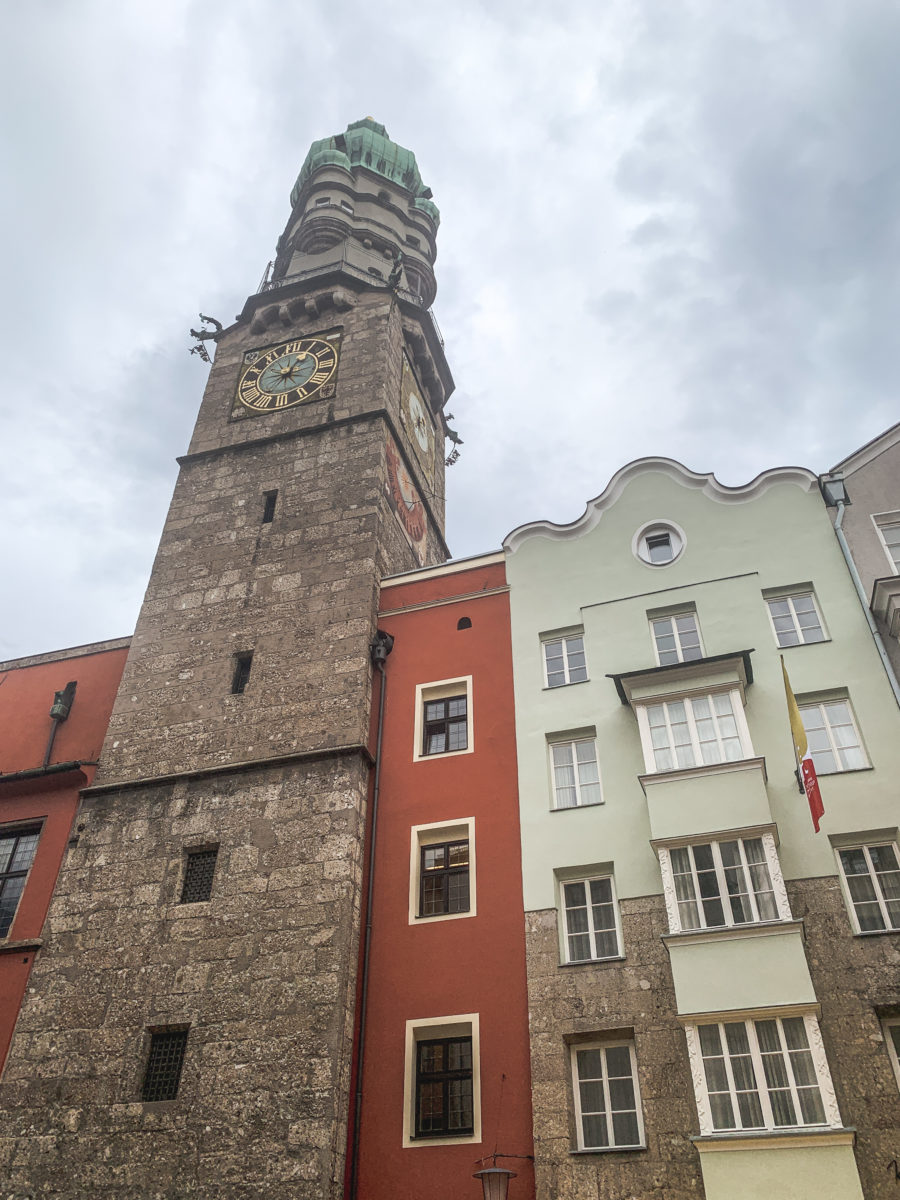
In the past, medieval guards watched for enemies and dangers, such as fire alarms, from this belfry for over 450 years. It also served as a prison. Today, from the observation platform, you can see the beautiful old town, the Nordkette, the Inn and many other highlights of the city.
The ingenuity of the people who made the experience to climb to the top of the tower is worth mentioning since two staircases were designed to avoid that visitors going to the top have to wait or rather brush past those coming down.


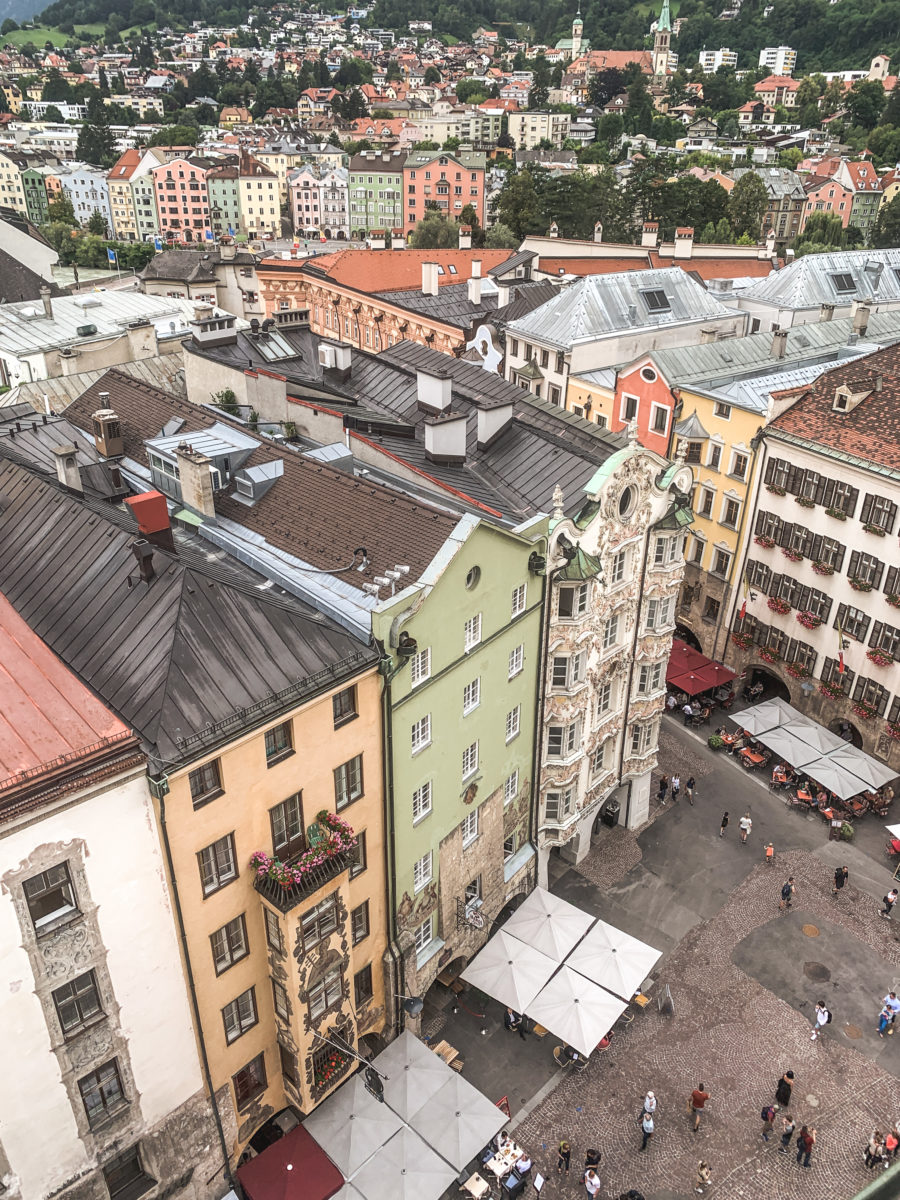


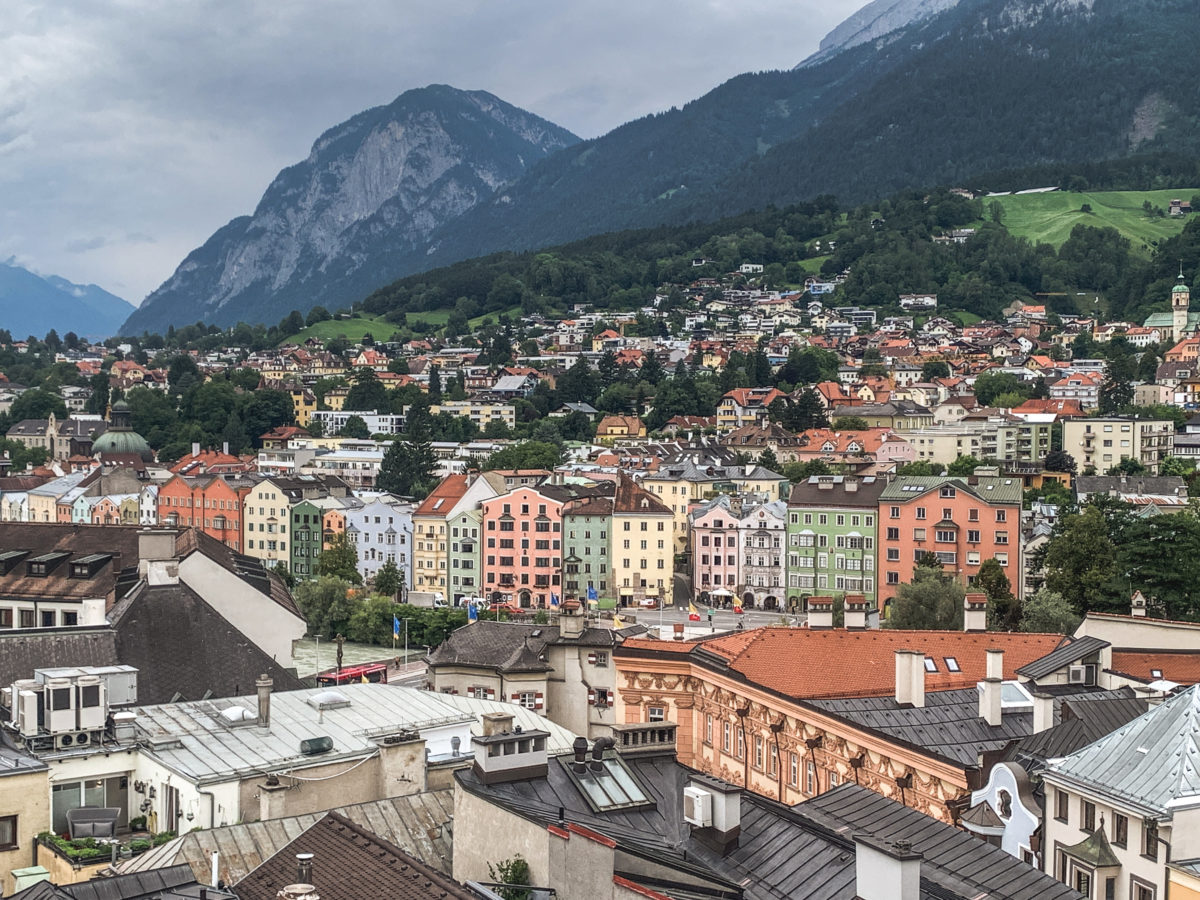
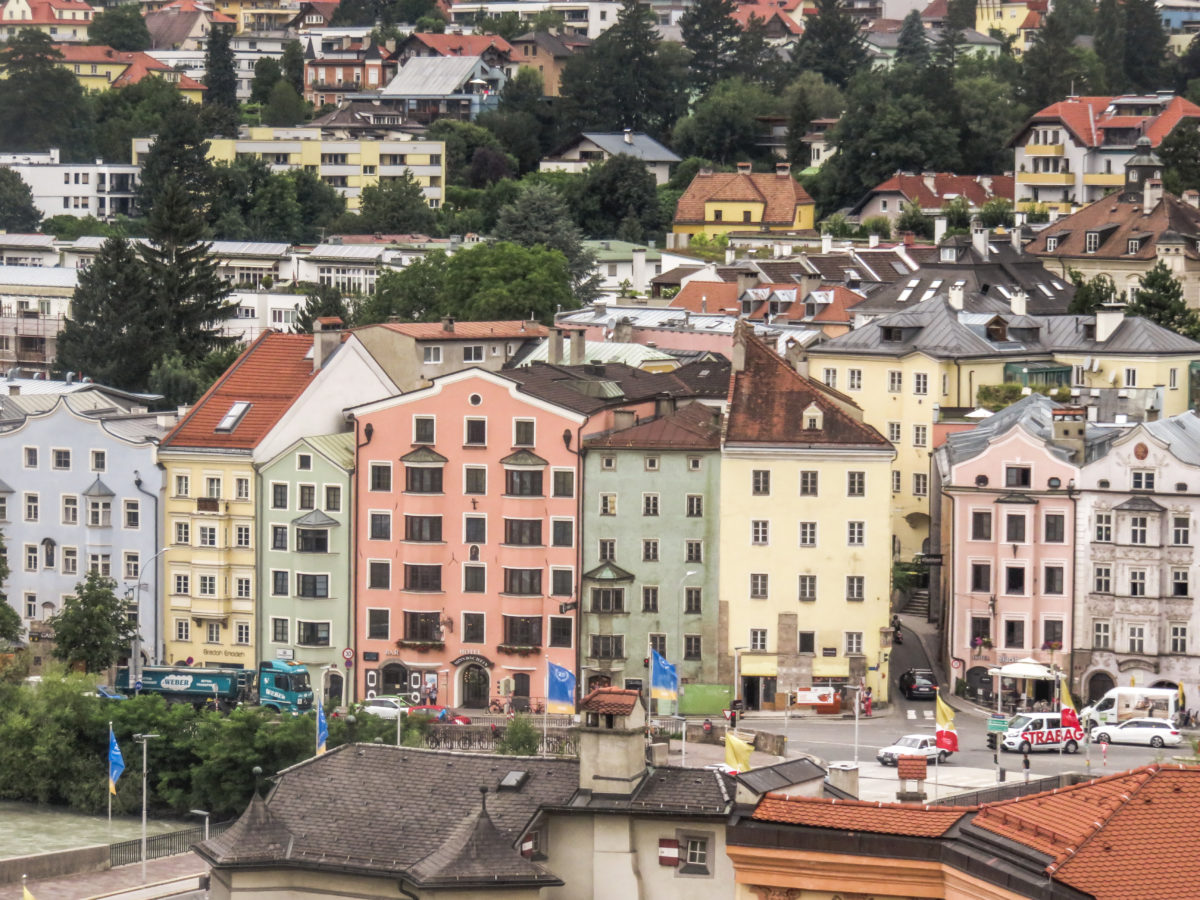
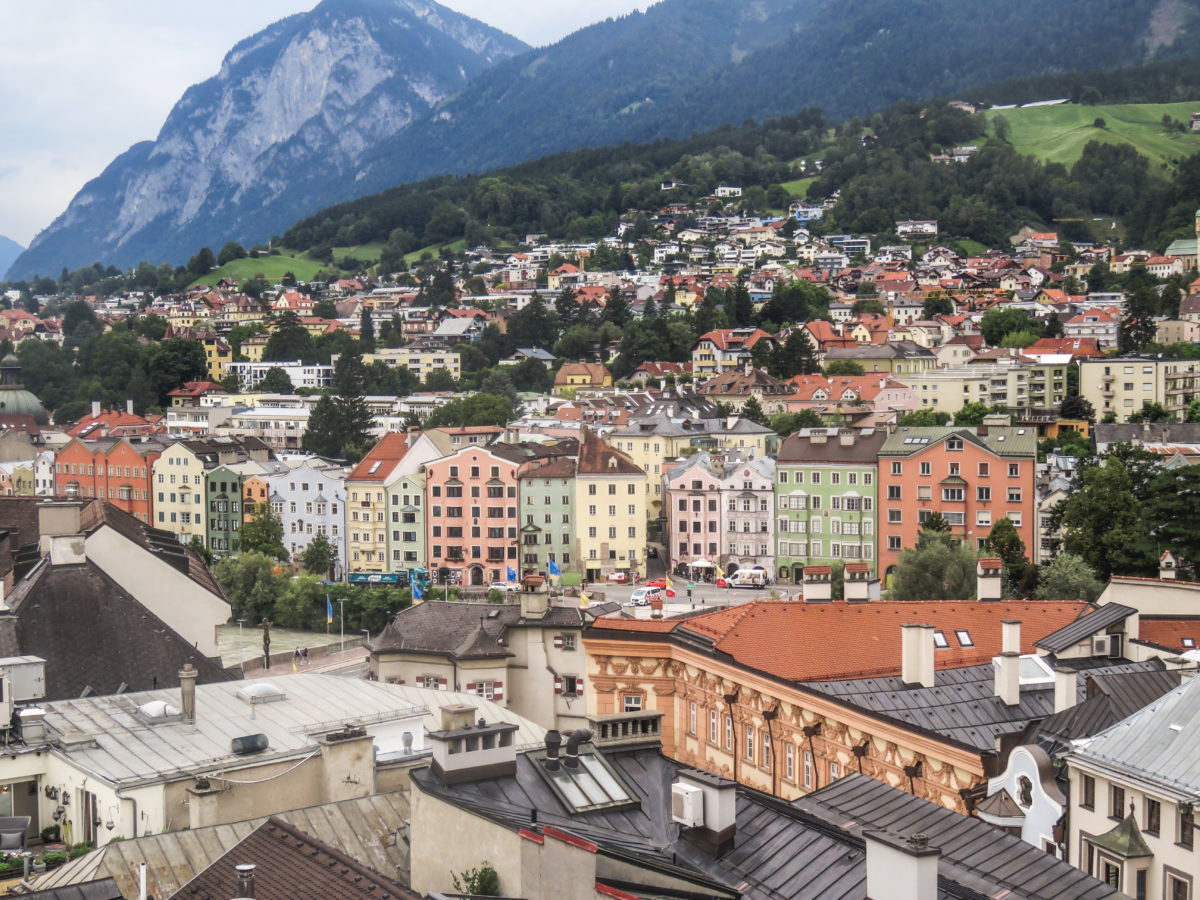
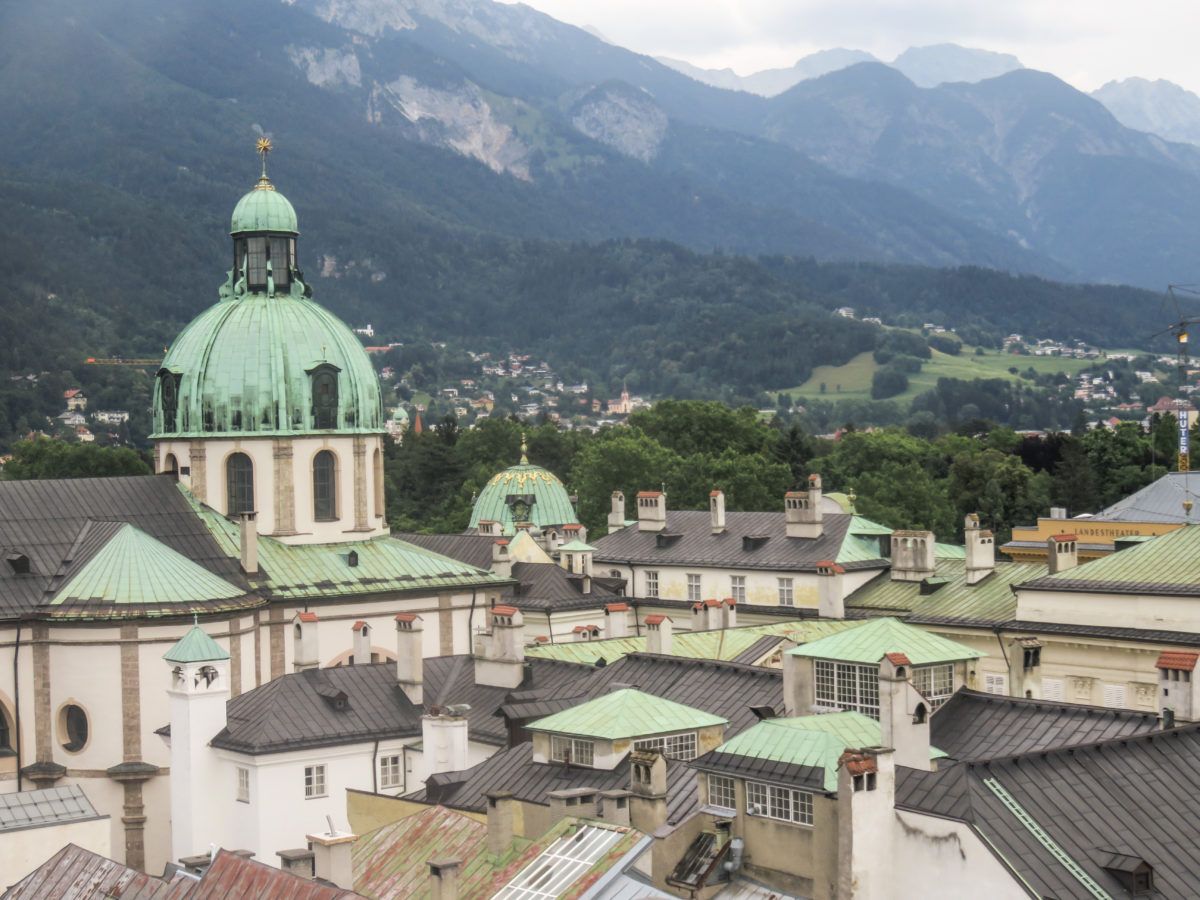
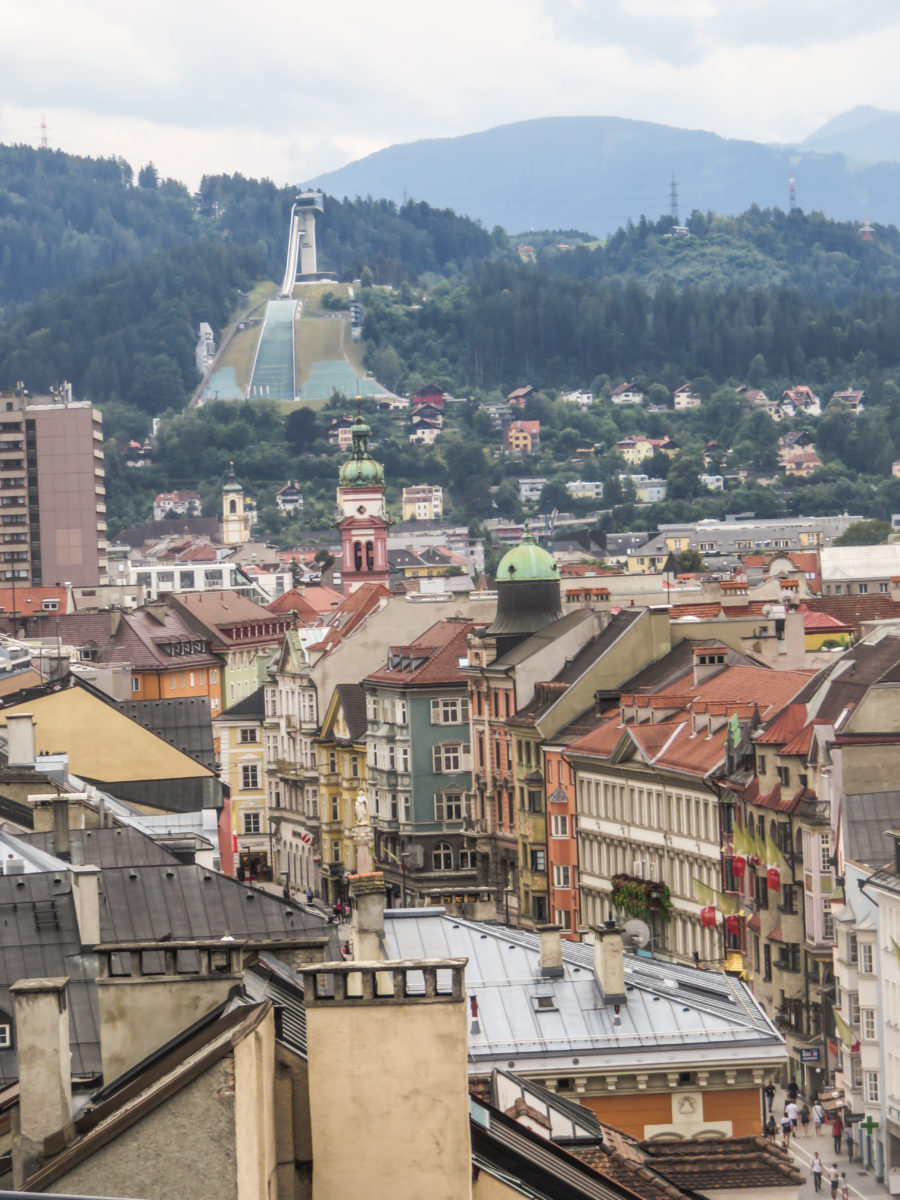
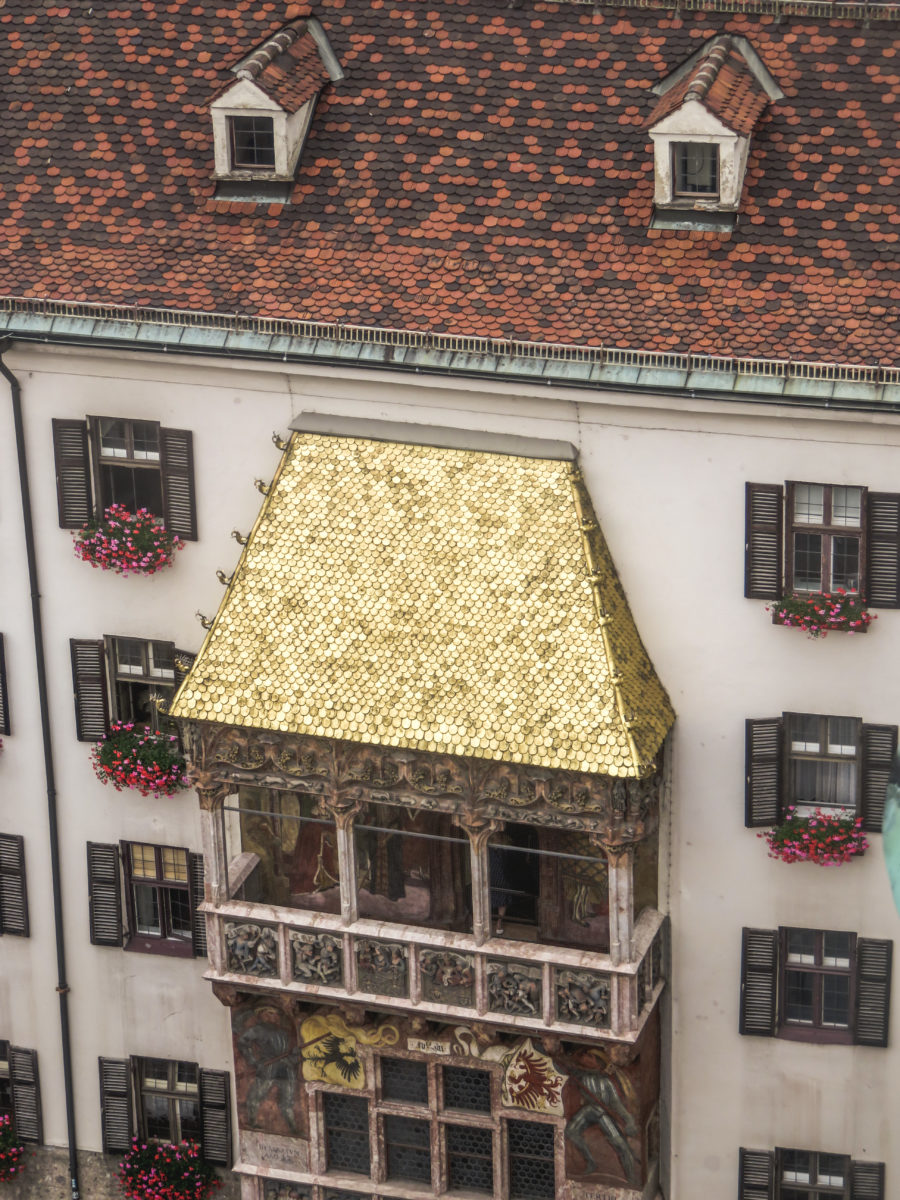

Triumphforte
While walking around, I came across a triumphal arch. What, would I be in Paris? Milan? Barcelona? No, no, in Innsbruck.
A bit unusual to discover a Roman work in an urban setting surrounded by mountains, the Austrian one was built in 1765 and its particularity lies in its double representation of life. Indeed, one side commemorates a wedding and the other one the death, since just after the wedding of Leopold, son of Empress Maria Theresa, her husband Francis I died. Both tragic and romantic.
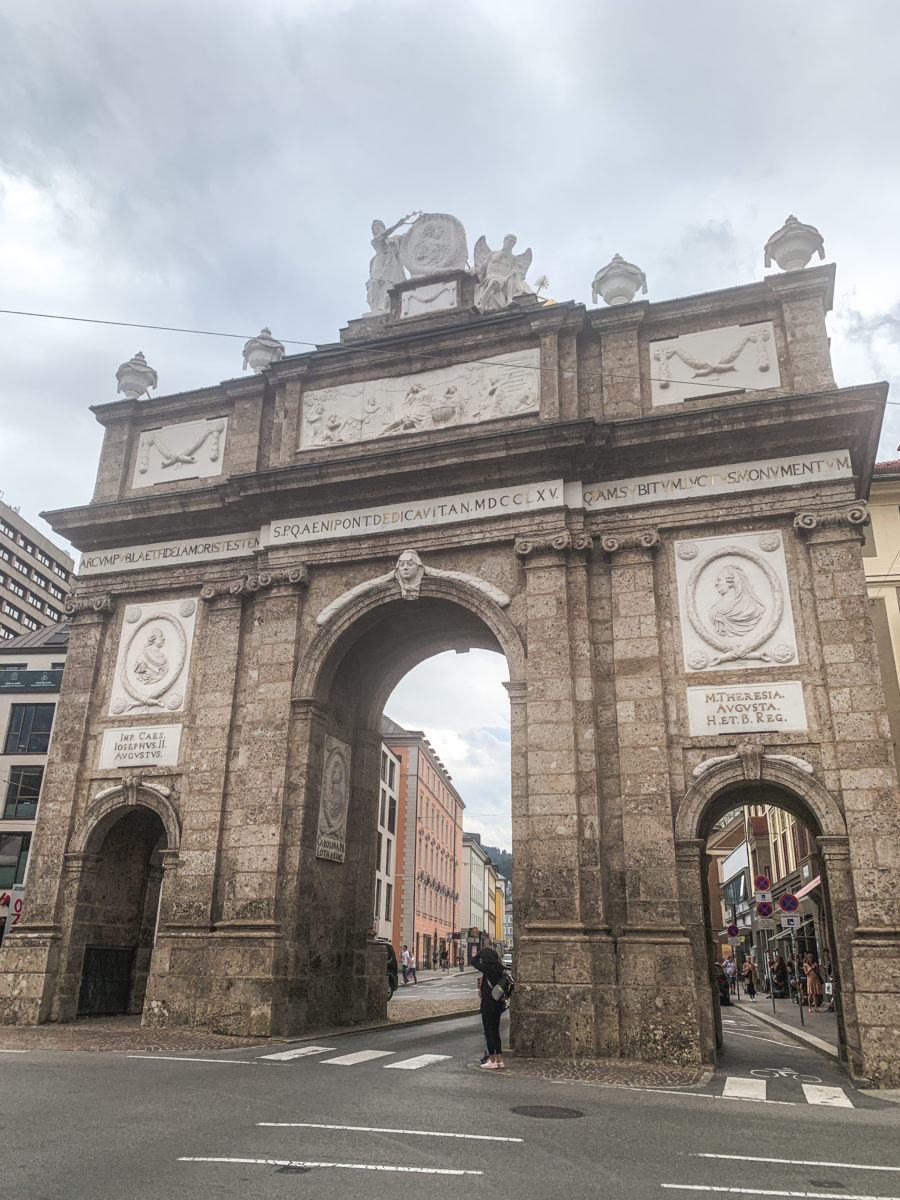
It is a bit like the gateway to the city centre, moreover, this triumphal arch replaced the real gate that dated from the Middle Ages.
Maria-Theresien-Straße
Maria-Theresien-Straße is the living soul of Innsbruck and its pedestrian centre. This 500-meter long boulevard offers visitors and locals alike a variety of shopping centres, shops, restaurants and lively terraces.
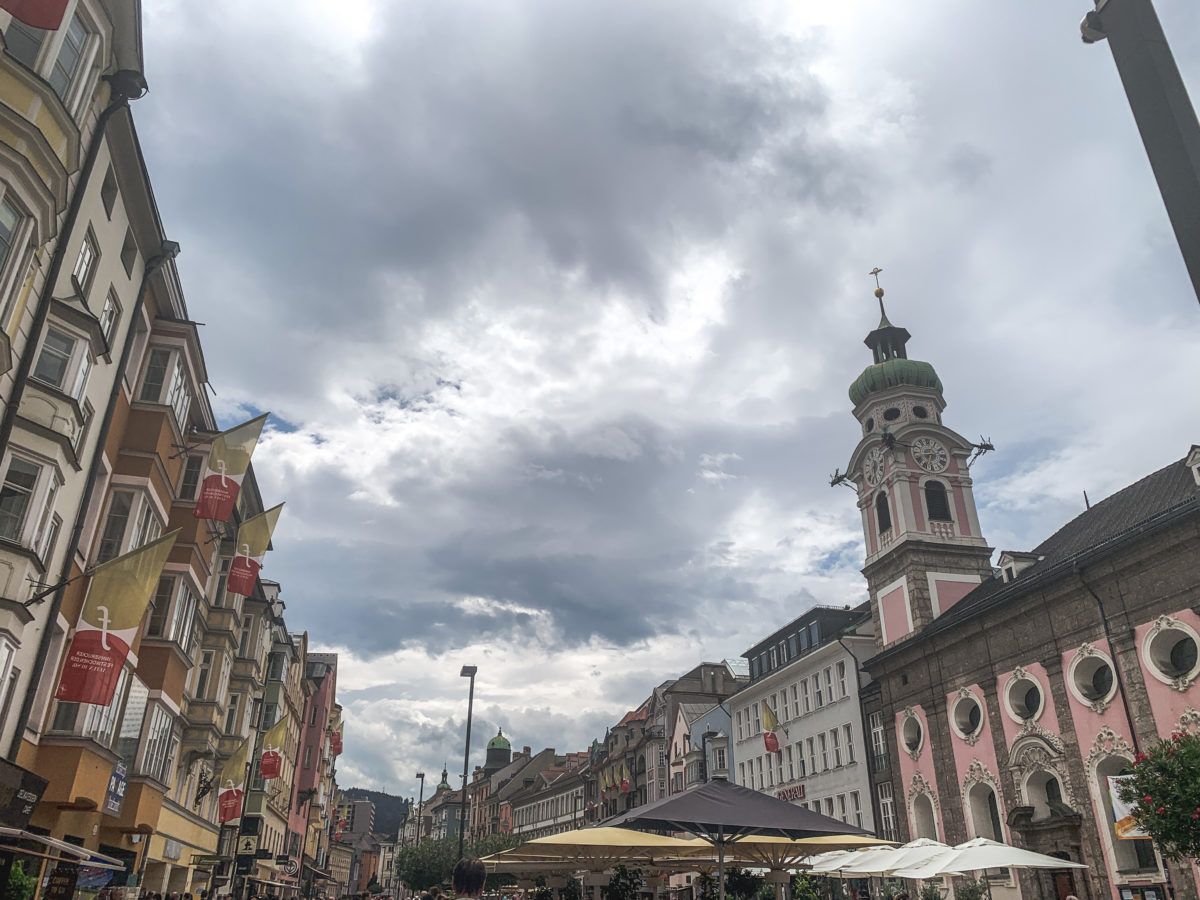
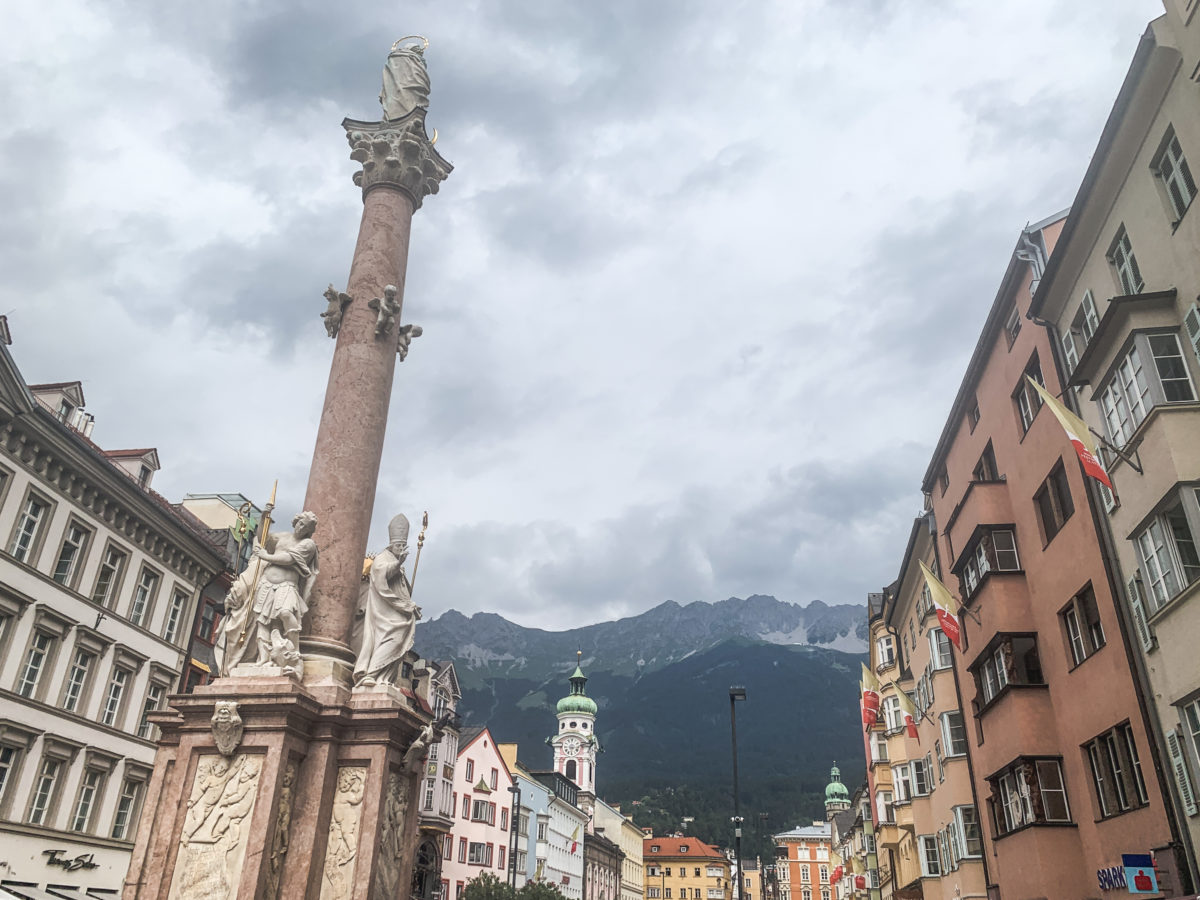
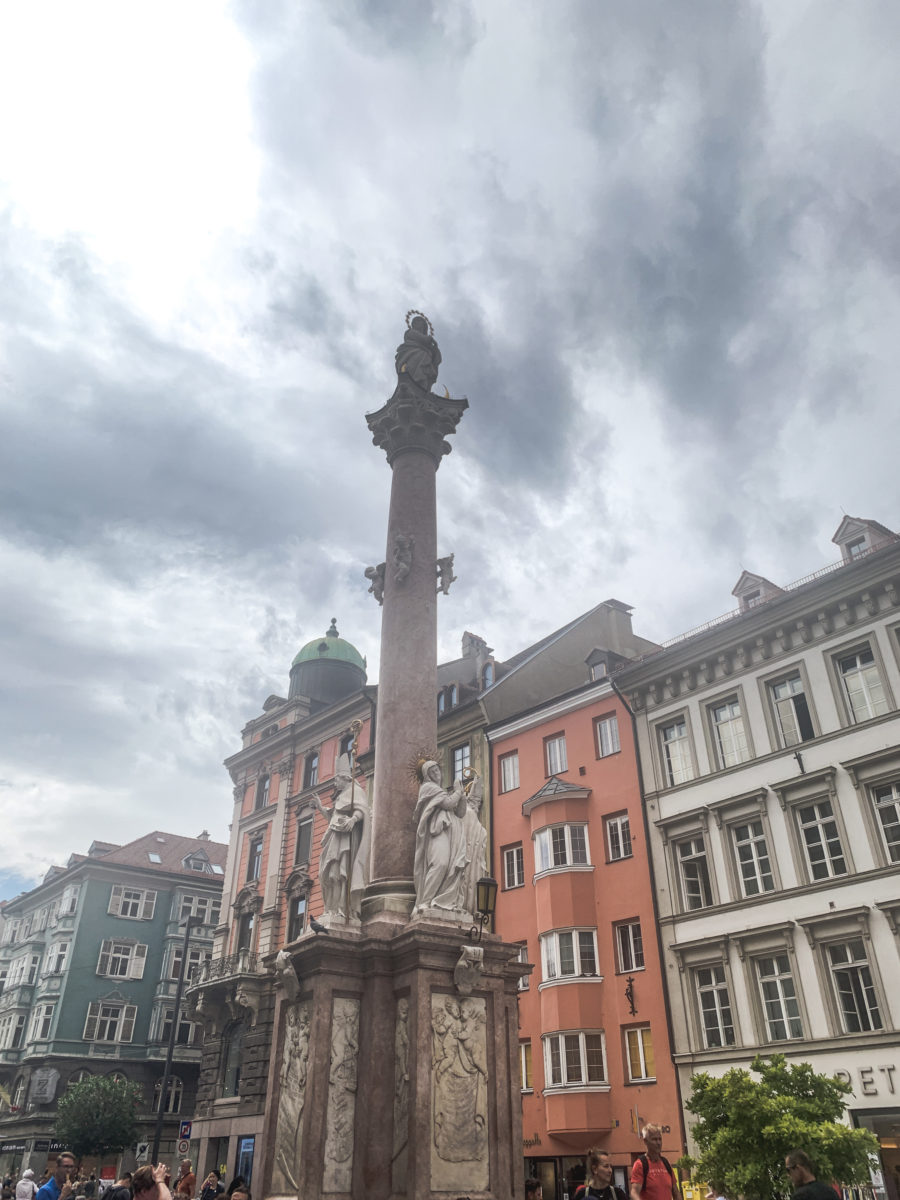
If you want to avoid the crowds, then avoid this street, which is bustling with activity at all hours of the day.
Colorful houses on the Inn and walks along the river
If I had been asked for a picture of Innsbruck before my visit, I would have said one of the vintage coloured houses with the Inn River in the foreground and the snow-capped mountains in the background.
When I visited, the weather was not so sunny to enjoy this image and the peaks were no longer covered with white powder, but this view is definitely still a highlight for the city.
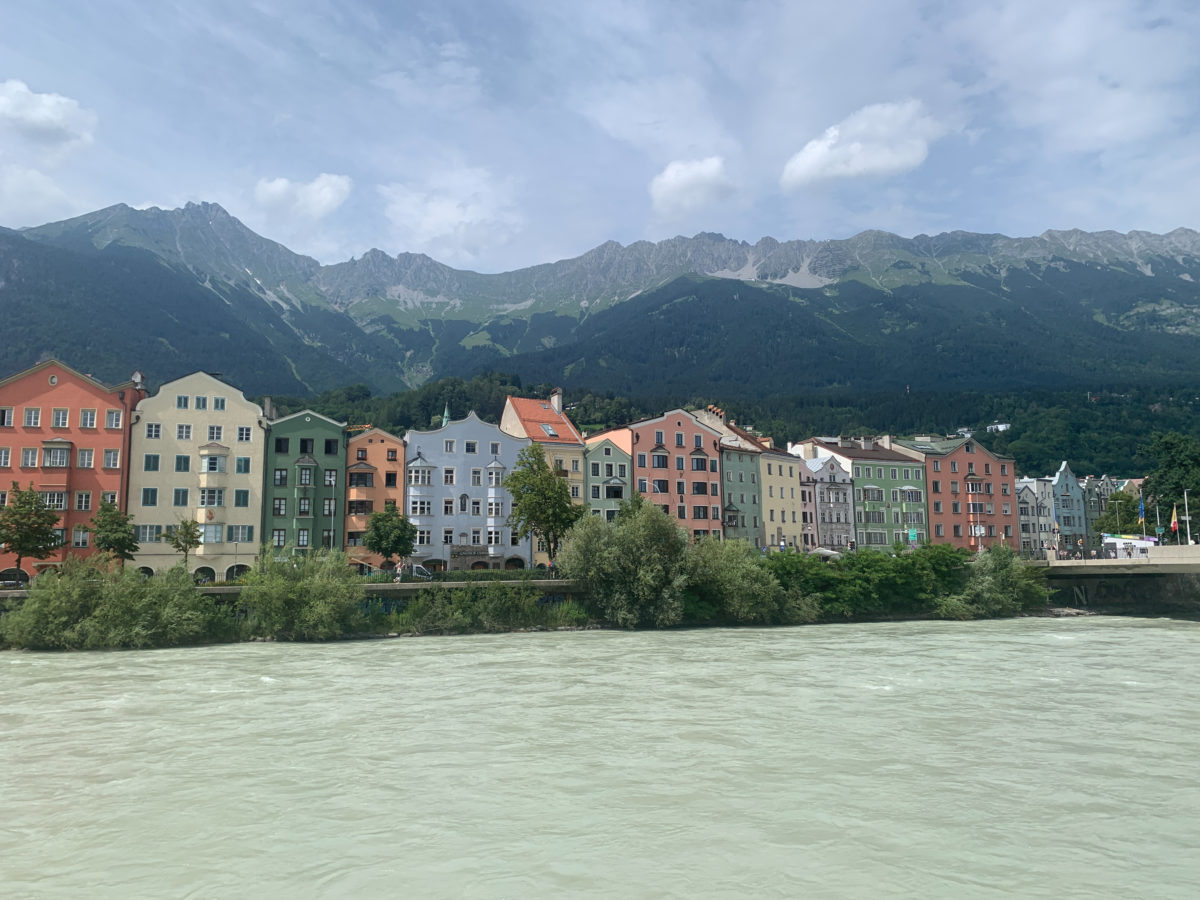
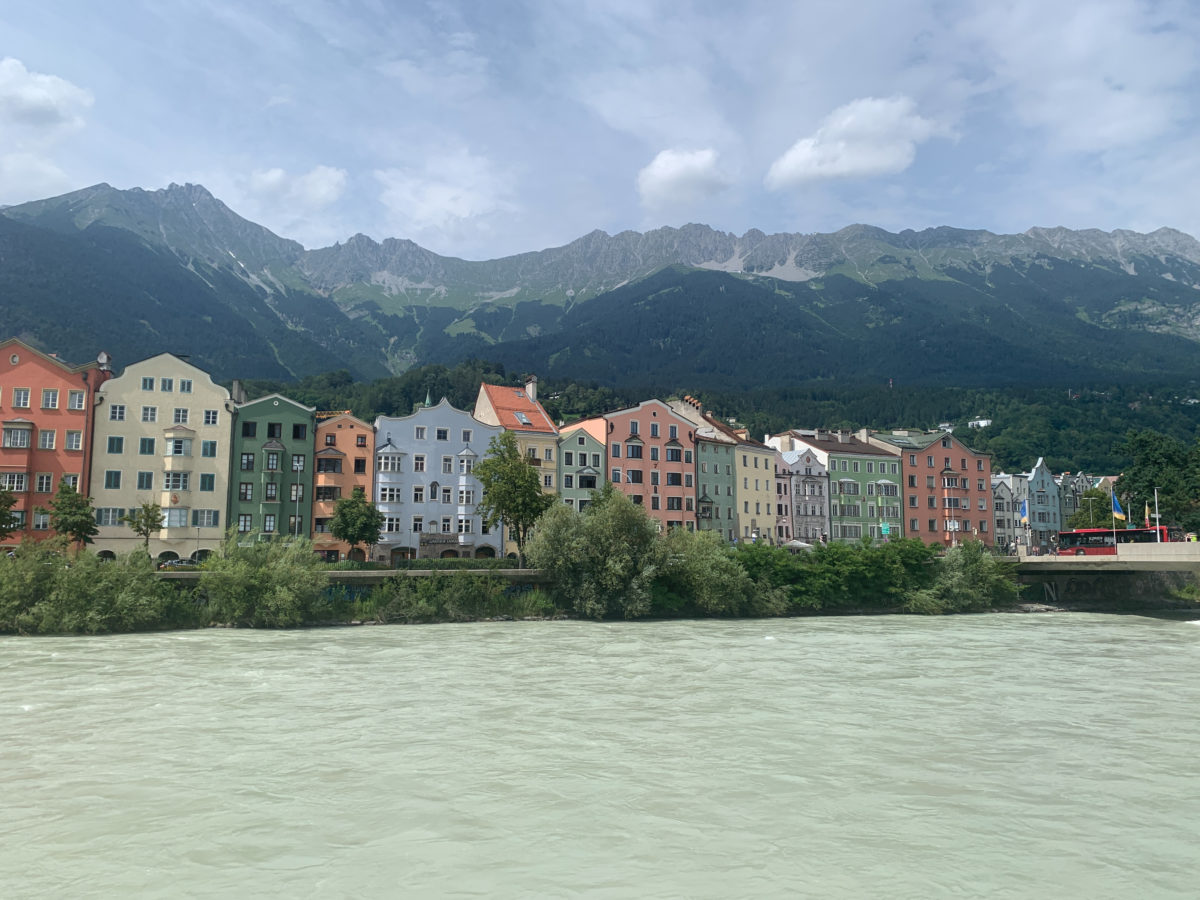
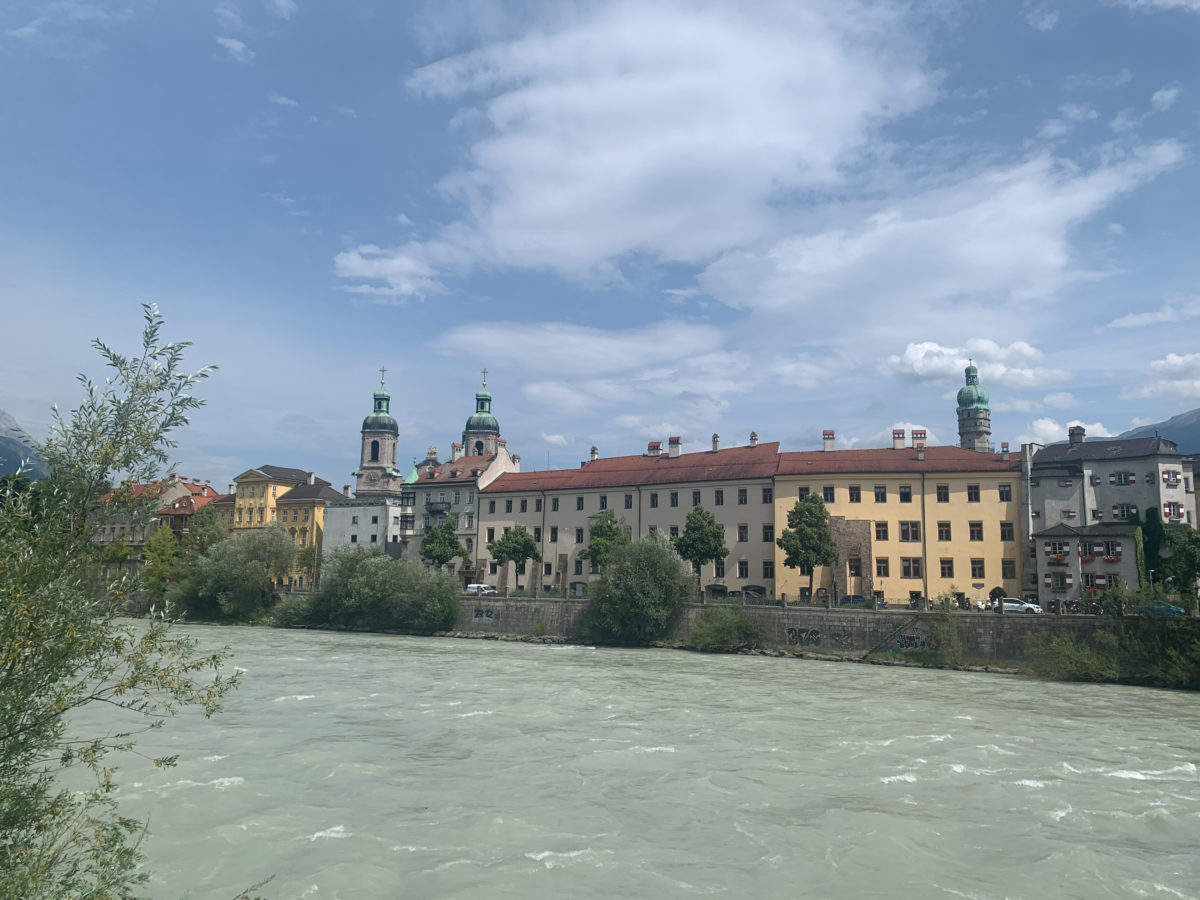
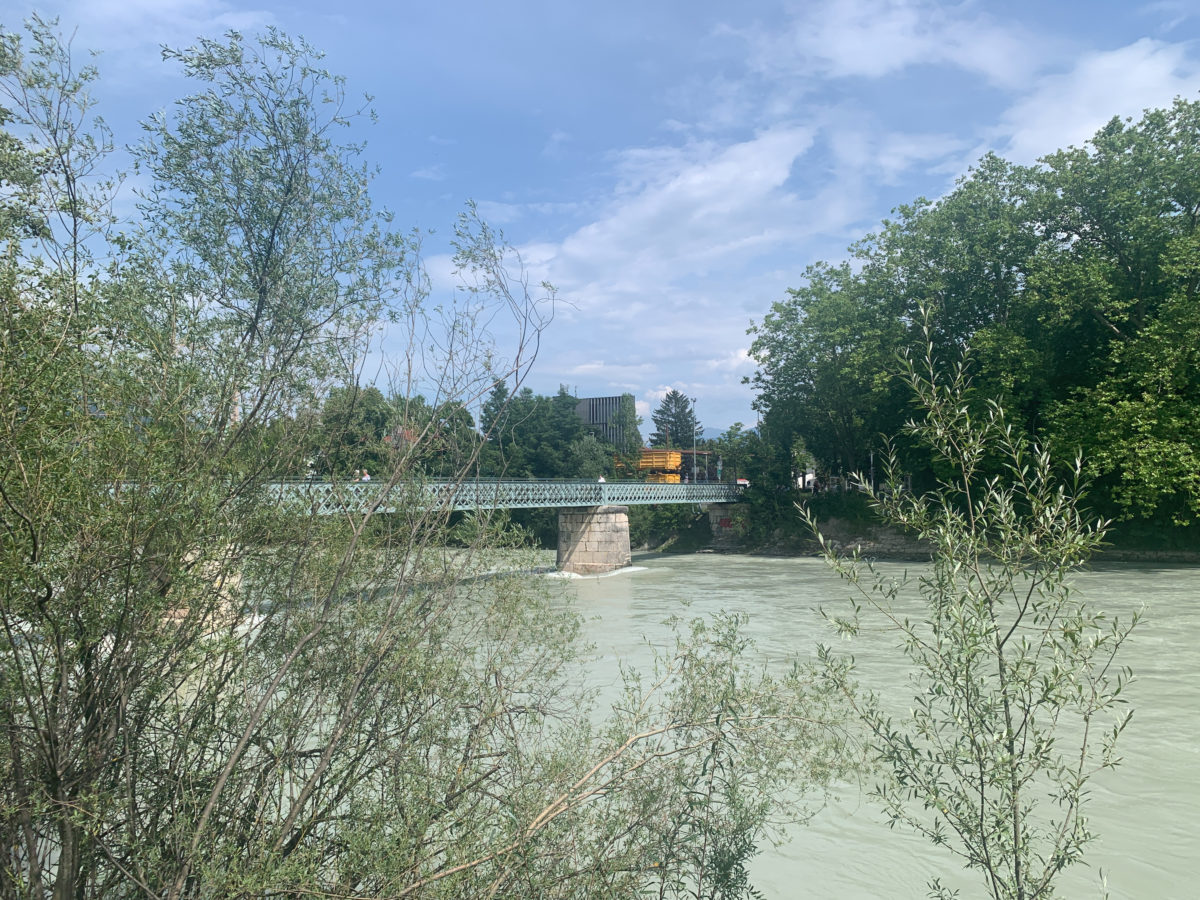
This district called Mariahilf – St. Niklaus is the oldest part of the Tyrolean city. It is a charming place to stroll, well protected from the many visitors who stay in the old town.
The River Inn is a direct source of nature in the city and offers many opportunities for walking, biking and skating.
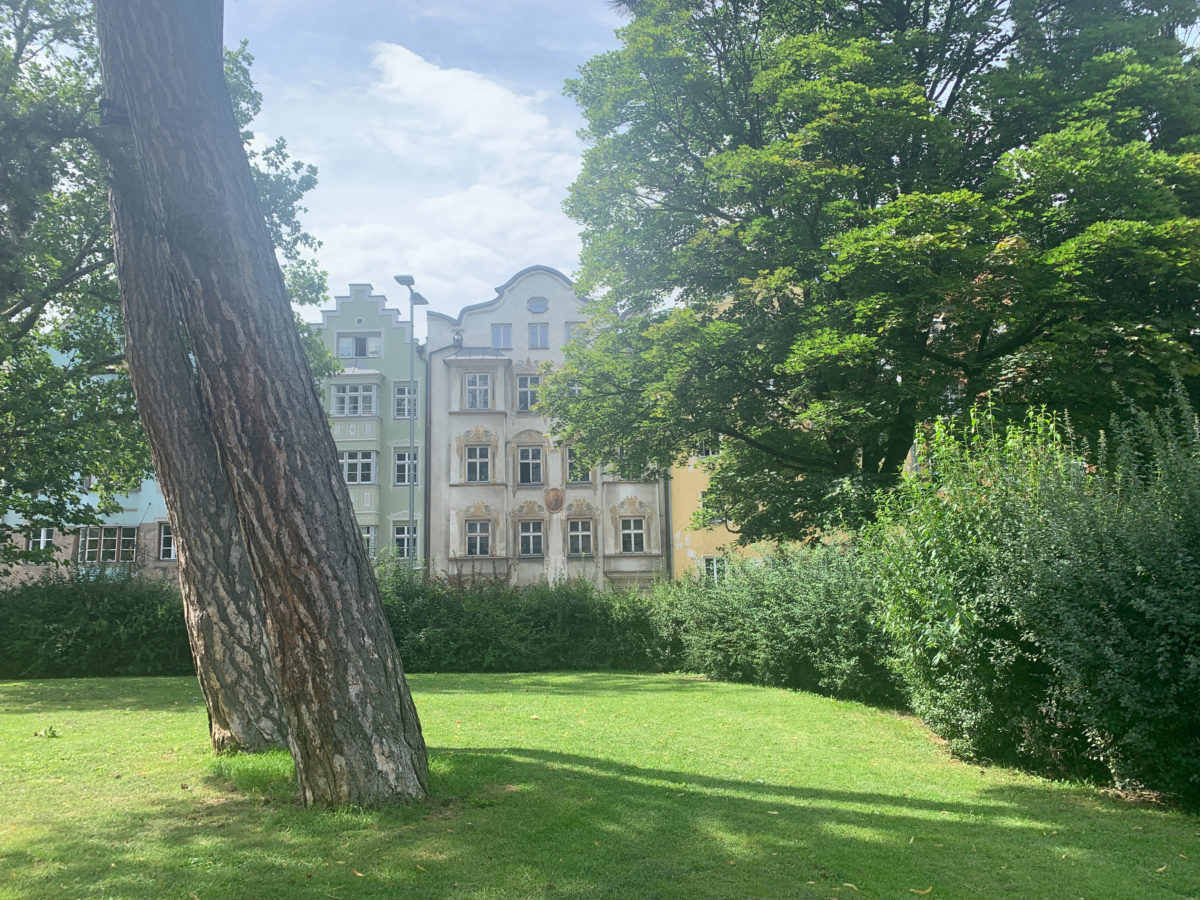
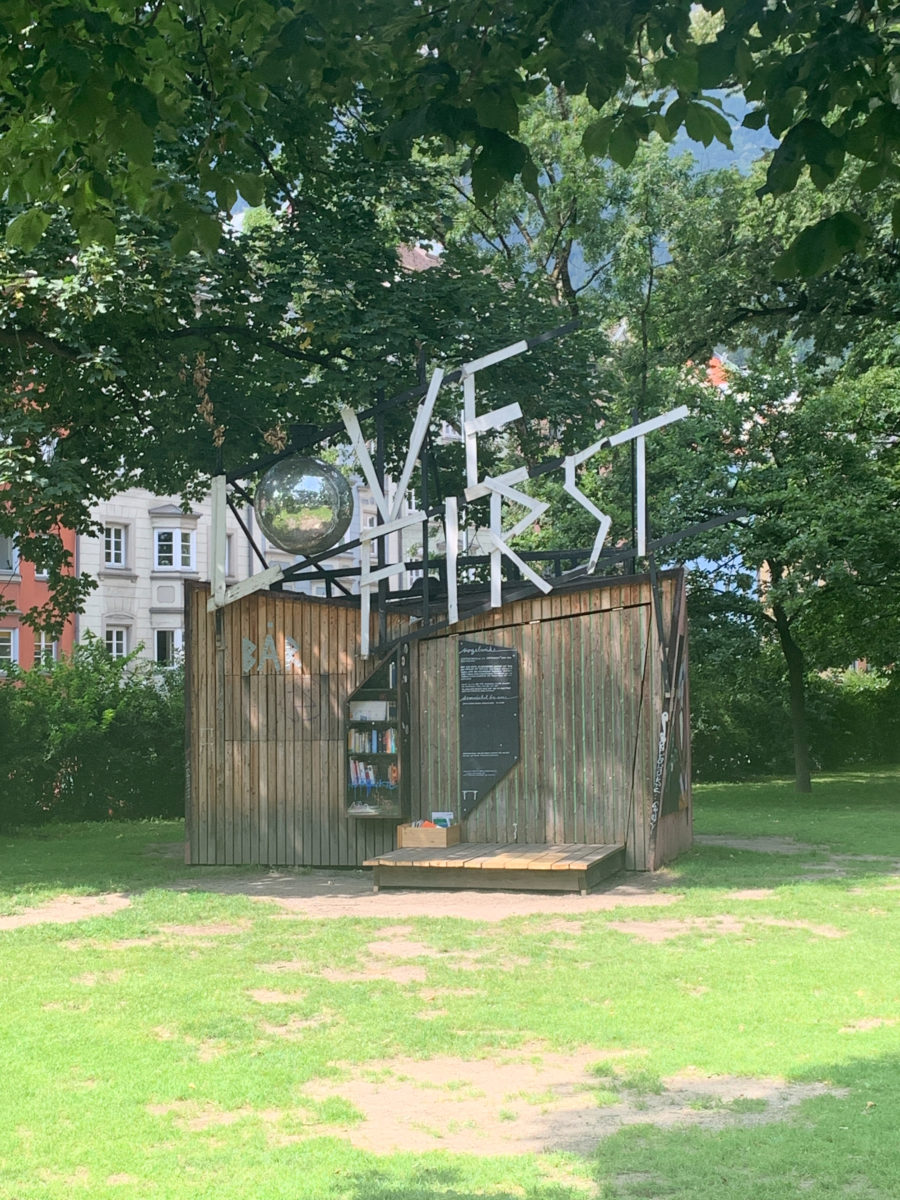

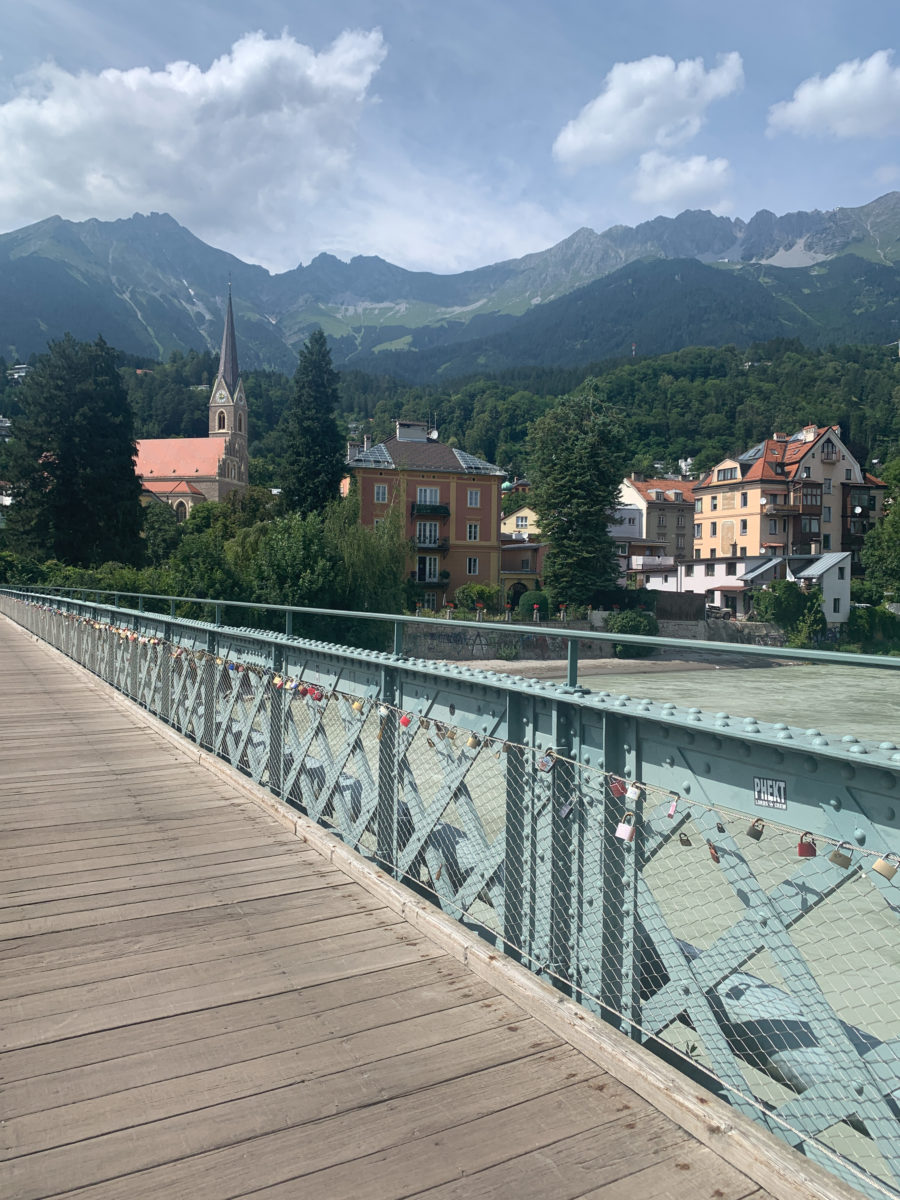
The imperial palace of Hofburg
As the weather was getting worse, I decided to visit the imperial palace, called Hofburg. Having visited the one in Vienna, where the imperial court resided, I was surprised to discover the vast past of the one in Innsbruck and the history that surrounds it.
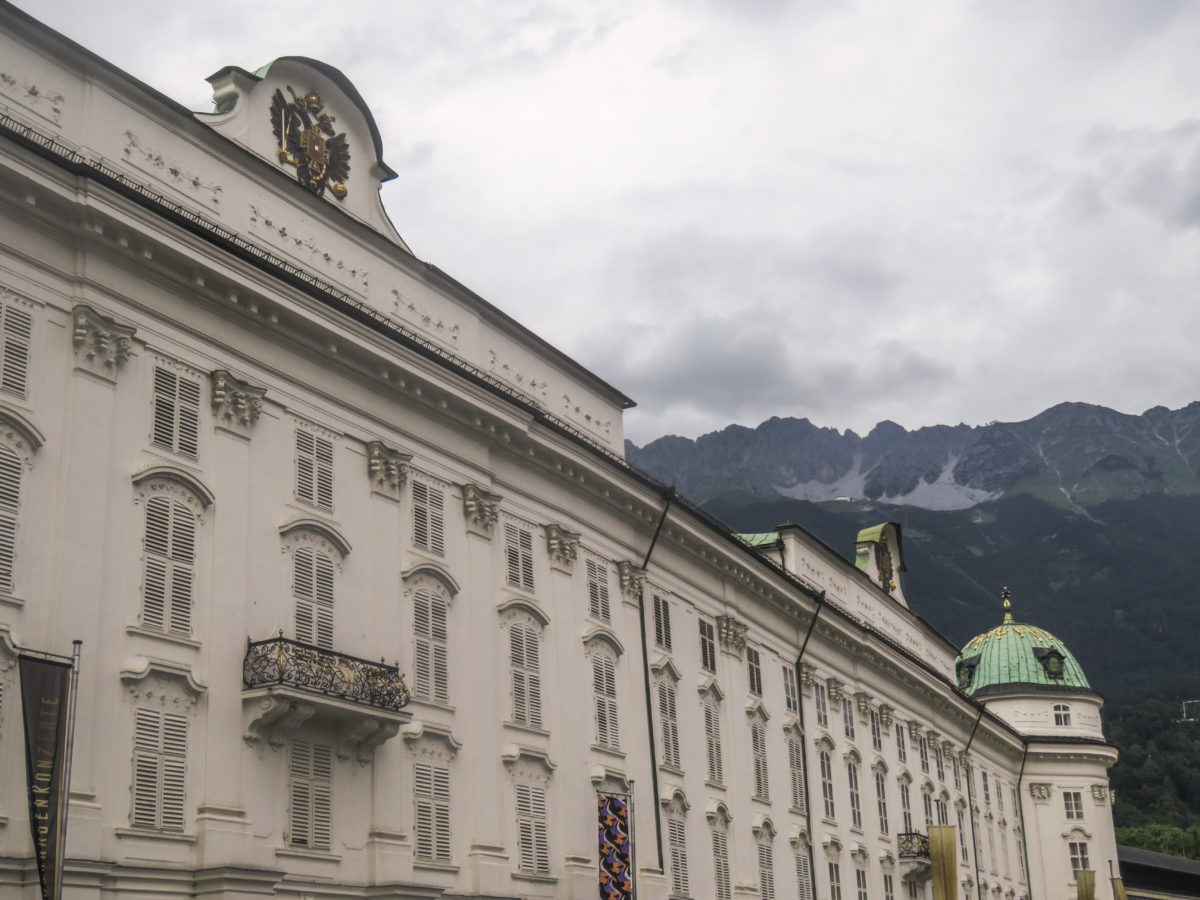
As with any imperial palace from the time of the Holy Roman Empire, it is imposing in its presence and grace. If in everyday life, I like simplicity and decorate my environment in a sober way, I confess that I greatly admire all this pomp, linked to the rococo. If I undertook this train trip to Austria in the first place, it was to go to Admont to discover the most beautiful and charged abbey library.
We owe this fabulous rococo but also baroque palace to Maria Theresa of Austria. Indeed, she decided to destroy the old medieval castle to realize this masterpiece on more than 5’000 m2 with notably some 400 rooms and 30 private flats.
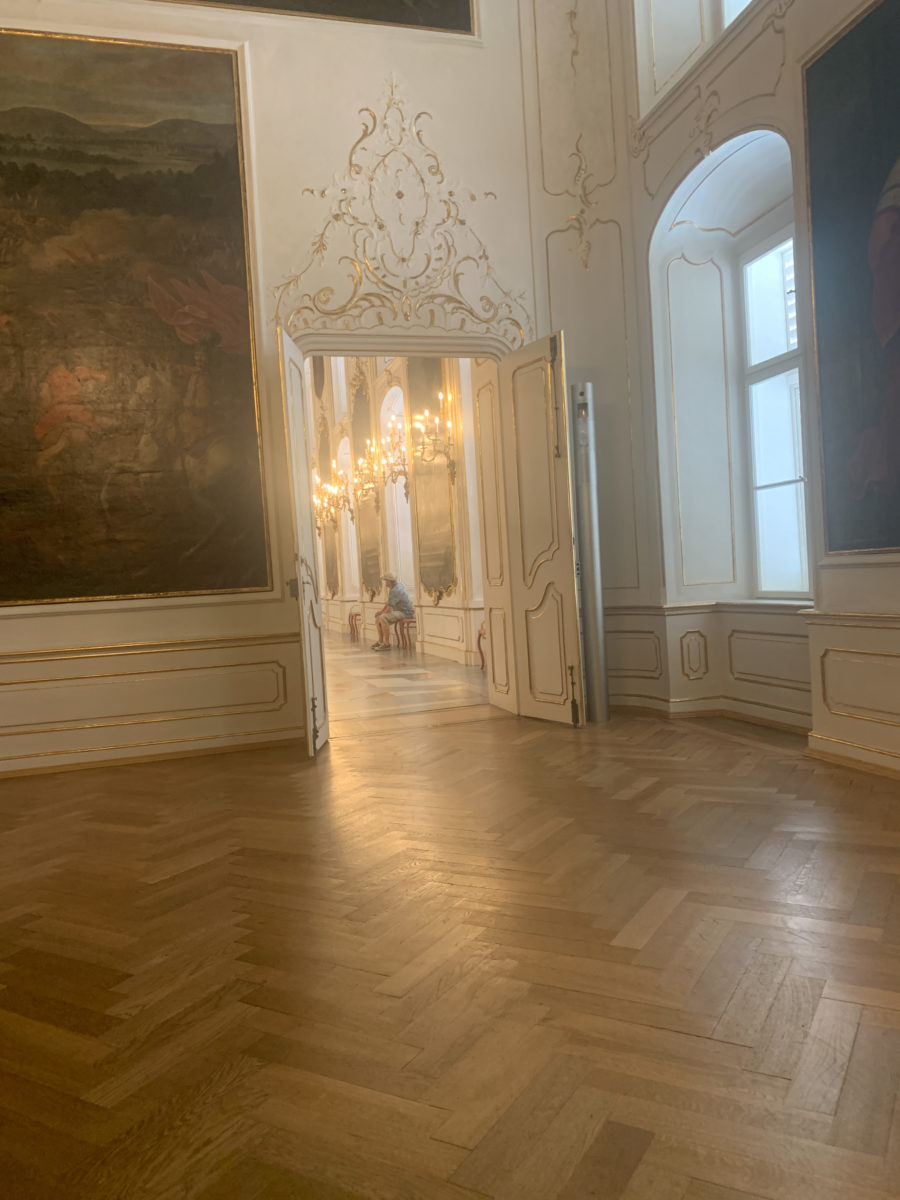
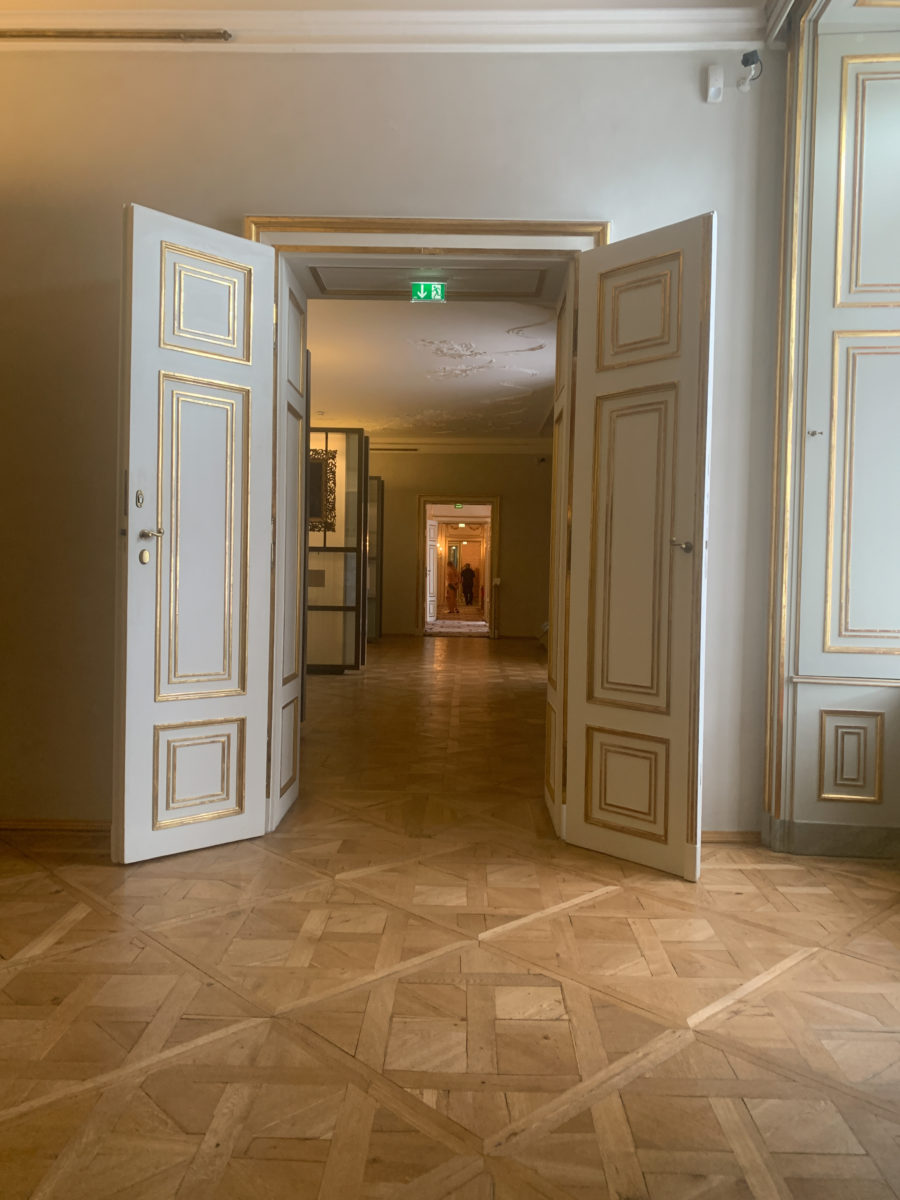
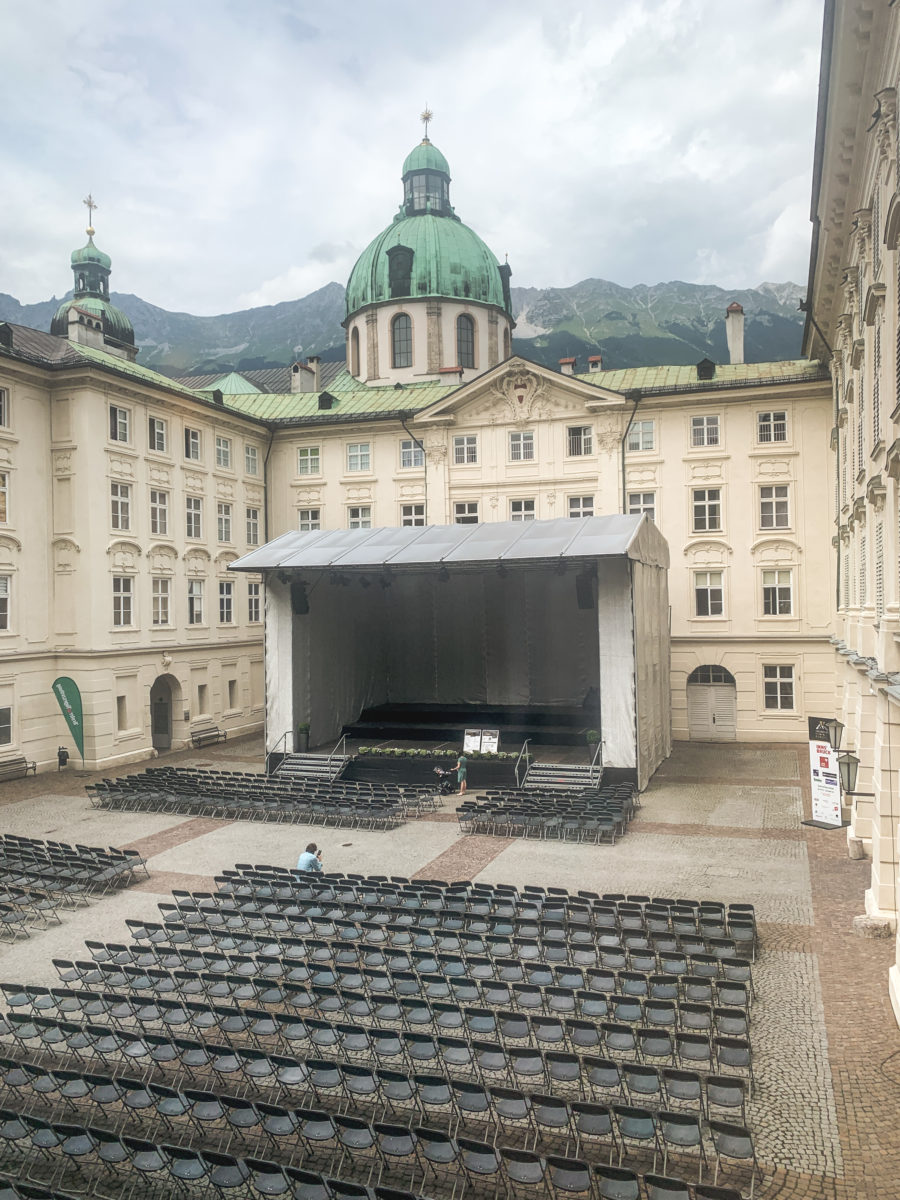
But it is true that I was bluffed by the presence of the main room which unfortunately is forbidden to photography, and I was put in order by trying to capture the beauty of the place. With a piece of 32 meters long and 13 wide, I thought I would appear unnoticed among the other visitors, but I got caught. Here is an official photograph:
And don’t miss the many other rooms in the palace, such as a blue bathroom, a green bedroom and a pink restroom. It seems that at the time, colour combinations were not in fashion. And then, all these rooms illustrate only too well how power and wealth were displayed at the time of the Habsburgs.
Let yourself be guided by nature, accessible from everywhere
What I liked most about Innsbruck is its natural setting, which is dazzling on all sides. Whether you look to the right, to the left, from the front or from the back, a piece of nature will be revealed and allows everyone not to feel oppressed by city life. Although the mountain itself can give this feeling of oppression, as Innsbruck is located in a valley, it rather appears to be watching over the Austrian city.
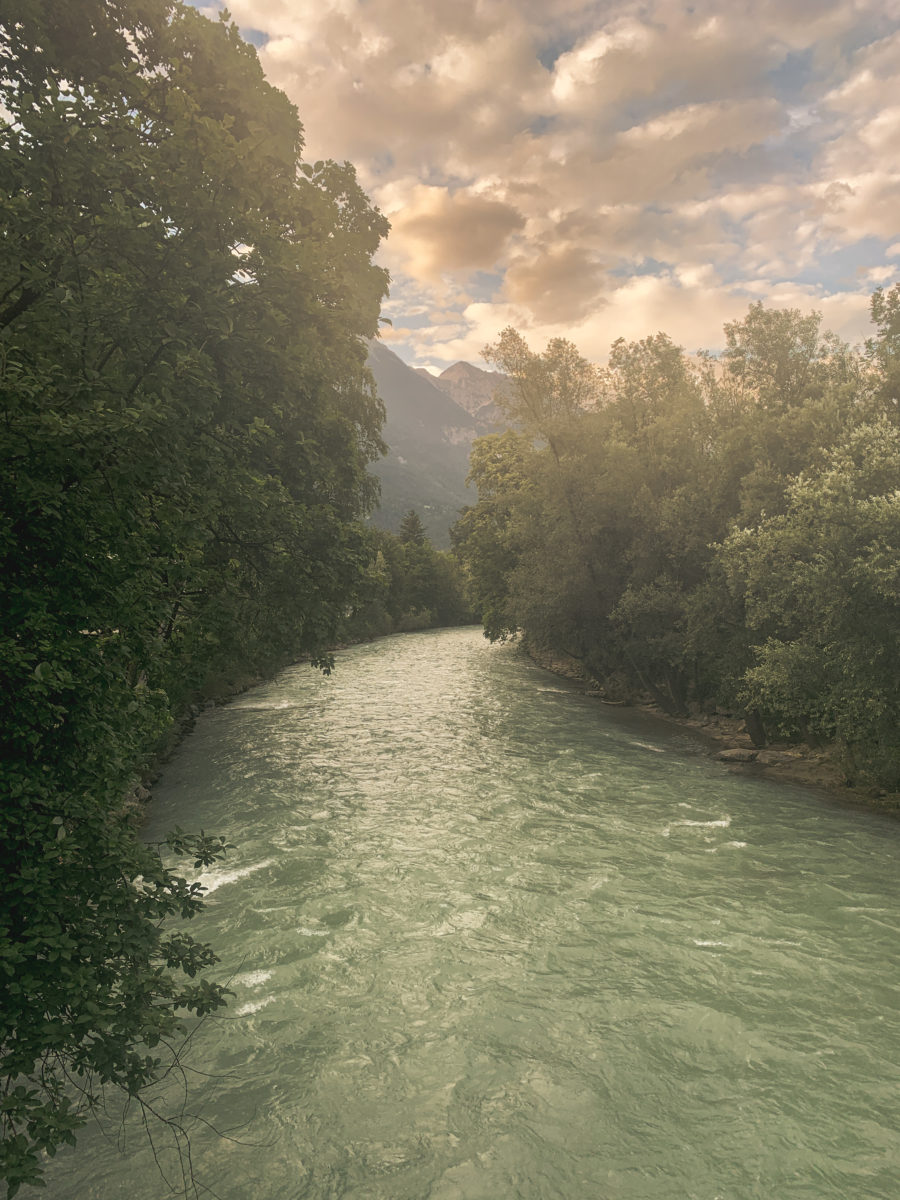
Hofgarten
I was just telling you about the Hofburg. Every imperial palace had a royal garden to let the sovereigns enjoy a green corner in all tranquillity. It was also a place of pomp and knowledge to show the court the splendour of various plants, trees or small pavilions for rest.
Thus, Hofgarten is an idyllic garden located a few steps away from the Hofburg. A visit to Innsbruck would not be complete without a stroll through this 600-year-old listed garden.
Well maintained, it is a popular meeting place for locals and visitors alike. A simple walk, rest on one of the many benches or reading a book in the shade of a weeping willow is a great way to relax on a sunny afternoon.
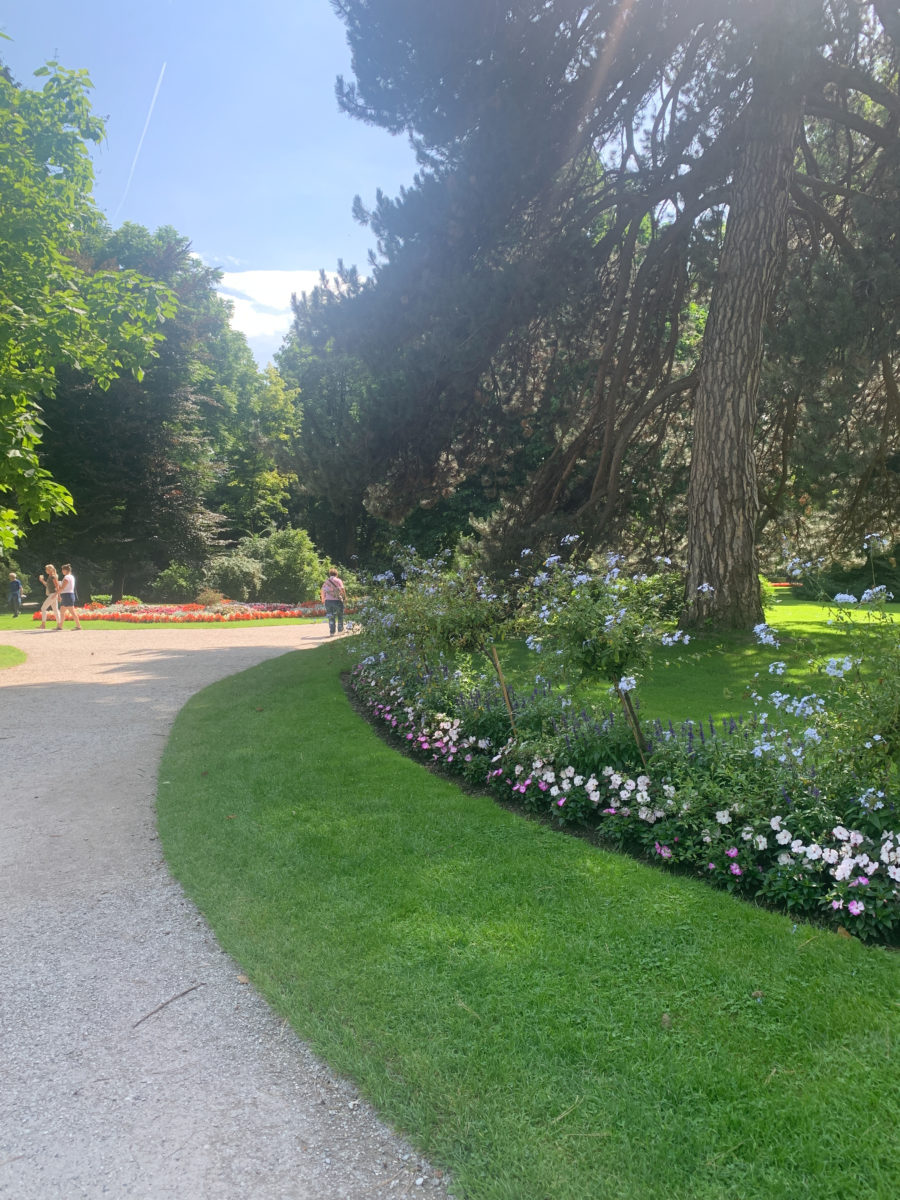
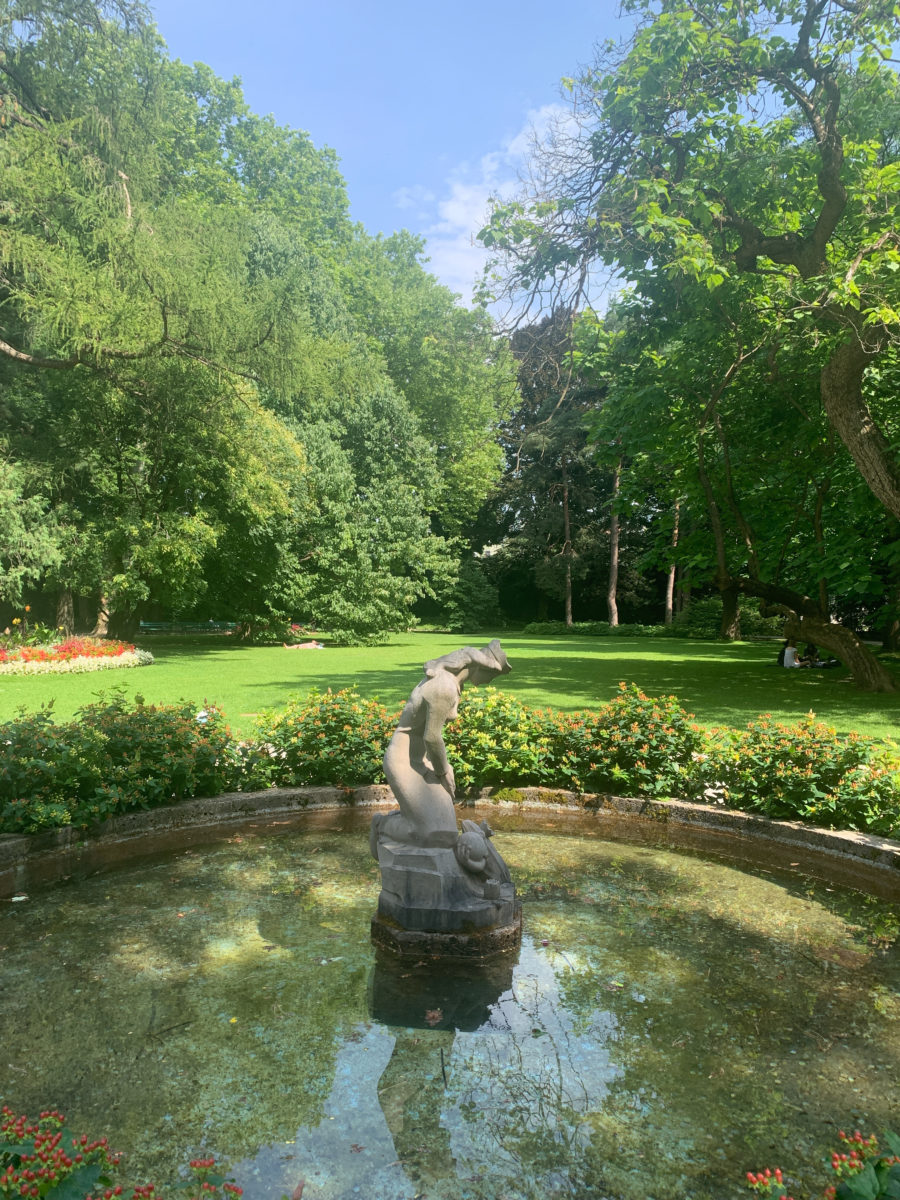
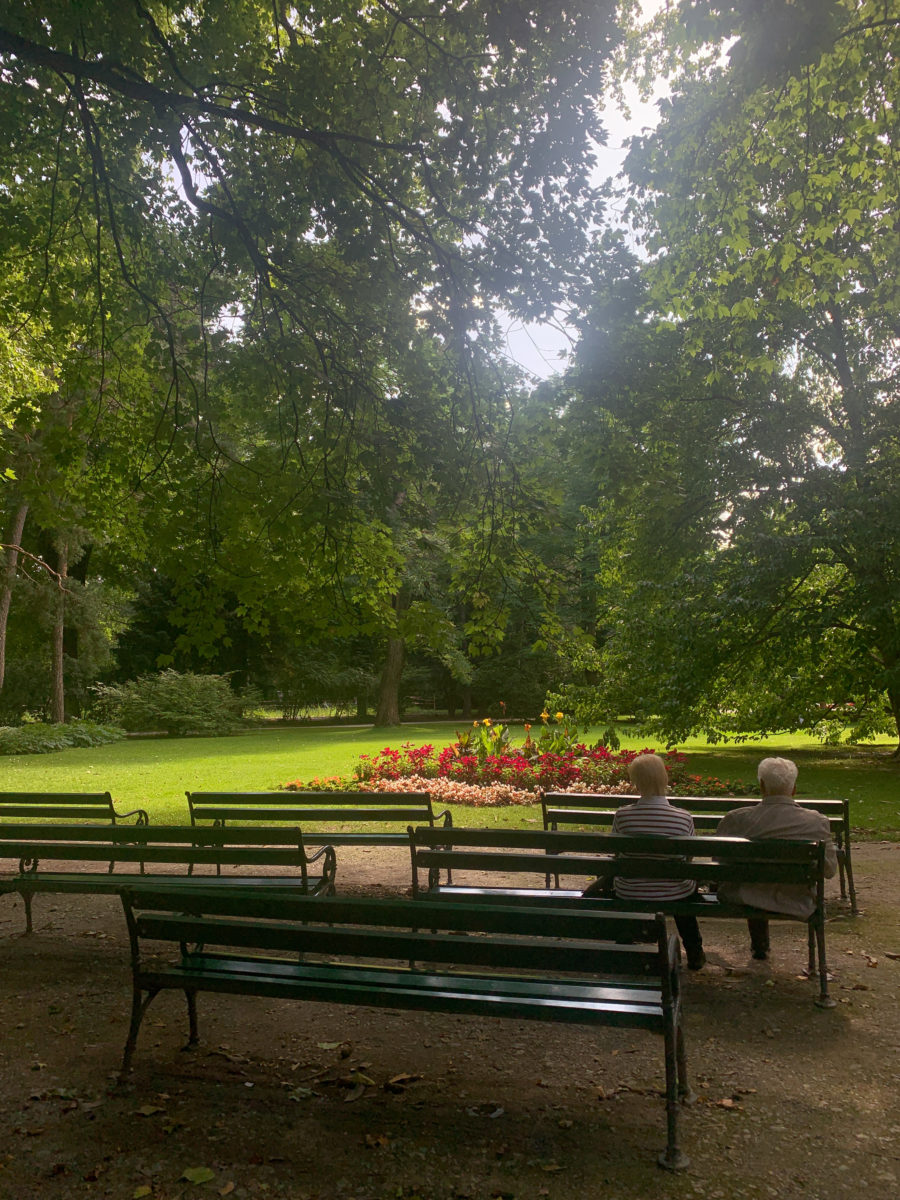
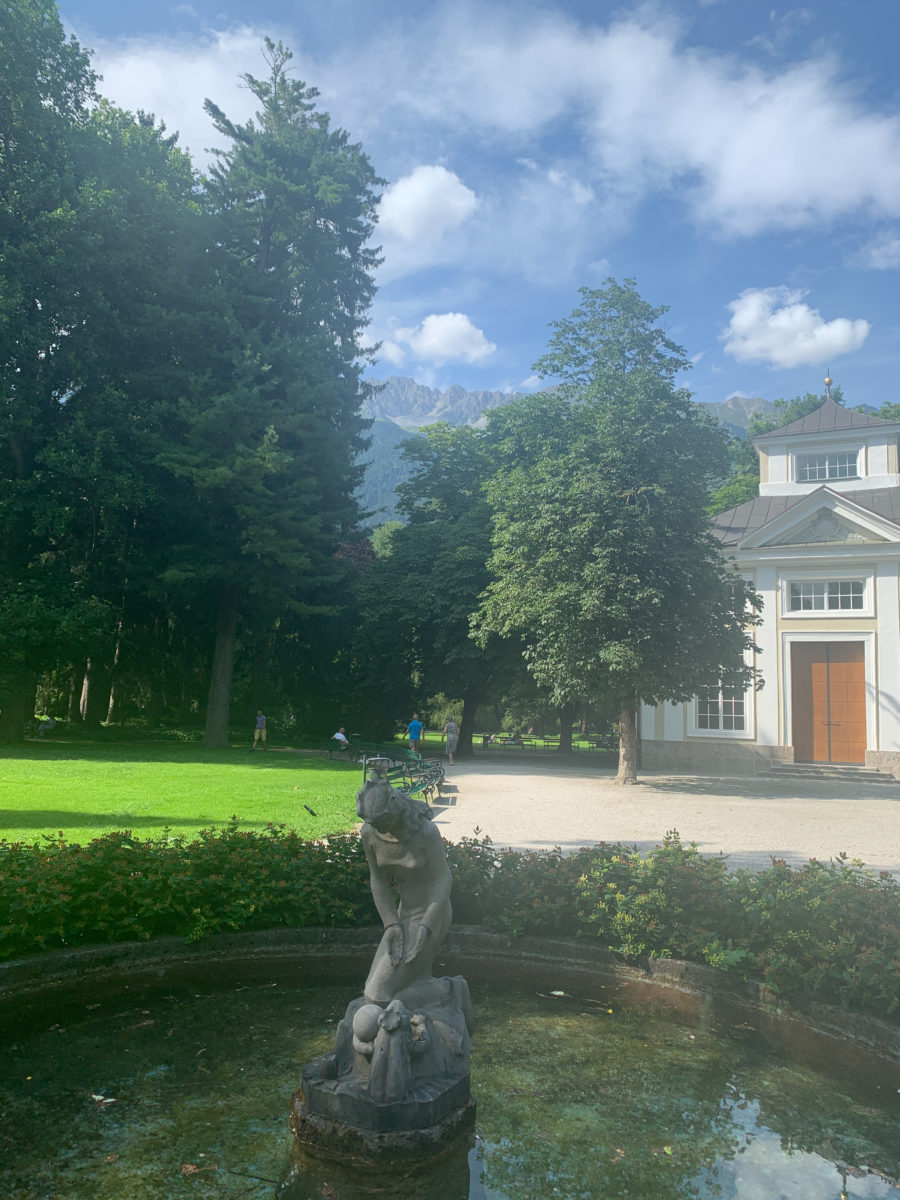
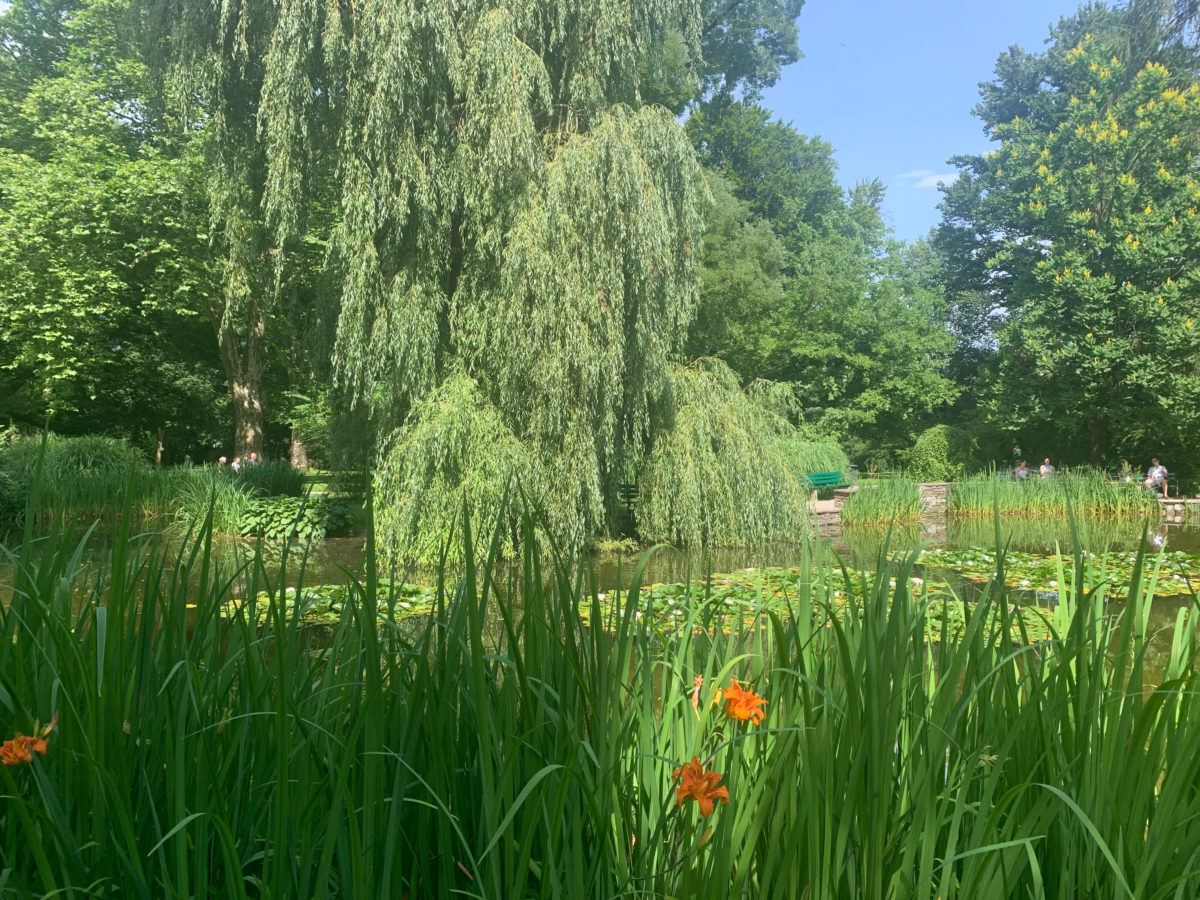
Nordkette, Top of Innsbruck
This is certainly the main attraction of Innsbruck: going to the Hafelekar station at 2’300m. Known as the Top of Innsbruck, in about 20 minutes, it is possible to go from the quiet valley to the resplendent peaks, sometimes still covered with snow.
The experience begins with the modern Hungerburgbahn funicular railway at the Congress station next to the Hofburg. The architecture of the funicular was designed by the star architect Zaha Hadid, who was inspired by glaciers, ice and snow movements.
It will take you from the old town of Innsbruck to Hungerburg. There you will switch from the funicular to the cable car. By the way, before you get on the cable car, take the time to admire the view from the front of the station, which I did, since on the way there I decided to take the bus (which is at the train station and not at the Congress station) to the Hungerburg area. If you do this, you have to take the J bus to get out at the terminus: Nordkette stop.
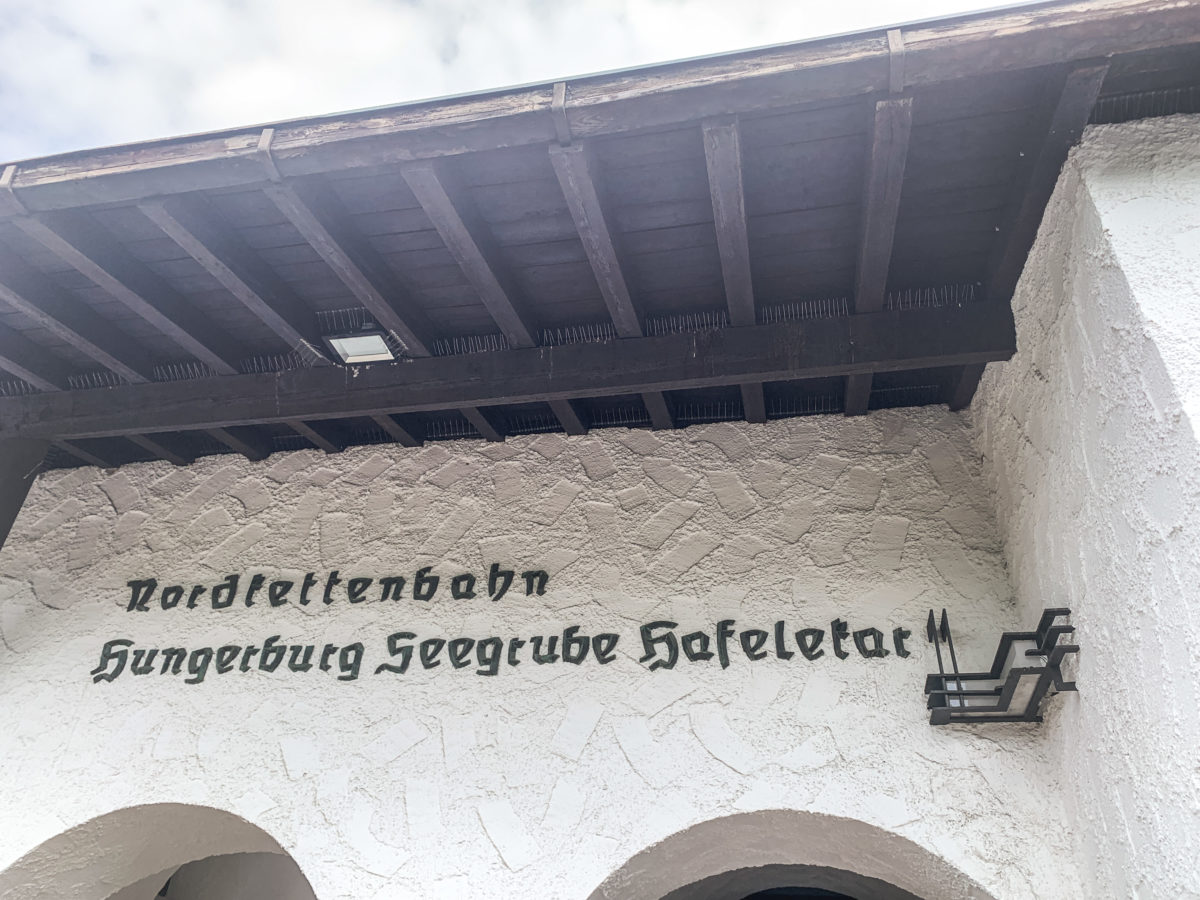
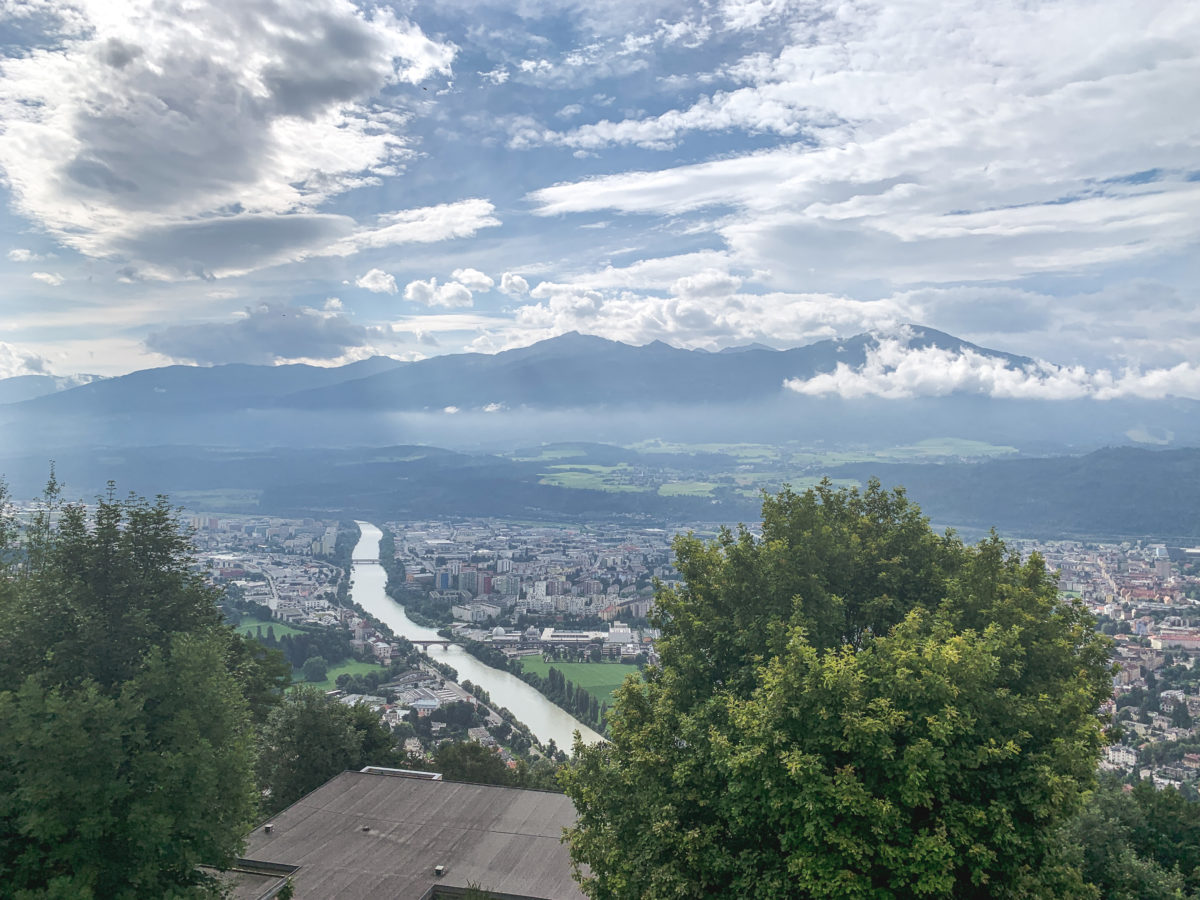

Then you will take the Seegrubenbahn gondola to the Seegrube at 1’905 m. This is a small plateau in the middle of the rugged Karwendel mountains. The mountain station of the Seegrubenbahn is located here, as well as the valley station of the Hafelekarbahn. On my ascent, I immediately switched to the cable car to Hafelekar. But you can also enjoy the terrace there before venturing to the peaks. However, on my getaway, the weather was a bit temperamental and I preferred to go straight to the top before the storm. The restaurant serves Tyrolean cuisine and offers a sunny location, normally.
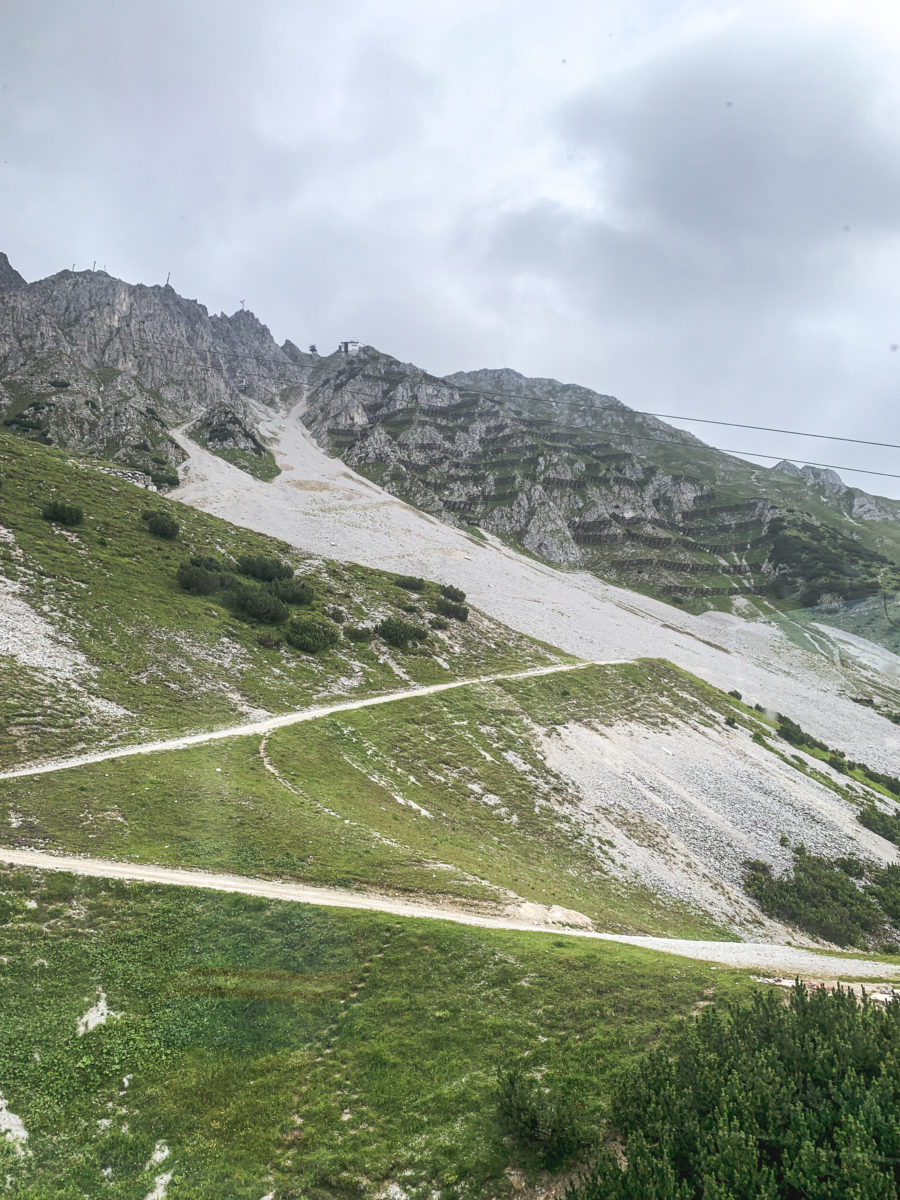
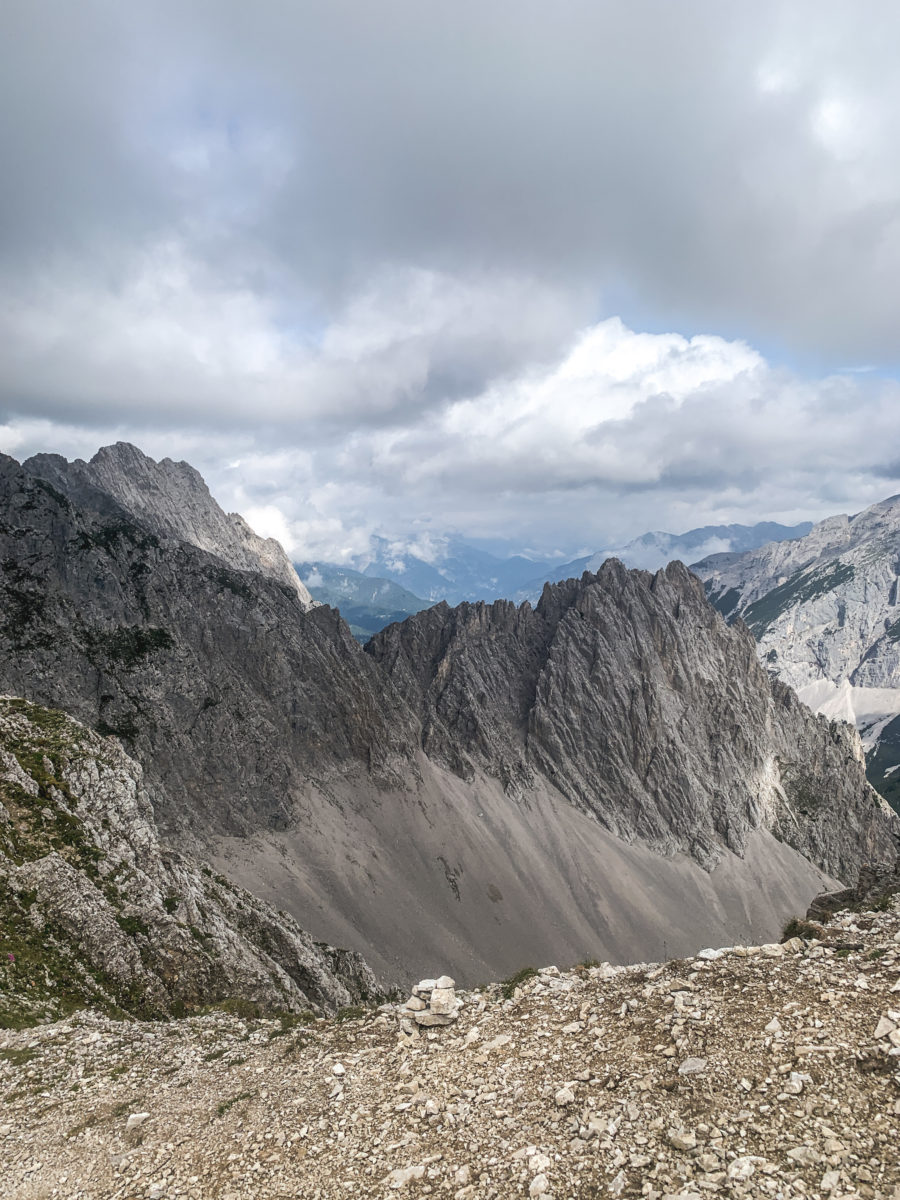
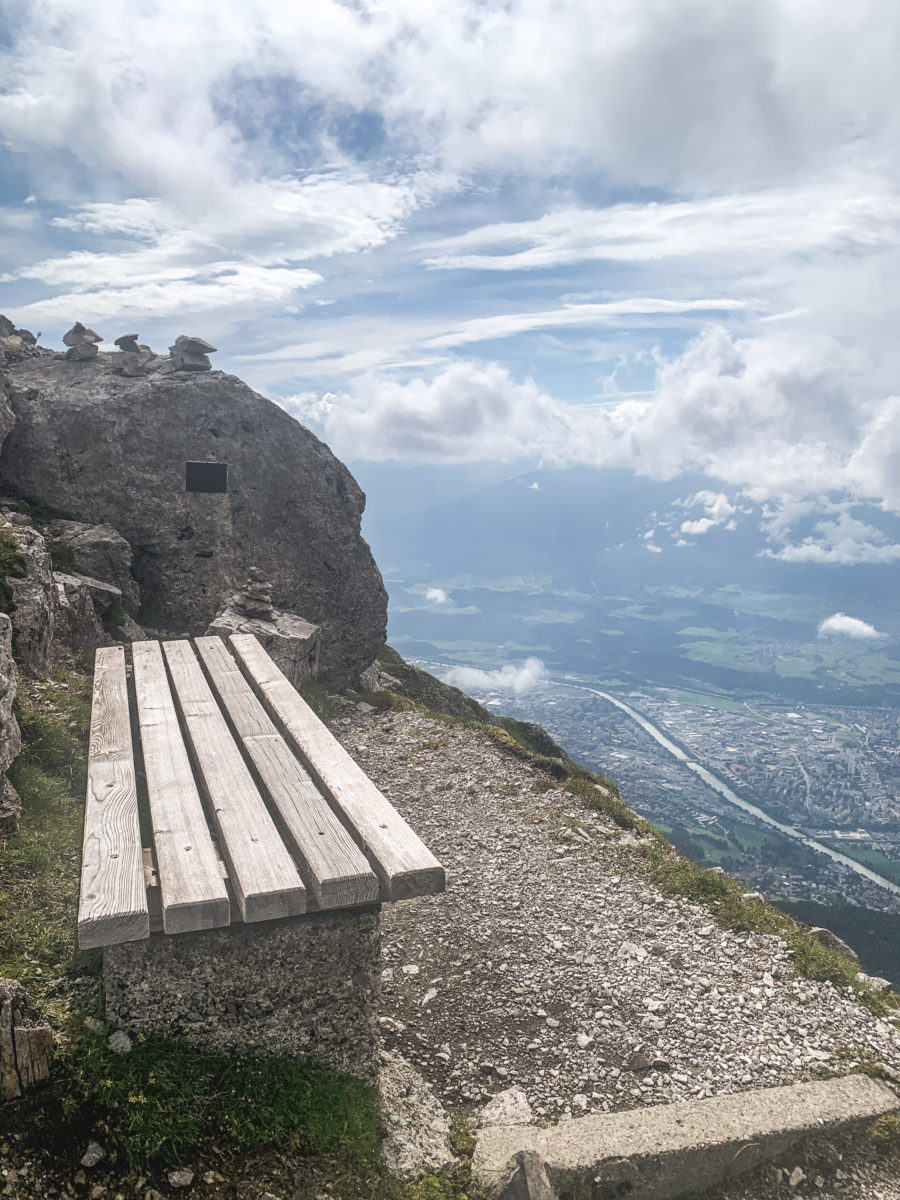
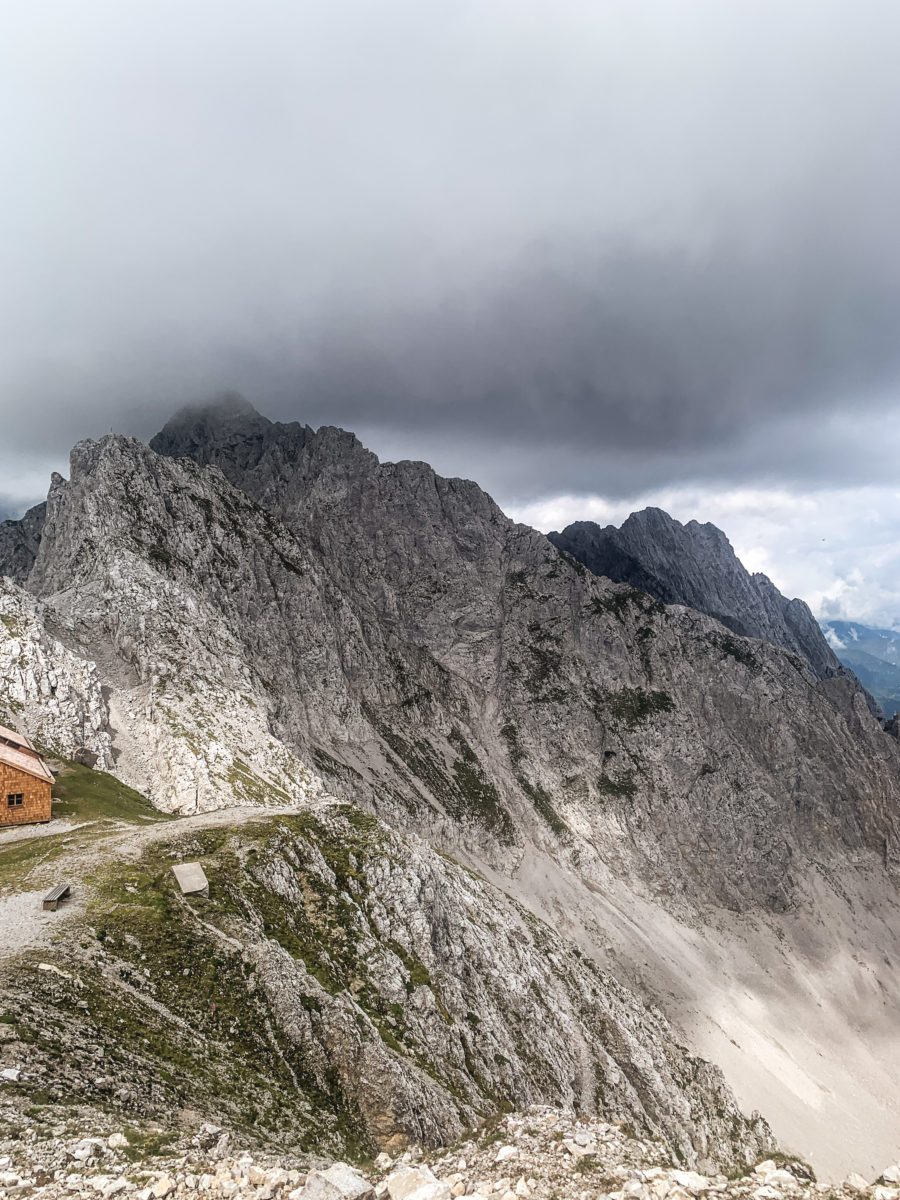
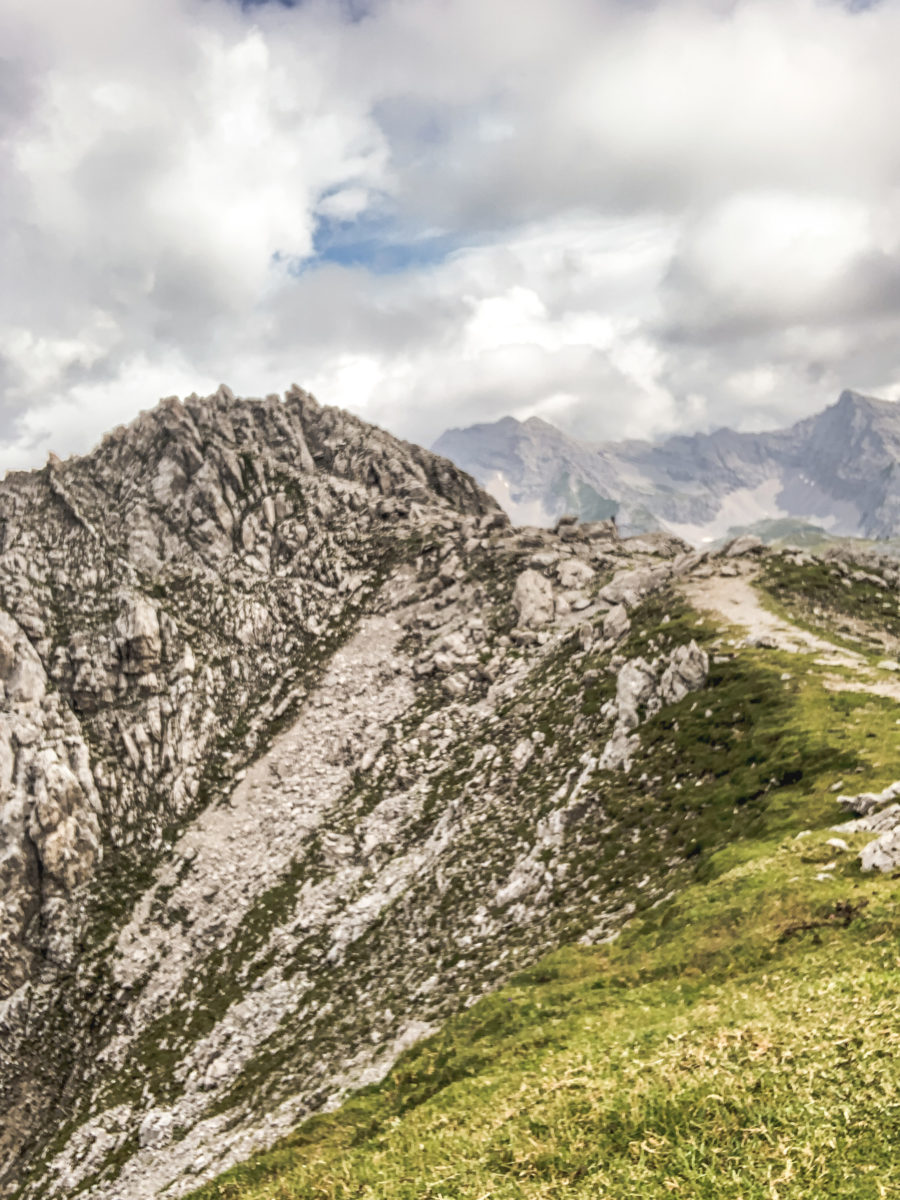
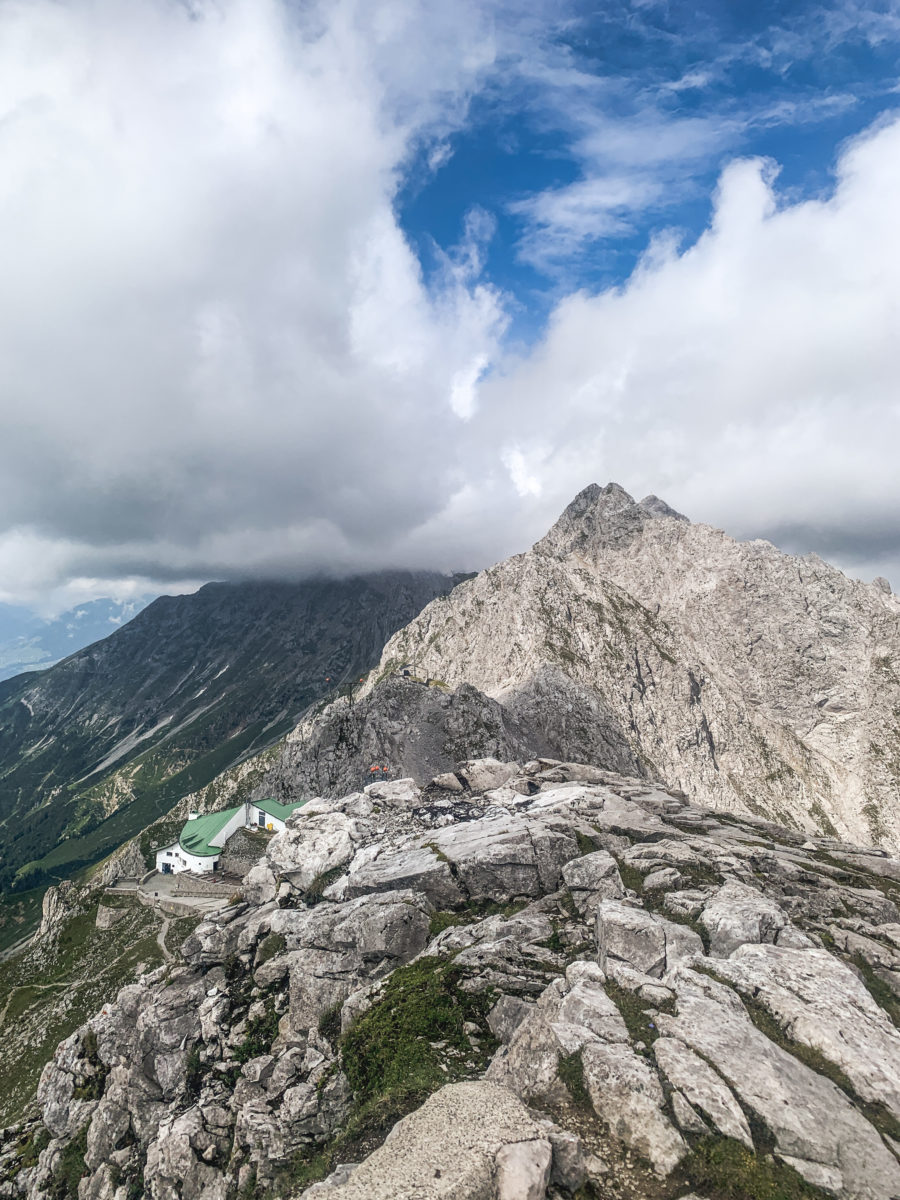
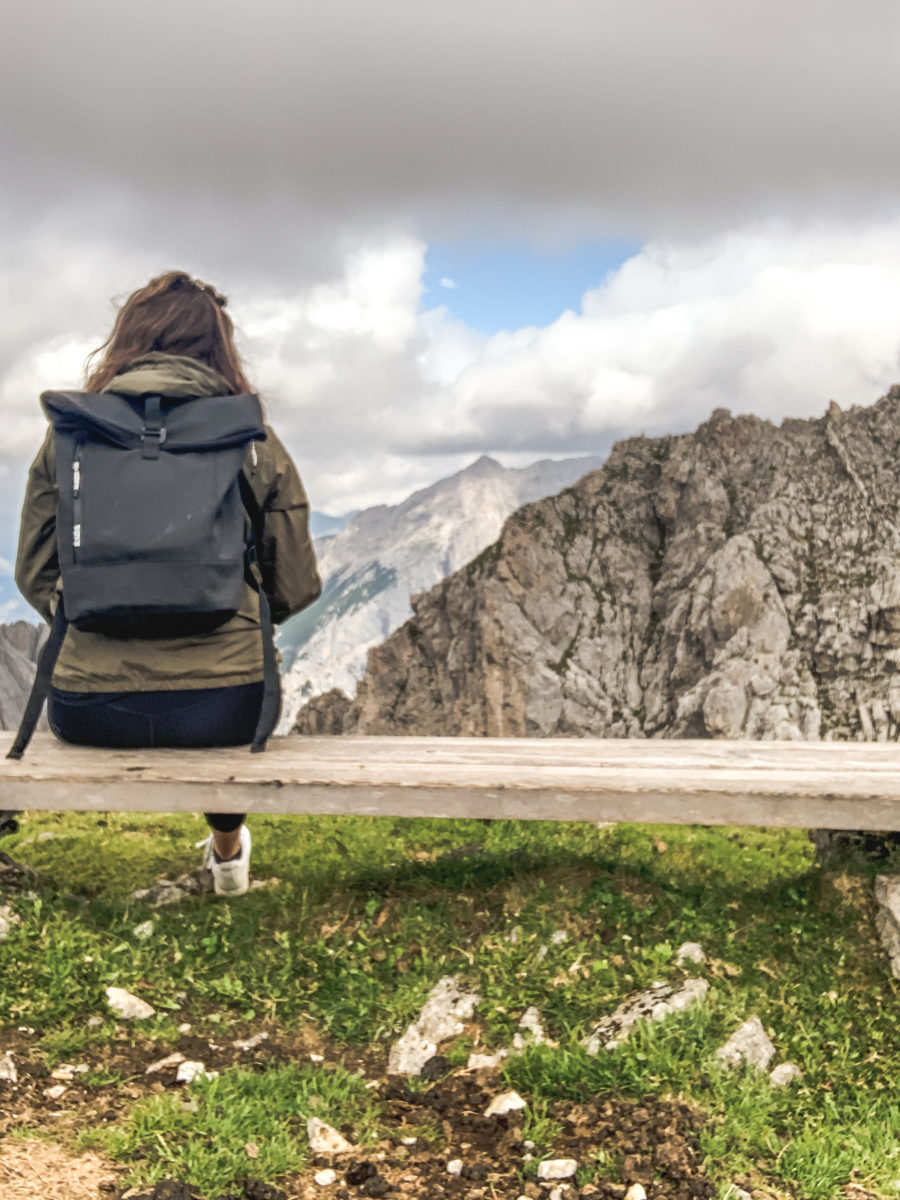
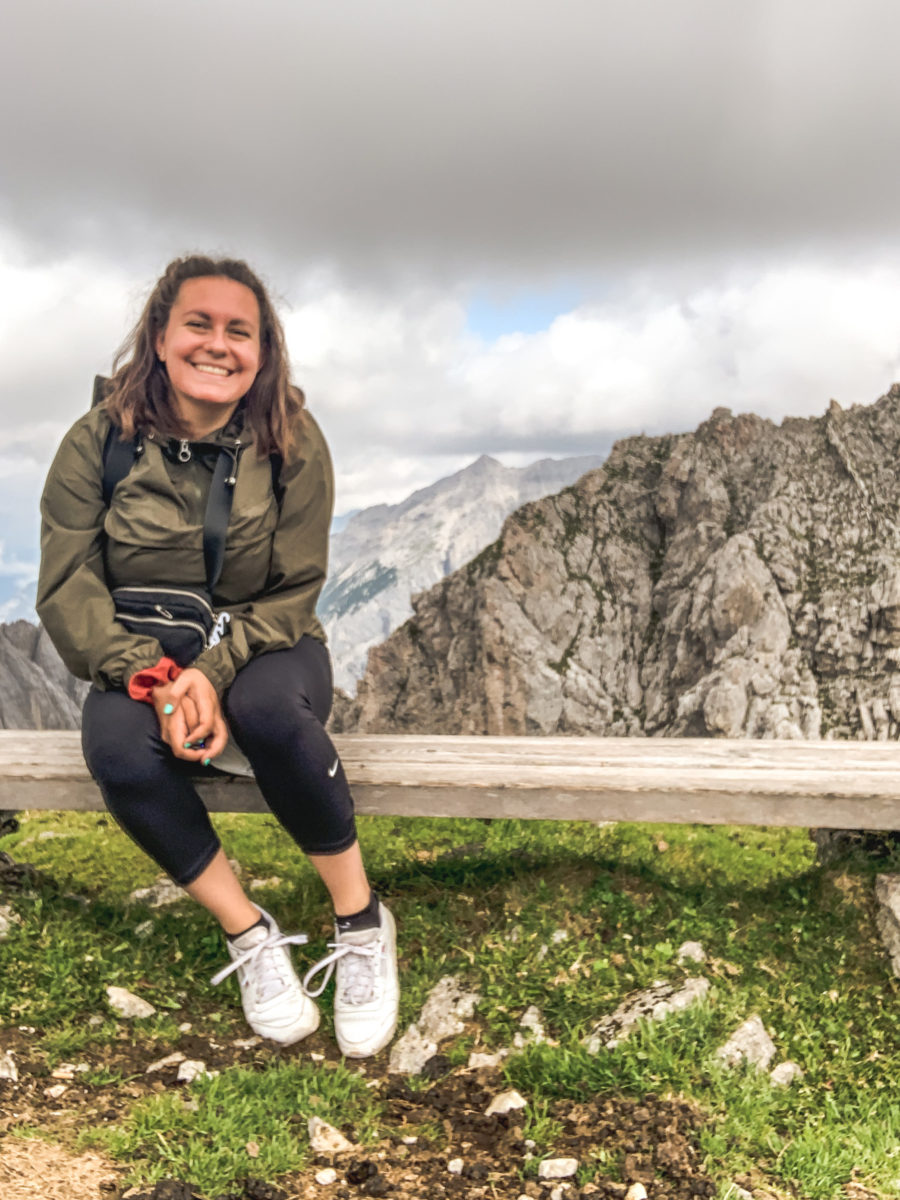
With the second gondola, you can effortlessly reach an altitude of 2’300 meters. In the end, it is an easily accessible place for all those who want to go up in the mountains without hiking. It is not even necessary to have walking shoes (I had forgotten mine), although the surrounding terrain seems steep and uneven. From this point on, I simply advise you to explore while admiring an incredible view of the Inn valley.

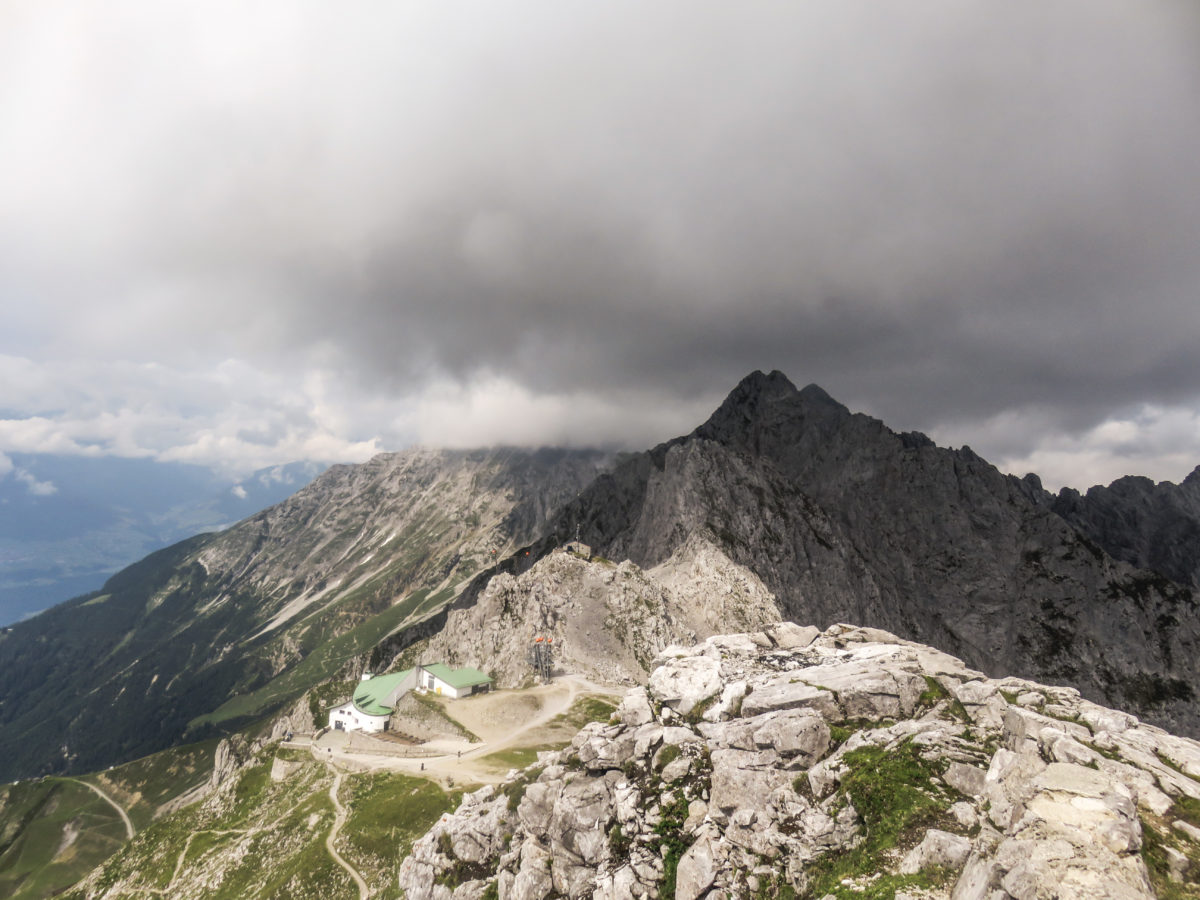
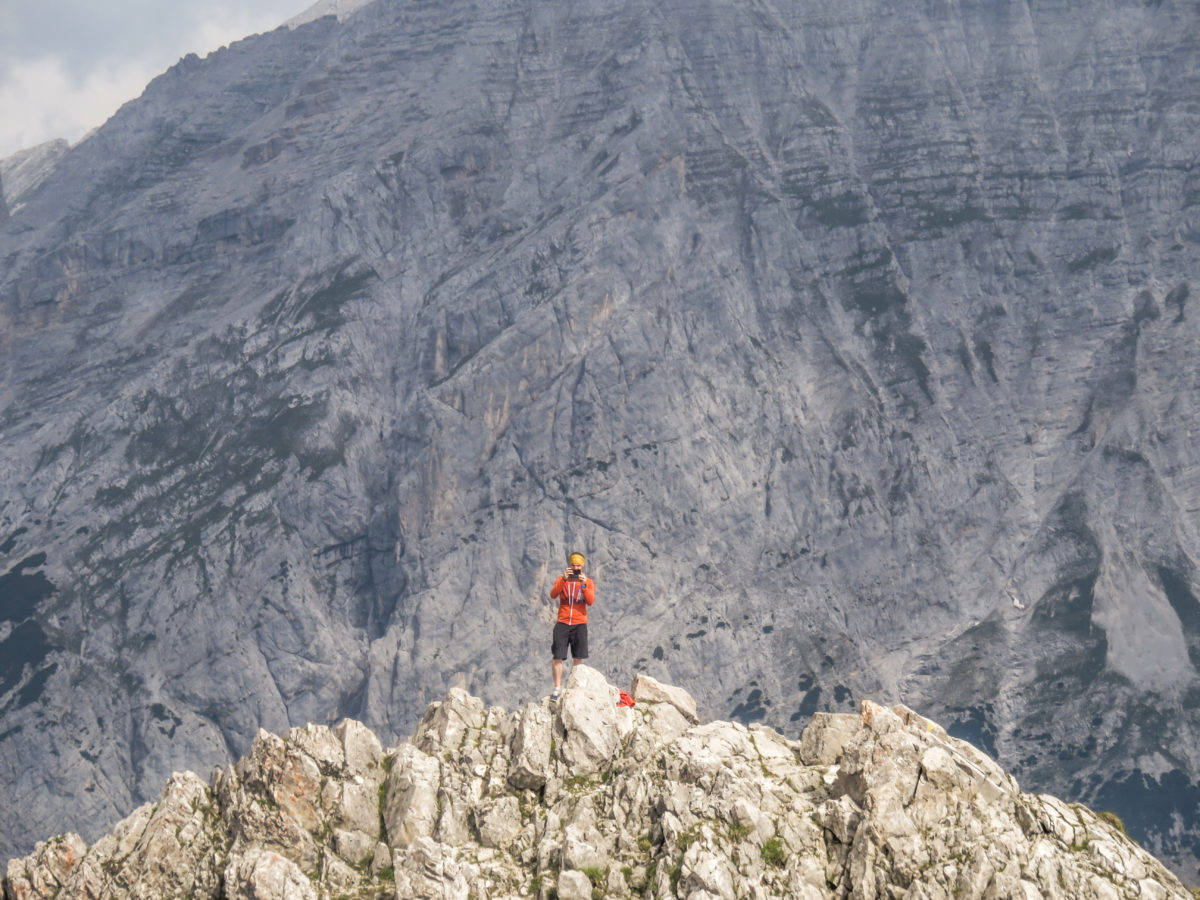

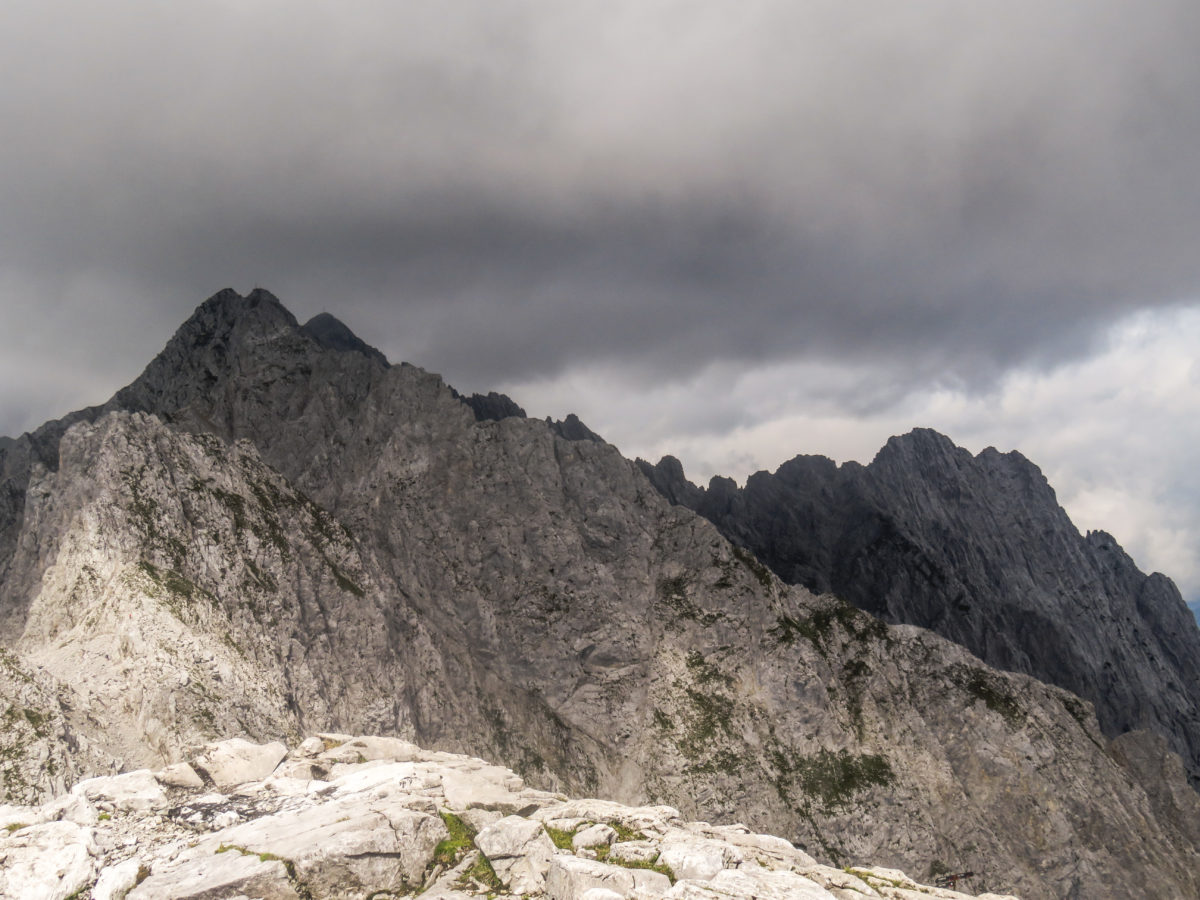


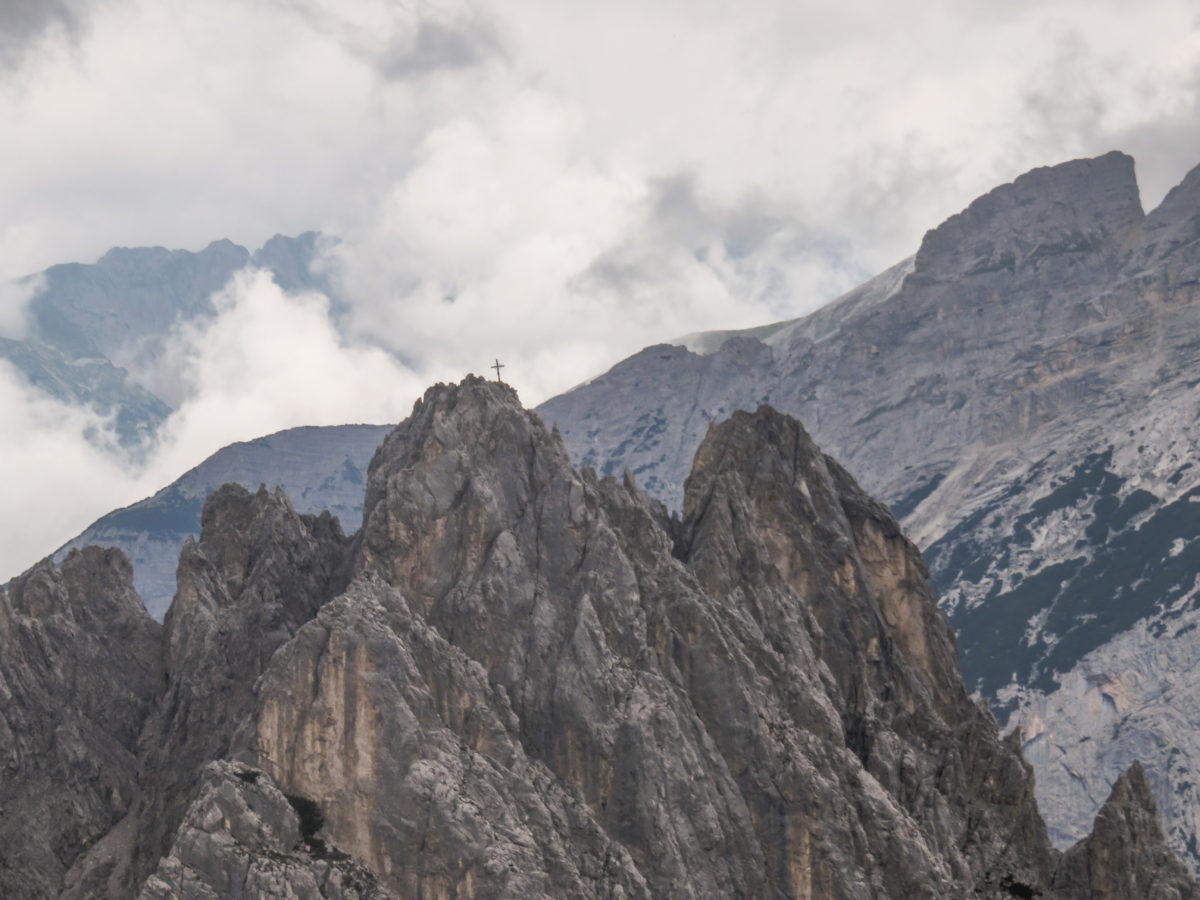
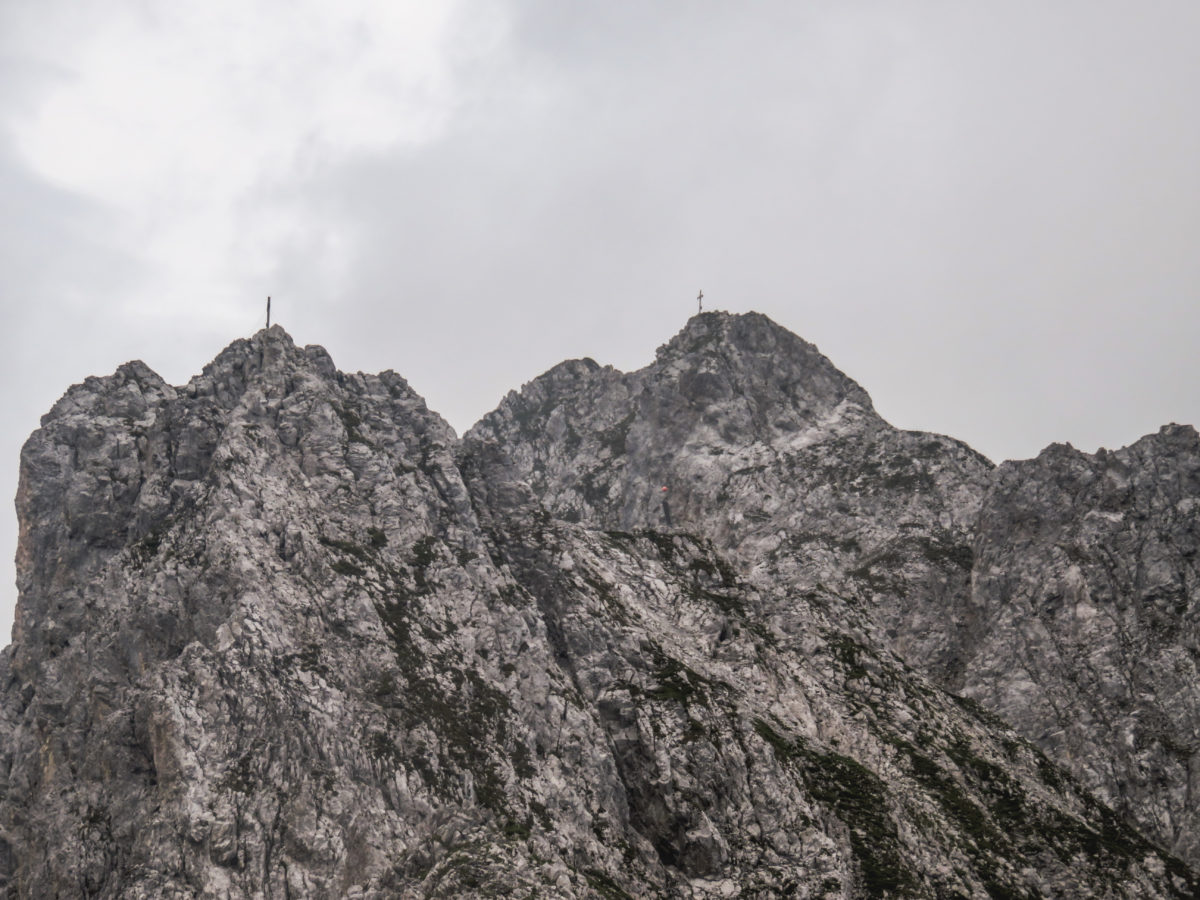
Several viewpoints are easily reachable, especially by taking a wide paved path to reach the “Karwendelblick”. I also took some paths according to my desires, without really venturing too far, not having adapted shoes, nor the time to hike in the mountain, since the rain was beginning to make itself felt.
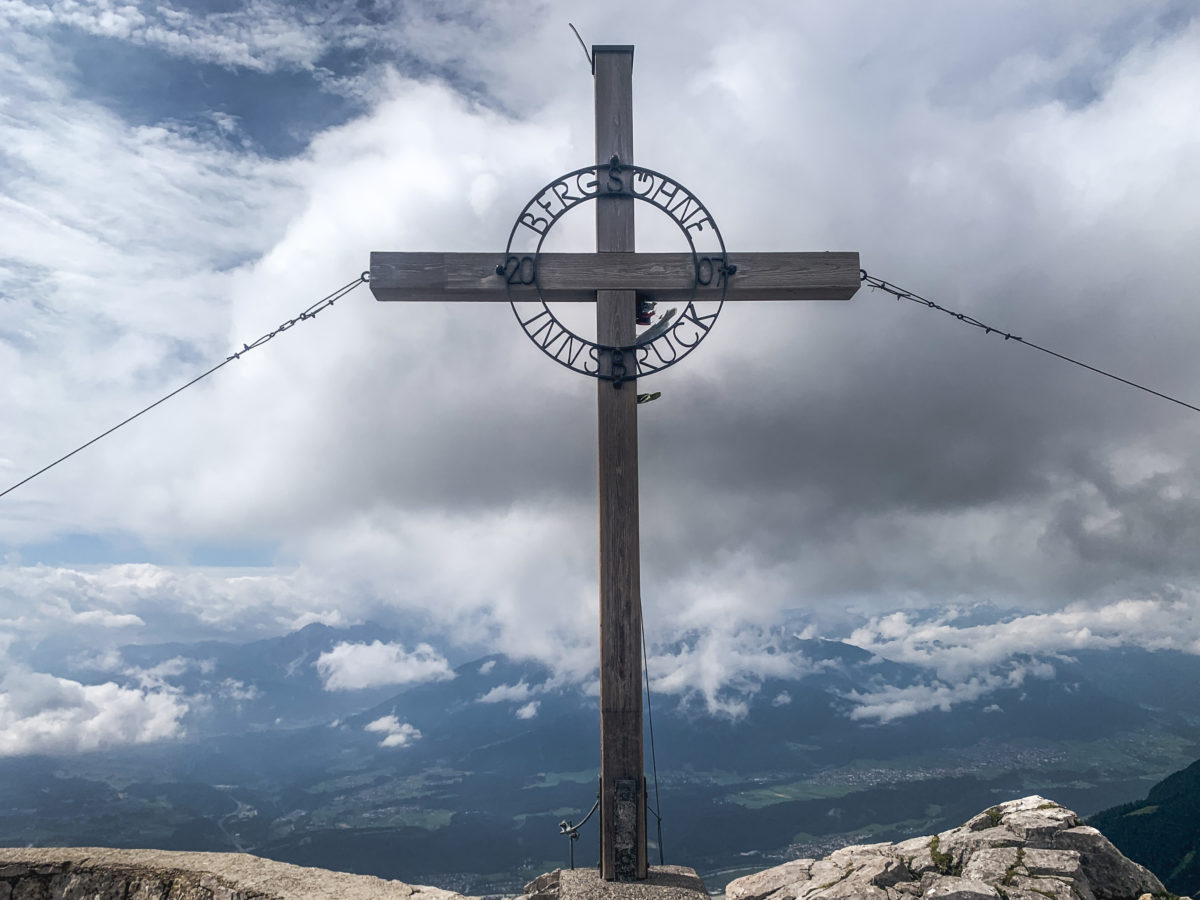

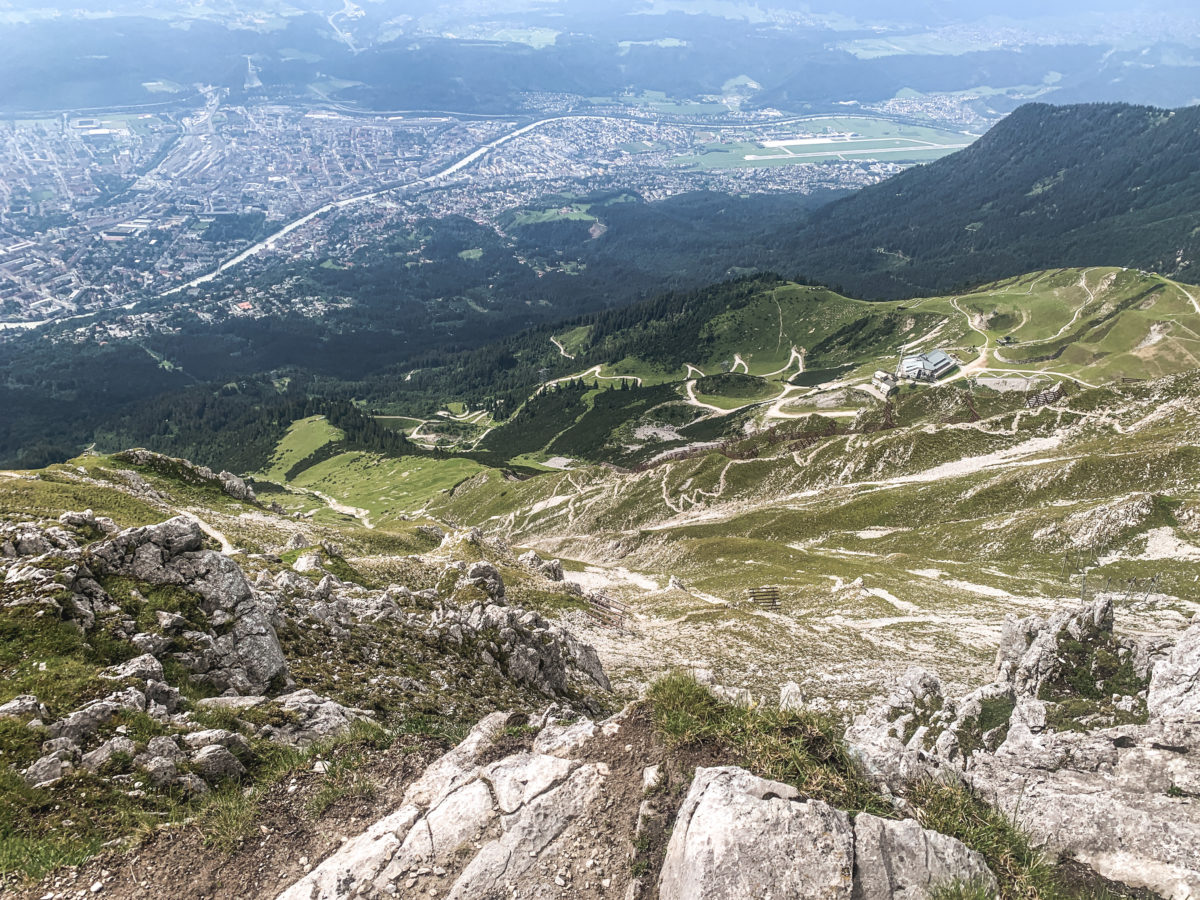
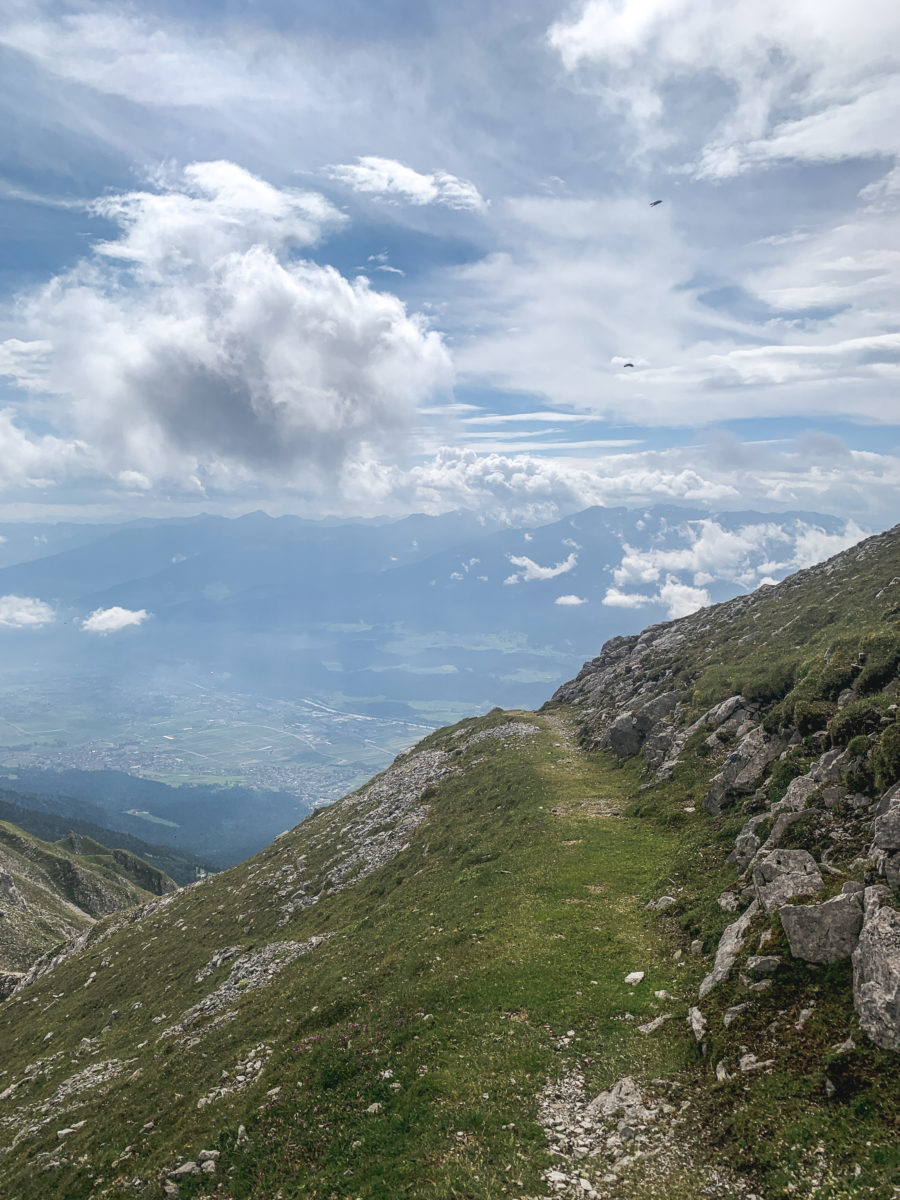

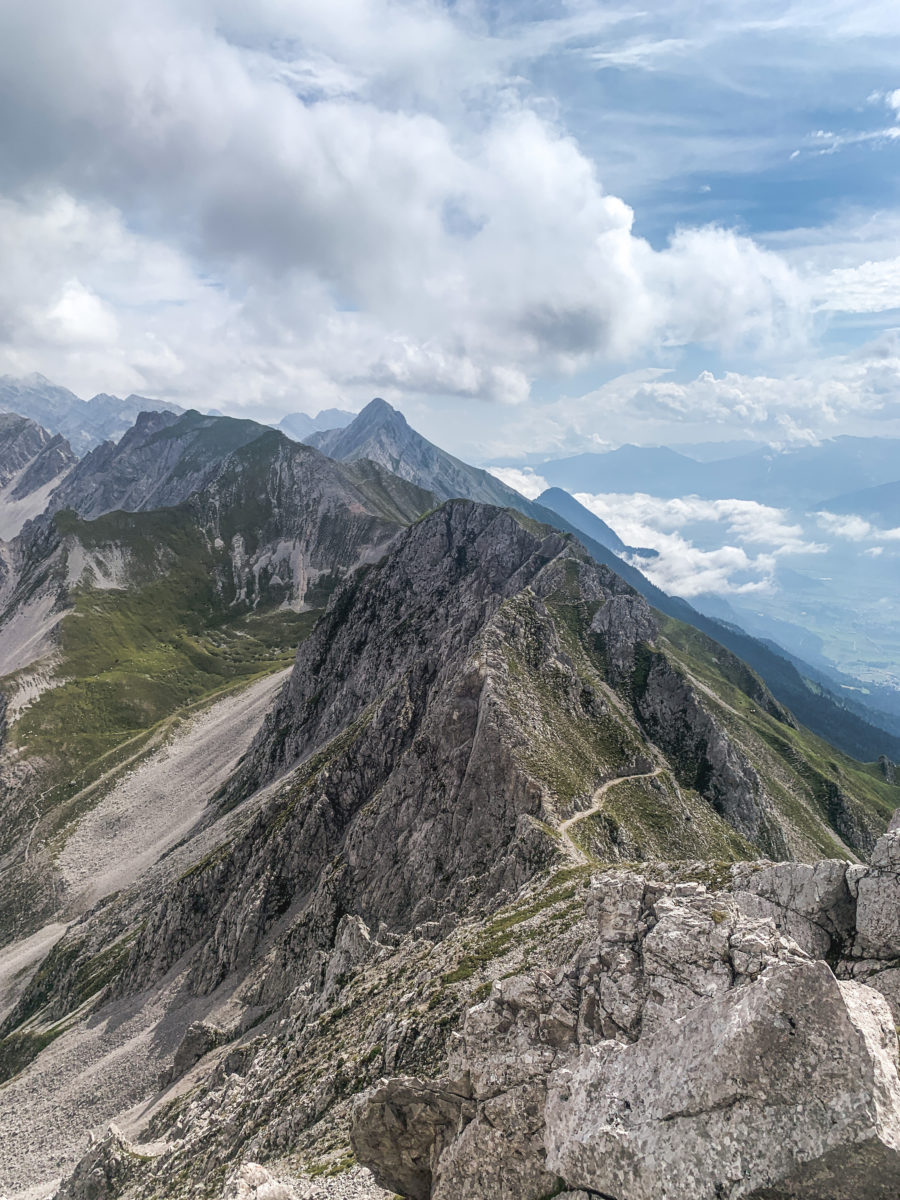
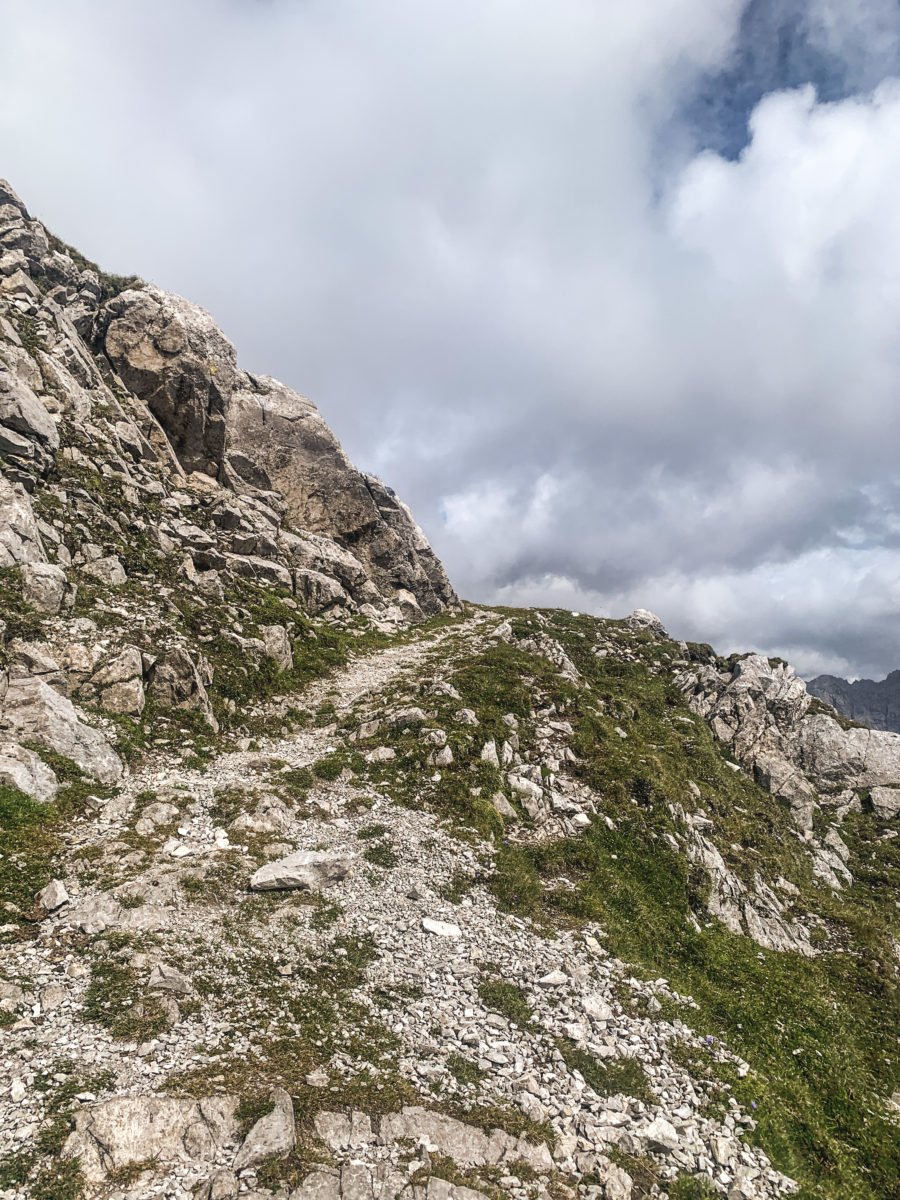

I stood for long minutes contemplating the breathtaking 360-degree view and being amazed by the landscape. The city seems so close and the surrounding mountains so far away while I’m on top of one of them. The air is cool, so you should remember to take a k-way.
Despite the cool temperature, I find myself staying for an hour contemplating the rugged rock on my right, the few traces of eternal snow on my left or the clouds threatening dangerously the peaks. At my feet, Innsbruck shines around the Inn river, in the distance the ski jump that will be my next stop. I feel good, I’m getting used to the mountain again, after a few months without having climbed it. I think I could have spent the whole day there, but noon was coming and hunger was at that moment greater than the desire to stay, contemplative, at the top.
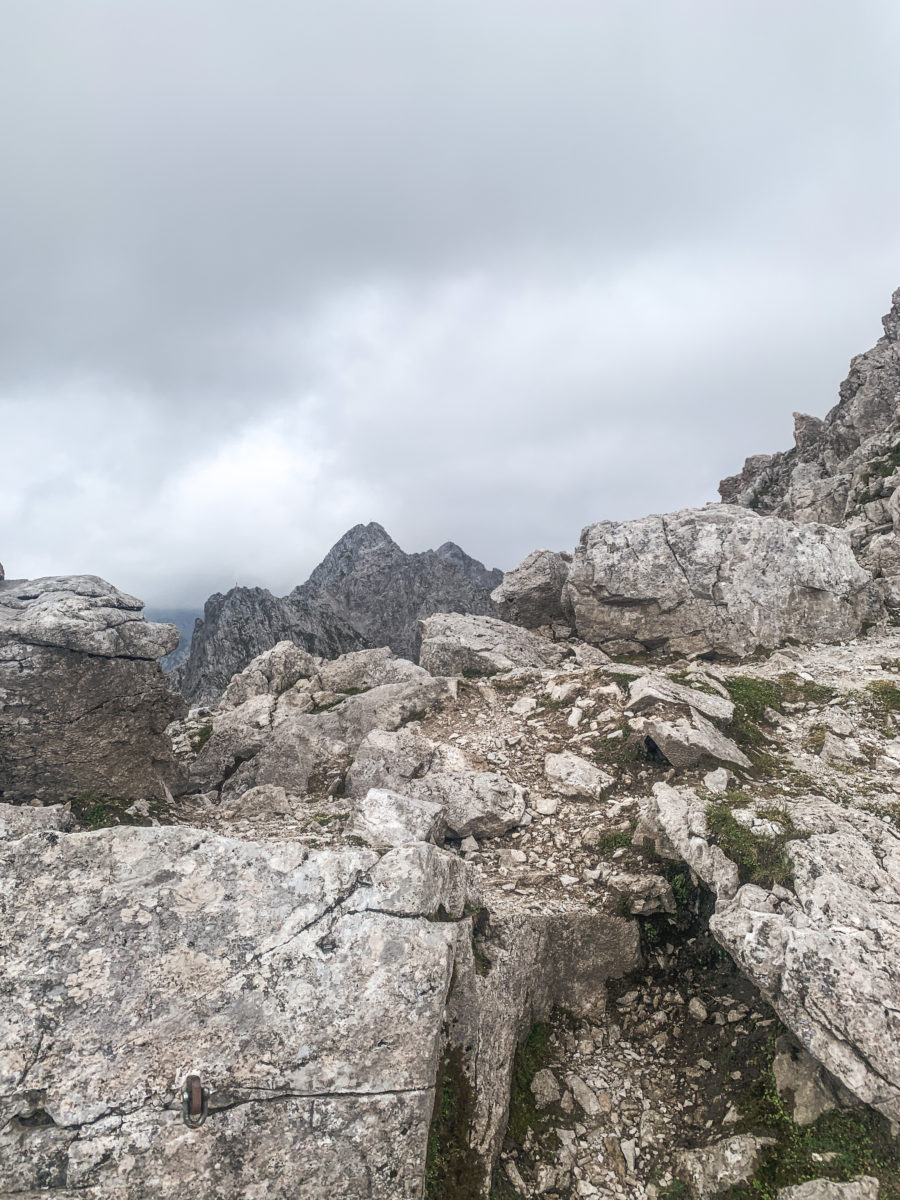
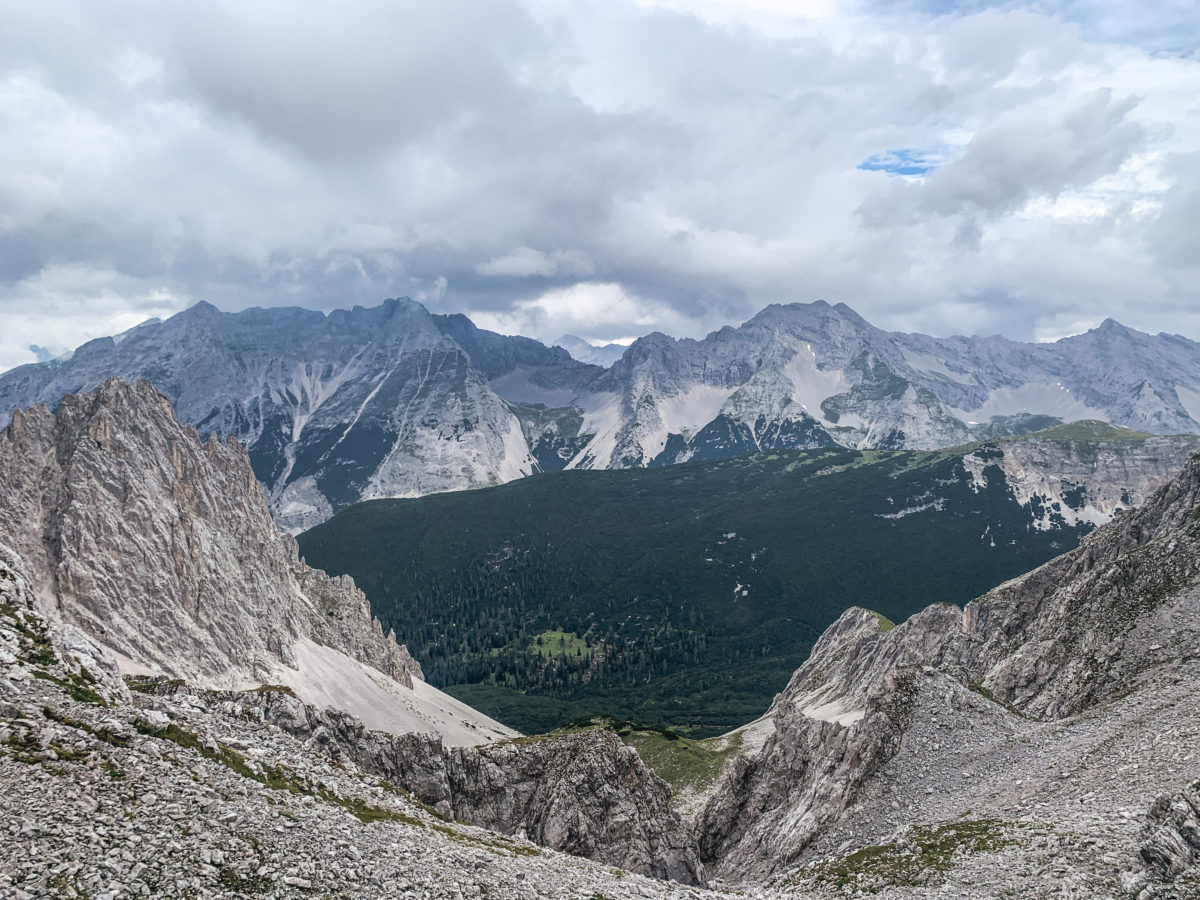



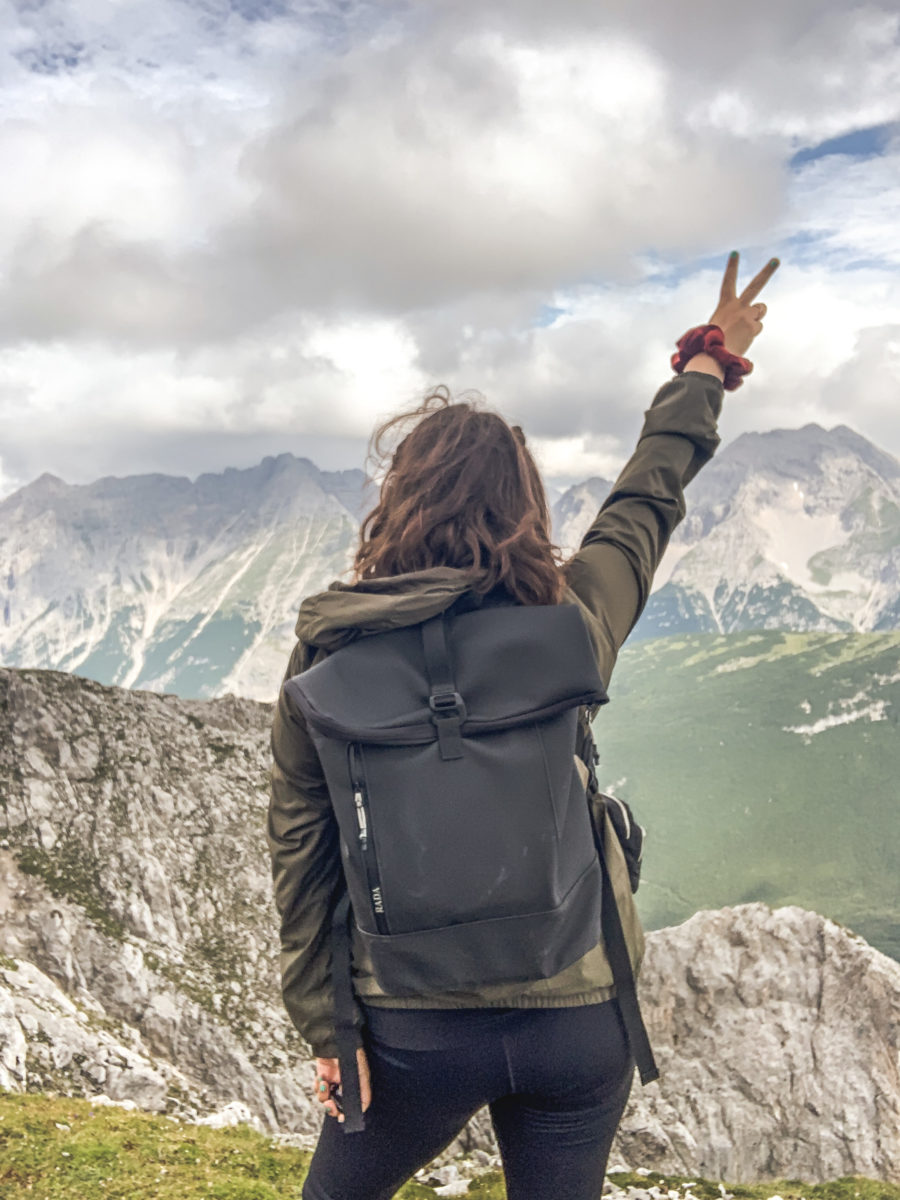
Mutterer Alm, mountain near Innsbruck
Initially, I decided to stay in Innsbruck for two whole days in order to go hiking towards the Achensee. From Innsbruck, I had to take a regional train to Jenbach and then a bus to Pertisau to take a gondola to Zwölferkopf and finally to hike for 2 hours for a breathtaking view at the top of the Bärenkopf. But I had, the night before, that instinct that tells you that this was not going to work. Without walking shoes, a smartphone whose battery doesn’t last a day and especially being alone, I started to think seriously about this undertaking. Then I read a lot of blogs in German about this hike and none of them agreed on the difficulty, the time or the route. I finally decided that I was not prepared to do this alone and postponed this hike to another trip.
Having received the Welcome Card (I talk about it at the end of this article), I decided to take advantage of it and to go to the mountains, but in a much simpler way than for the Achensee. So it will be Mutterer Alm.
This alpine pasture is not directly located in Innsbruck. You have to take the STB streetcar from the main station (or drive to it) and get off at the Mutters Nockhofweg/Muttereralm Bahn stop. From there it is a few minutes walk to the start of the cable car, which will take you to the top of the hill.
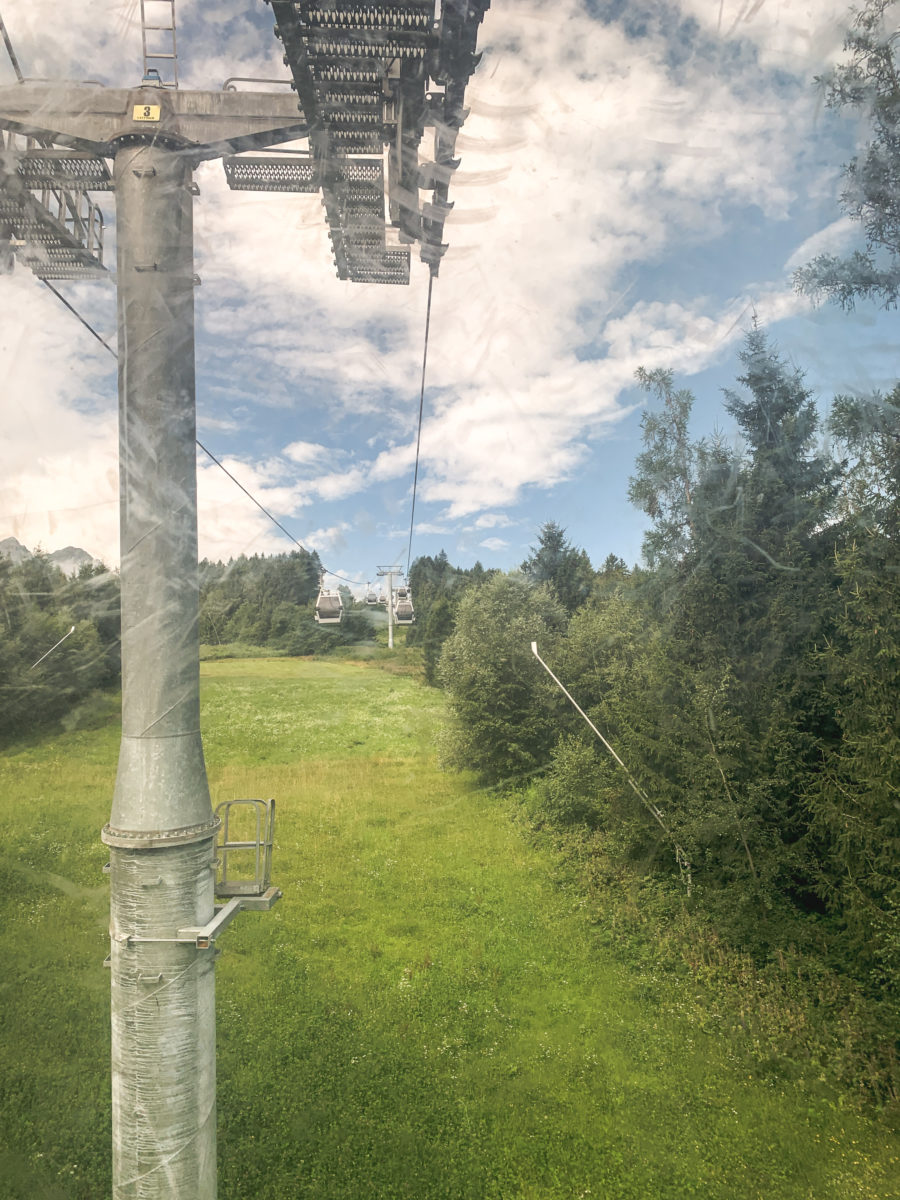

The alp offers, besides beautiful views of the Inn valley and the Nordkette massif, a good dose of fun and discovery for the children, mainly with different activities. The older ones will have more fun hiking and mountain biking. I hesitated to go back down with the Mountain Cart, but because of the wait, I preferred to stretch my legs by walking to the Panoramasee. This panoramic lake is an idyllic place to rest, offering wooden deckchairs, picnic tables and a breathtaking view of the valley.

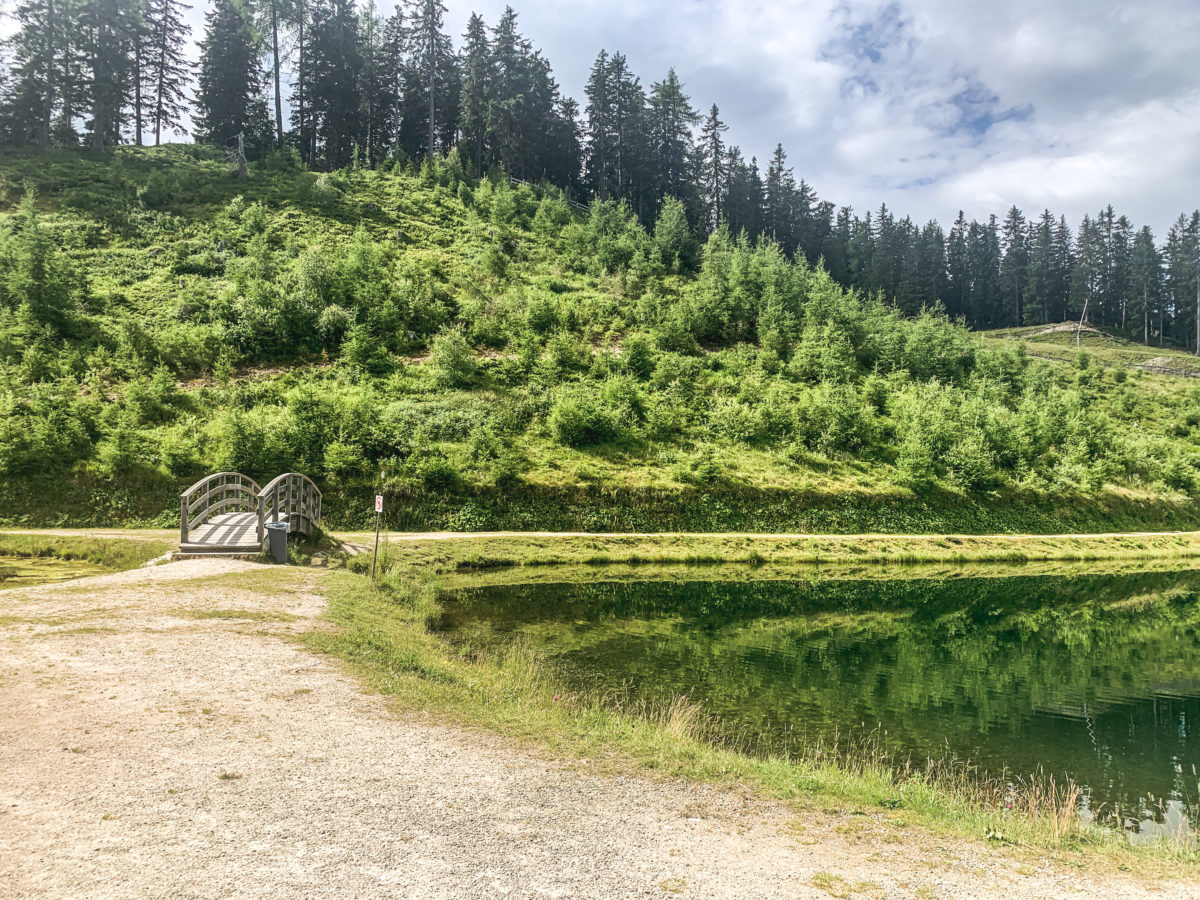
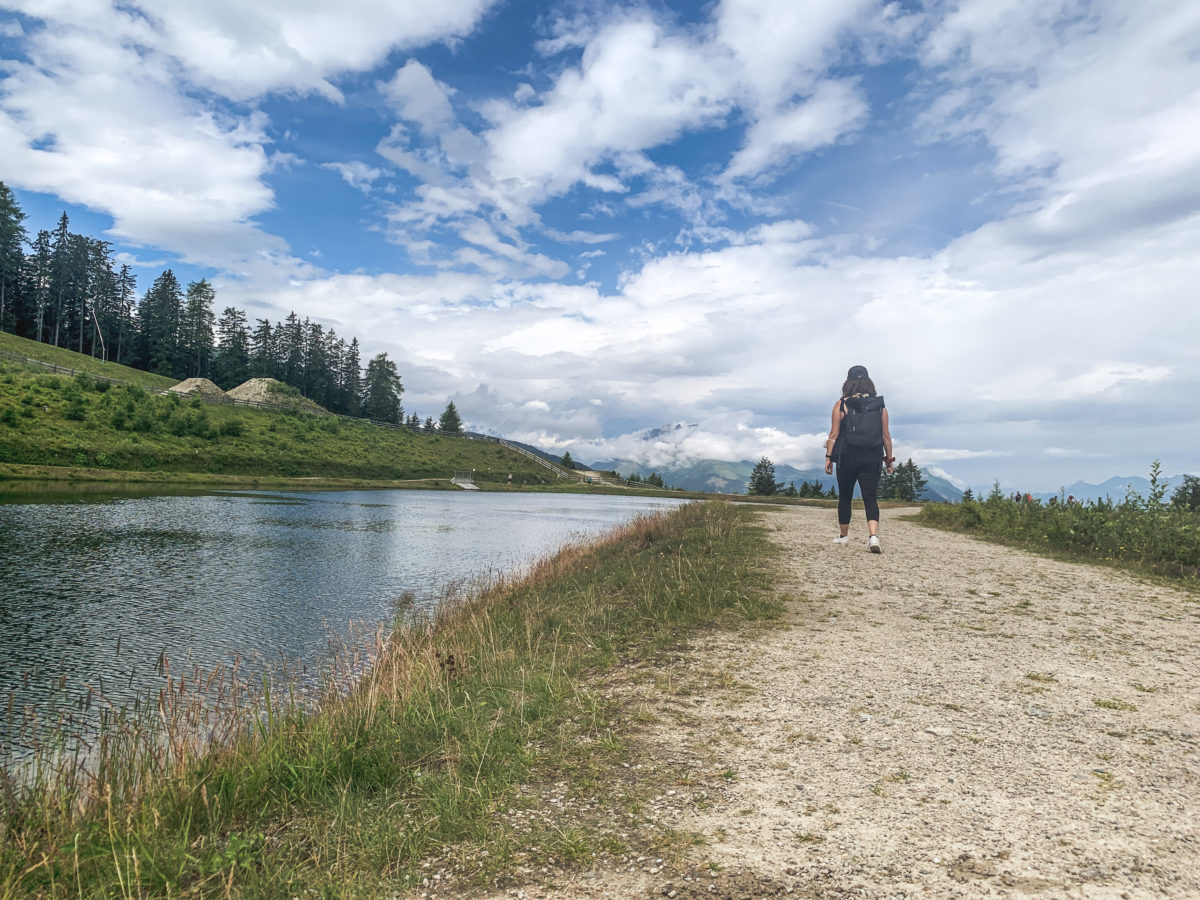
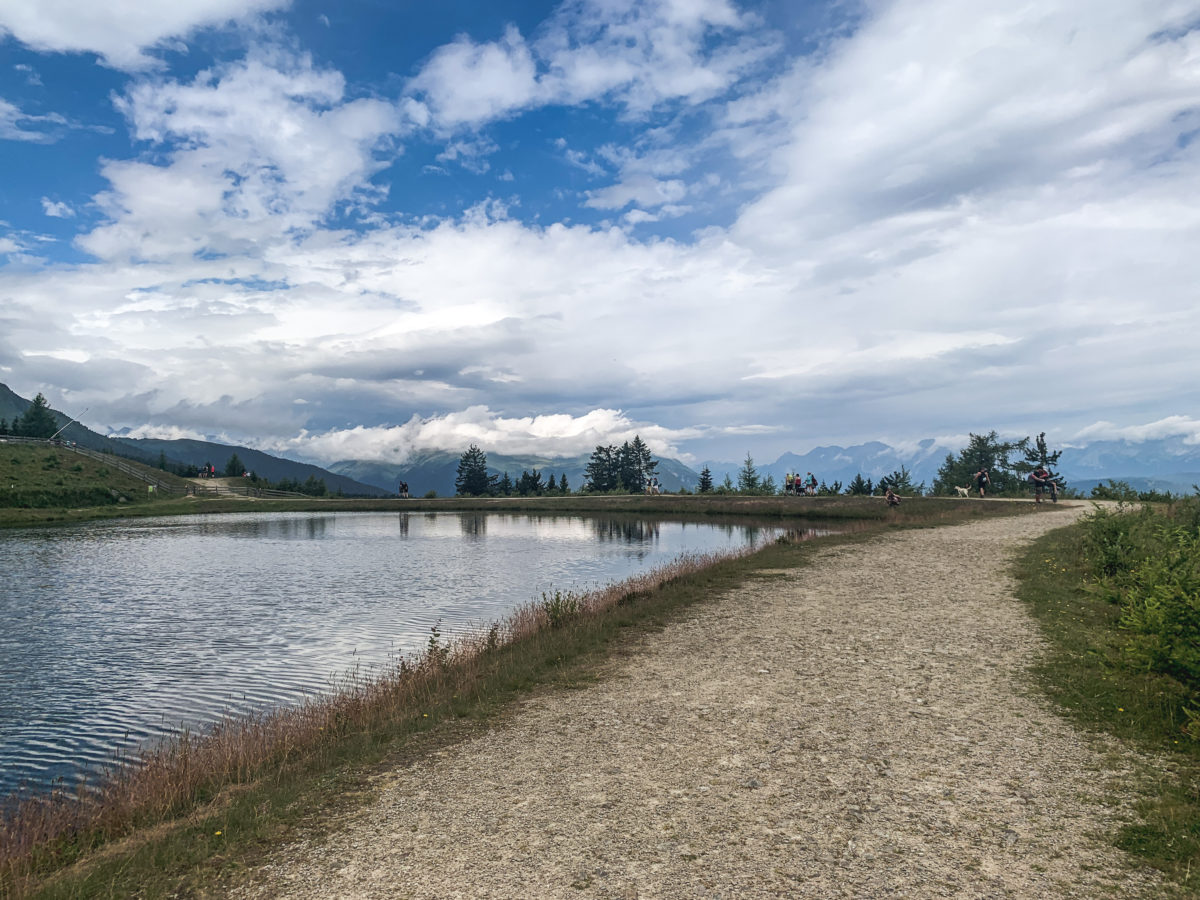
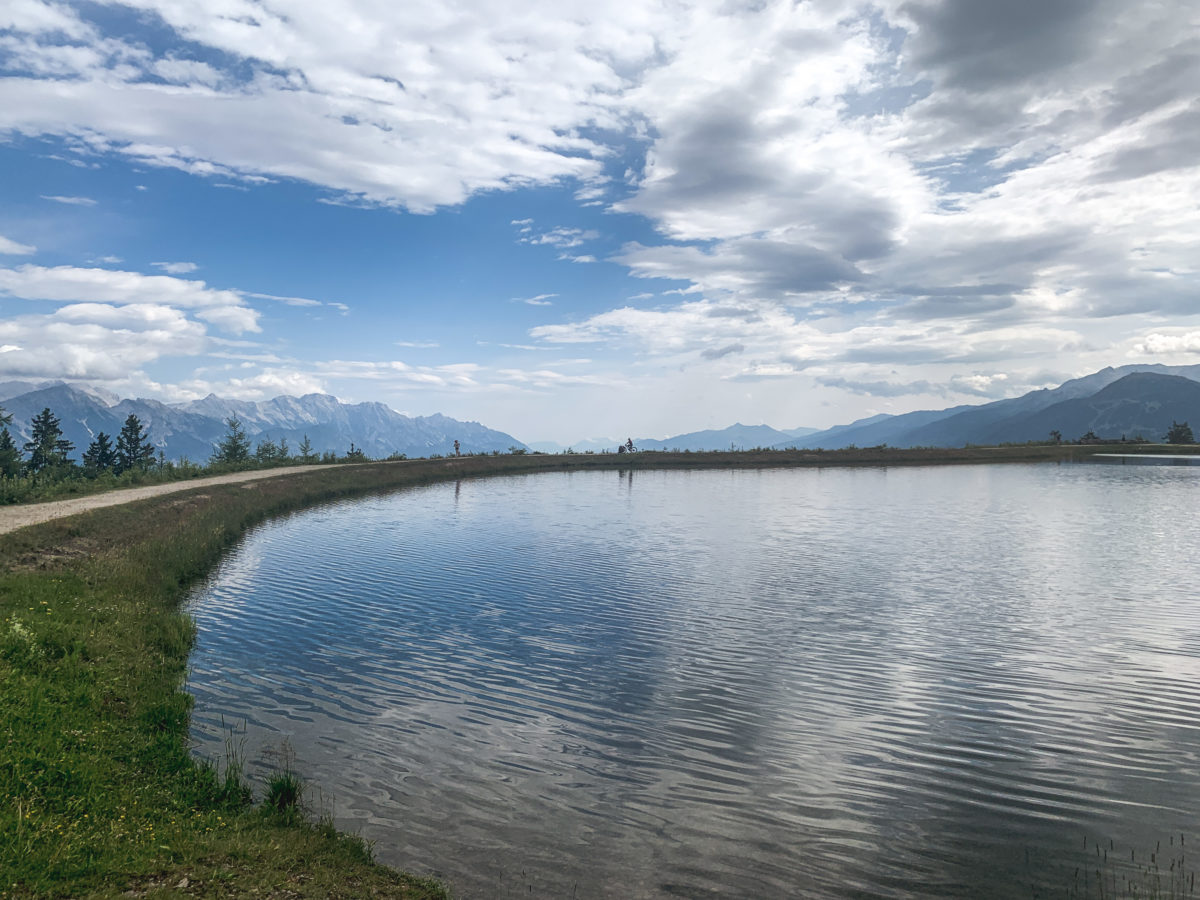
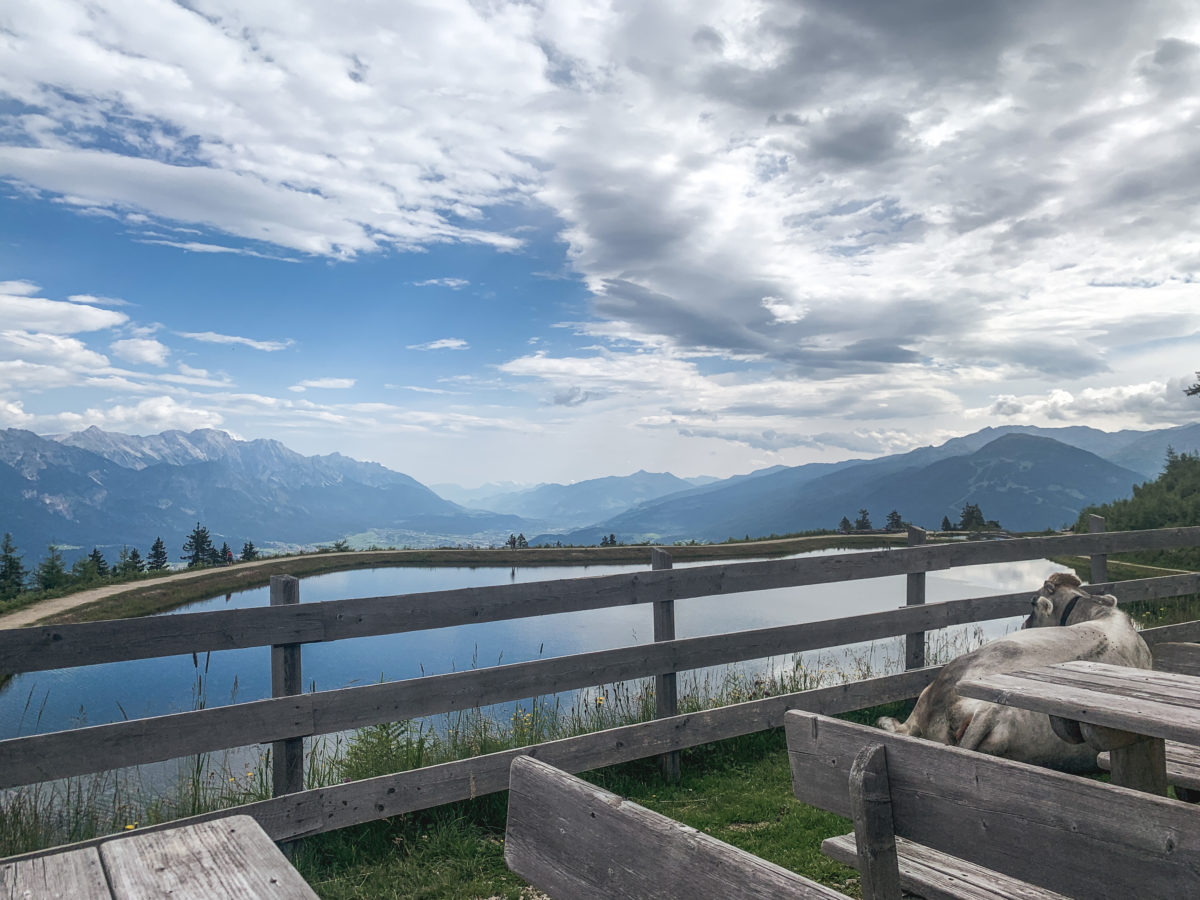
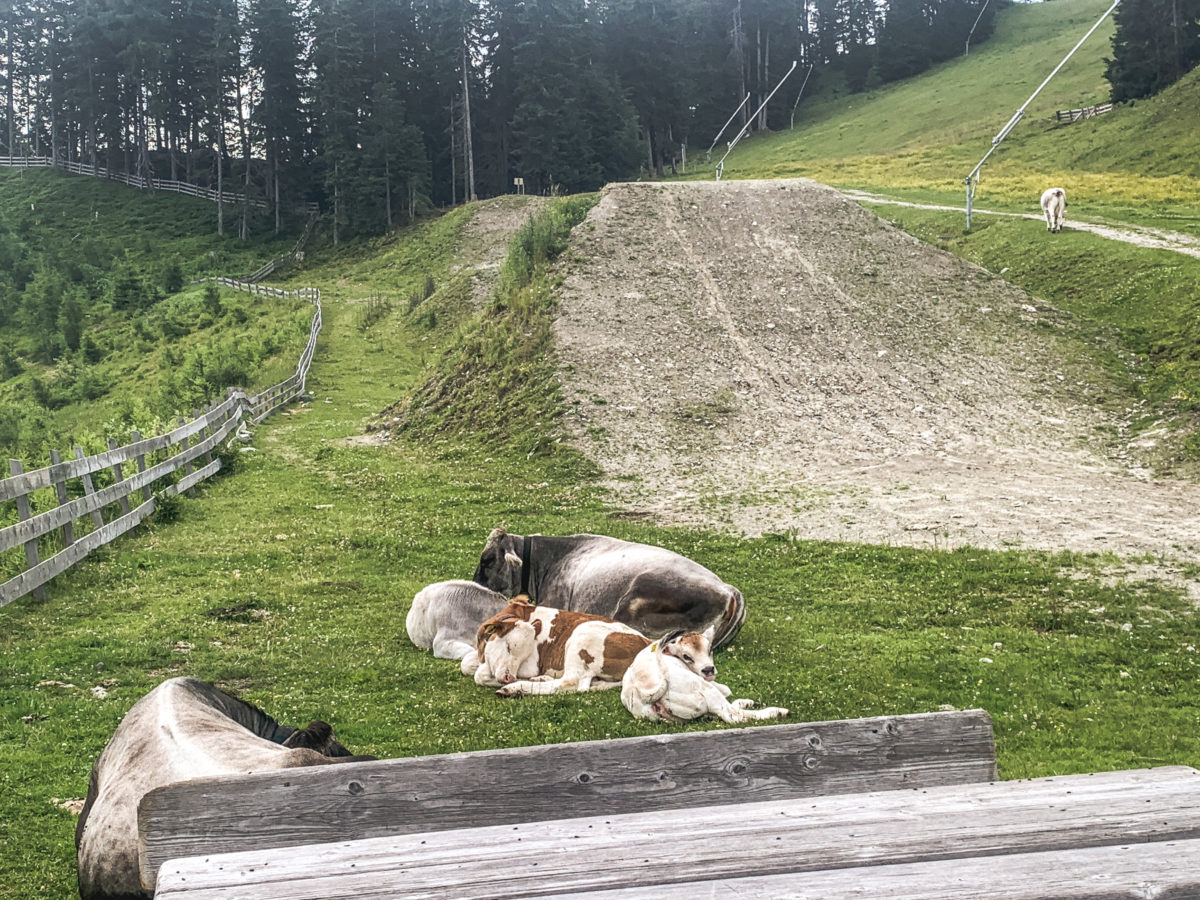


I strolled around for an hour before heading to the alpine restaurant, which offers Tyrolean specialities. I tasted the typical cuisine of the region, namely Spinatknödel: delicious spinach dumplings, soft and simple, gratinated with Parmesan. Delicious, but a bit heavy, so I was happy to go back down with the cable car.
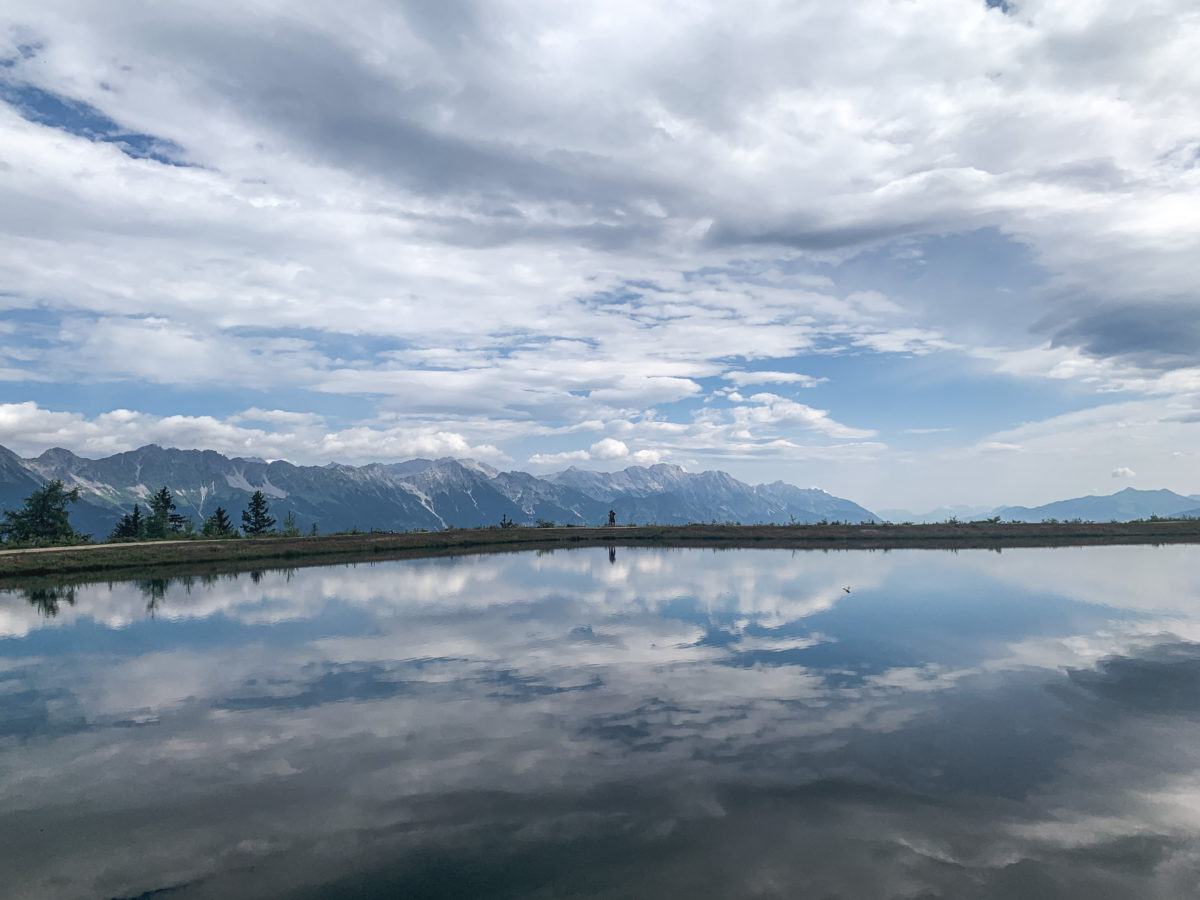

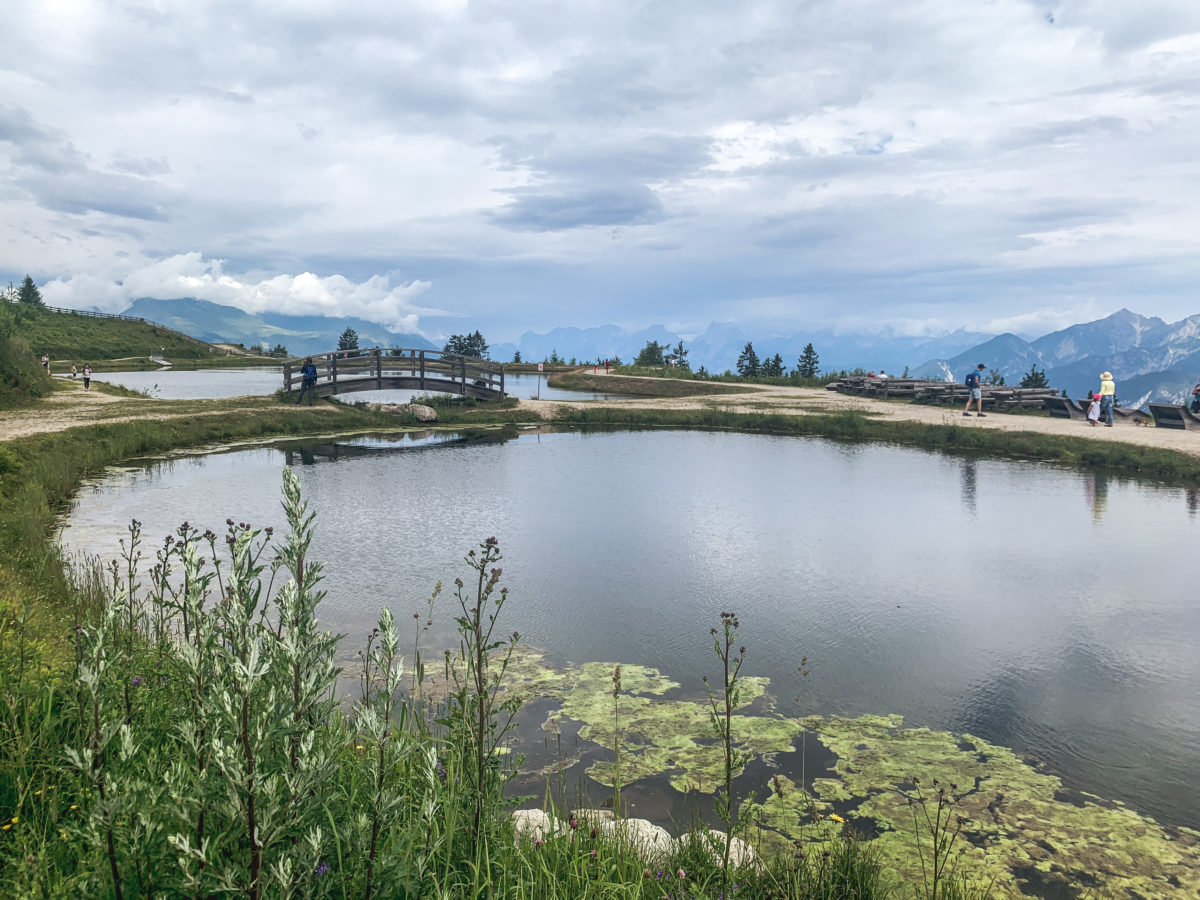

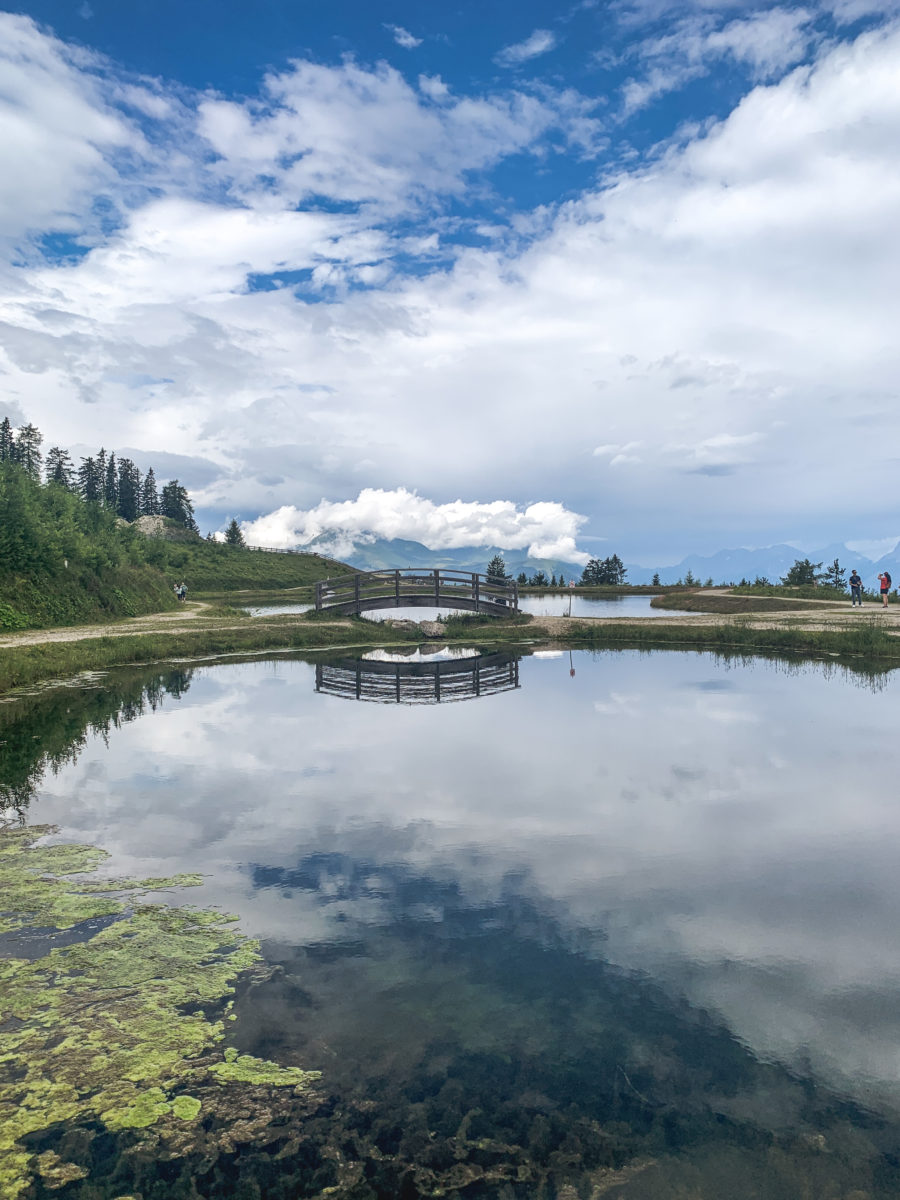
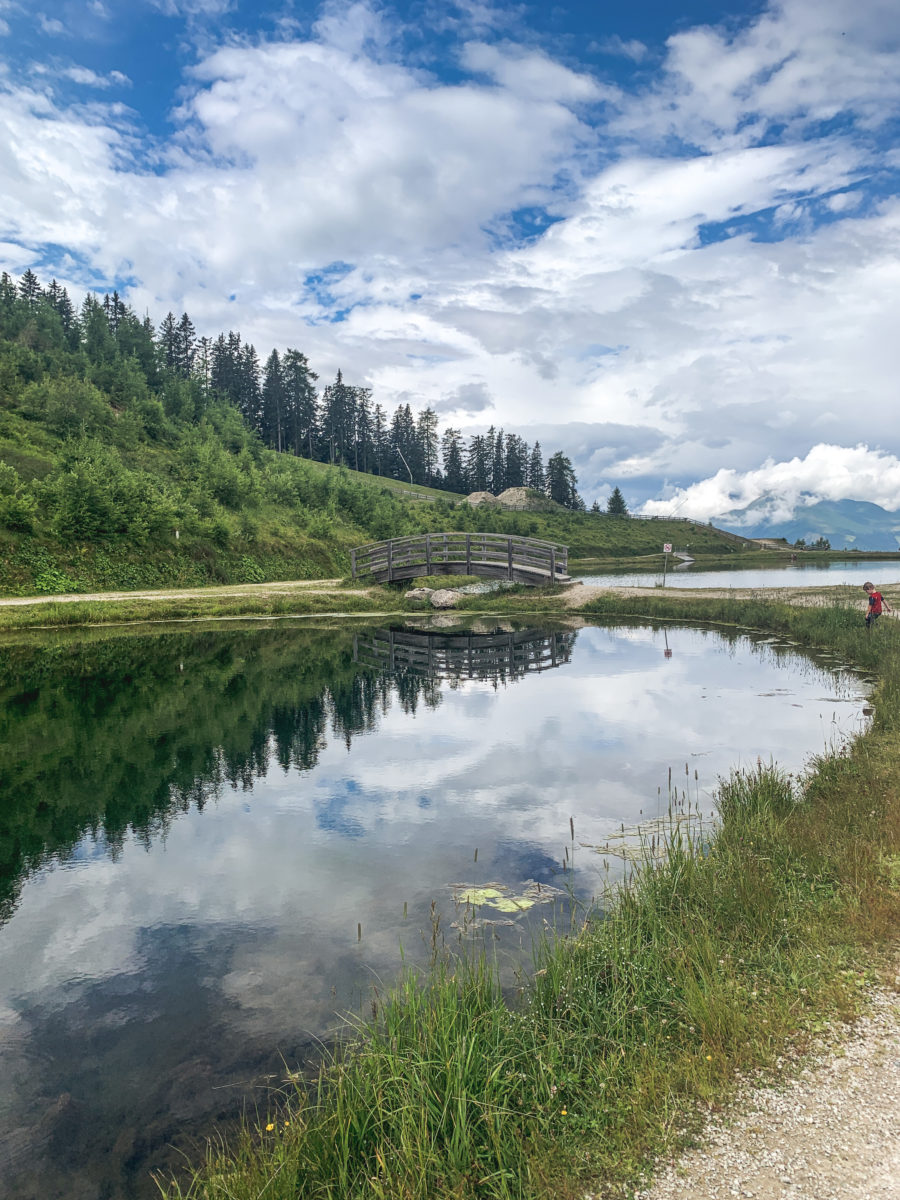

Bergisel
Designed by Zaha Hadid, the star architect who created other works in the city (Hungerburgbahn station), the ski jump dominates the city that hosted the 1964 and 1976 Winter Olympics. An imposing landmark of Innsbruck, it is a spectacular mixture of urbanism and nature. The architect described the infrastructure as “an organic hybrid, a kind of tower-bridge crossing that manages to give an abstract image of speed, movement and flight. In fact, the structure combines a bridge as a ramp, a building as a tower and steel construction in the upper section of the latter.”
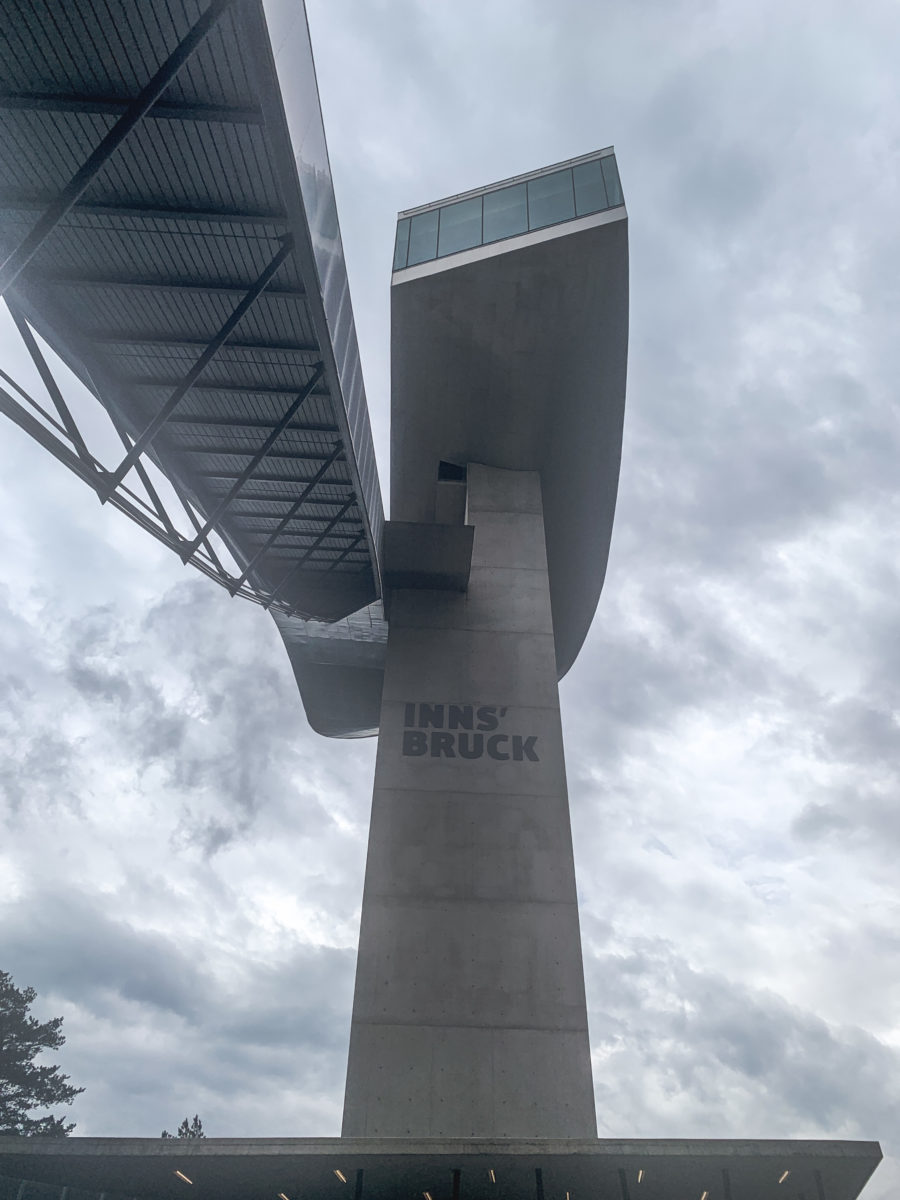
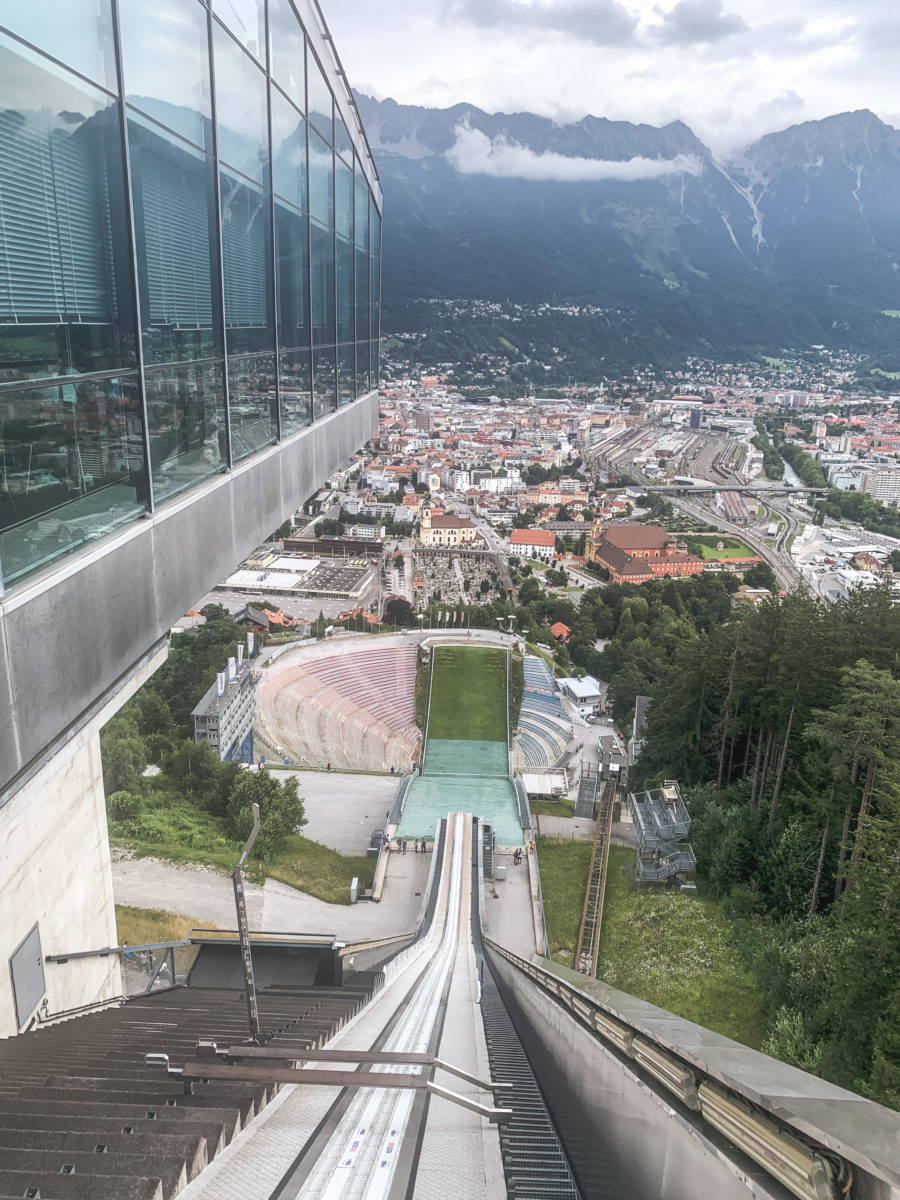
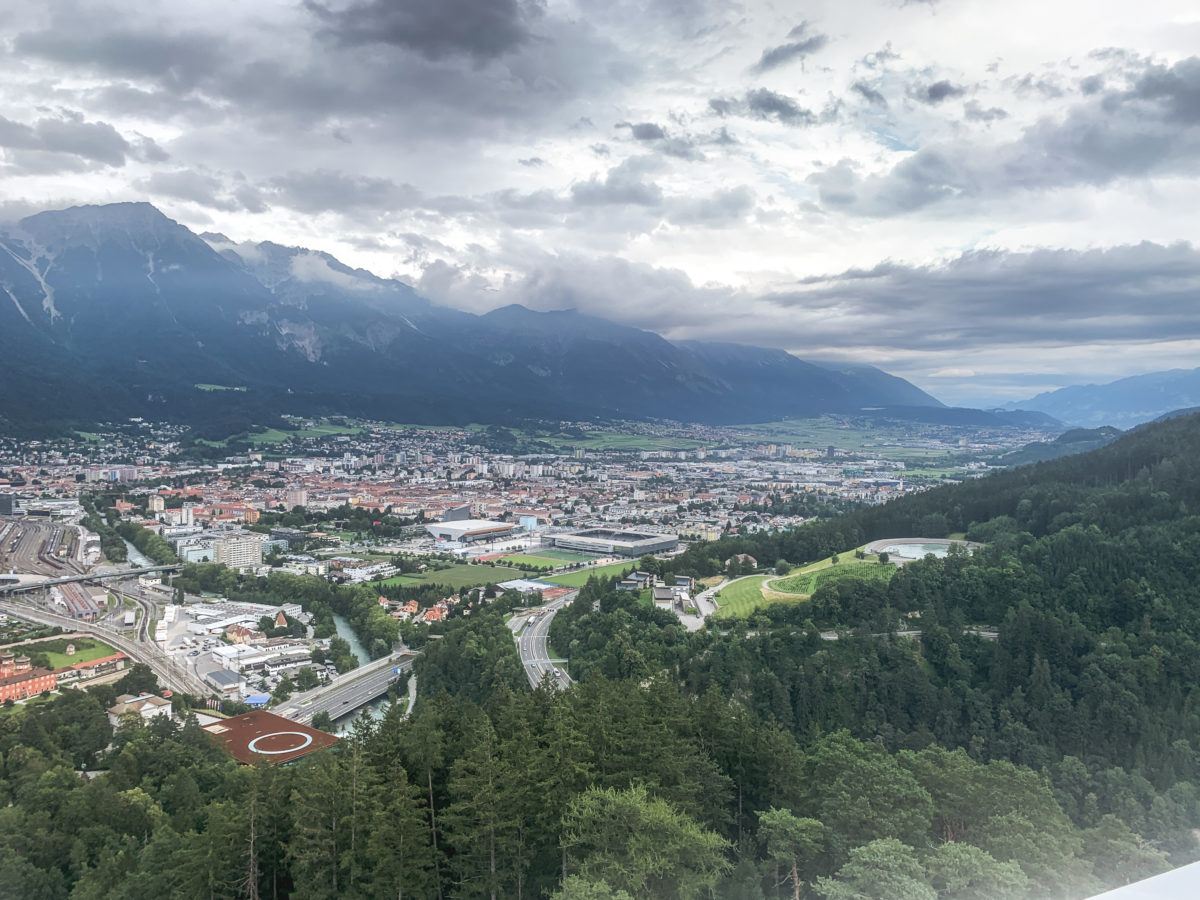
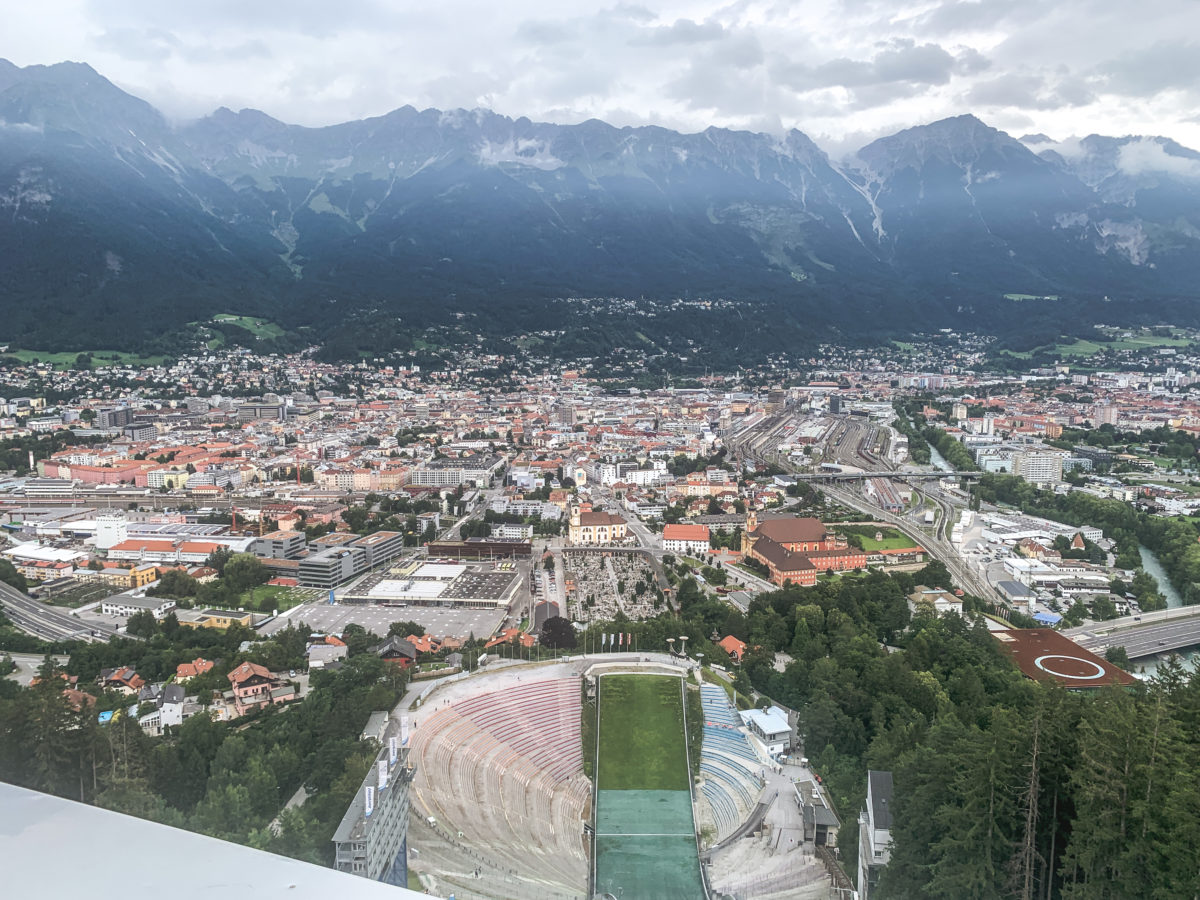
The Bergisel ski jump can normally accommodate up to 28,000 spectators and the annual highlight is the event held here as part of the Four Hills Tournament (two in Germany – Oberstdorf and Garmisch-Partenkirchen – and two in Austria – Bischofshofen and Innsbruck). The facility is used for summer training and for preparation for the various championships, except when tourists visit.
A visit to this sports facility is well worthwhile, as there are many signs explaining the practice of ski jumping as well as the operation of the infrastructure, which will teach you a lot about a spectacular and unusual sport.
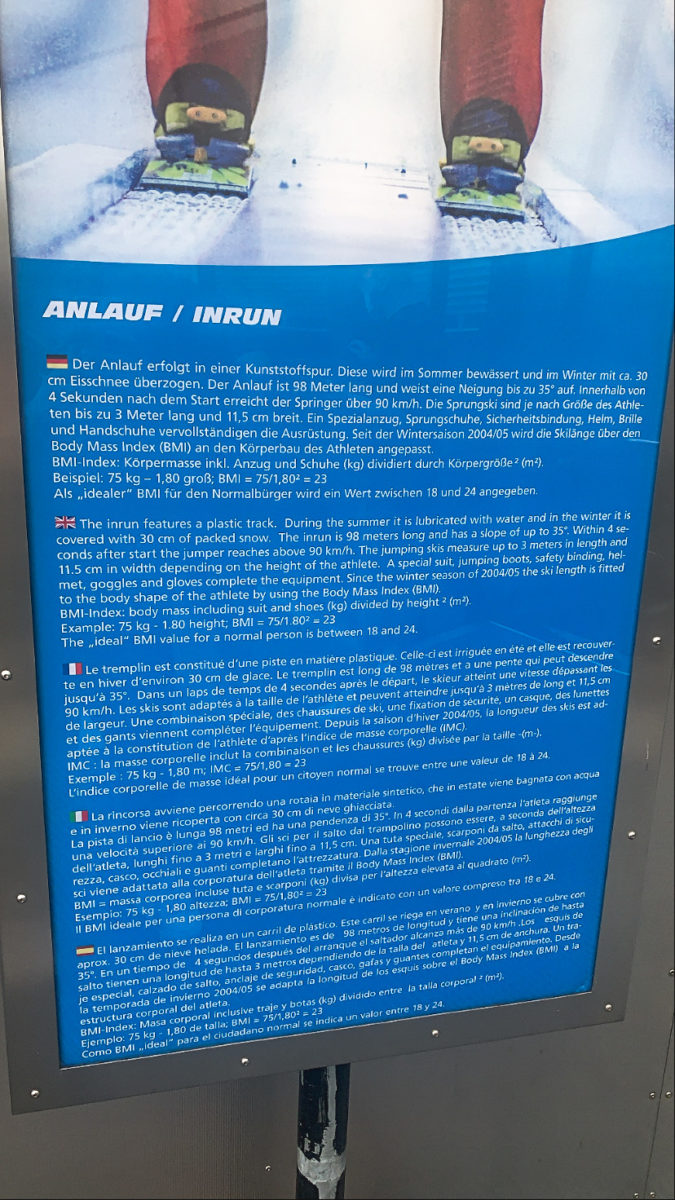
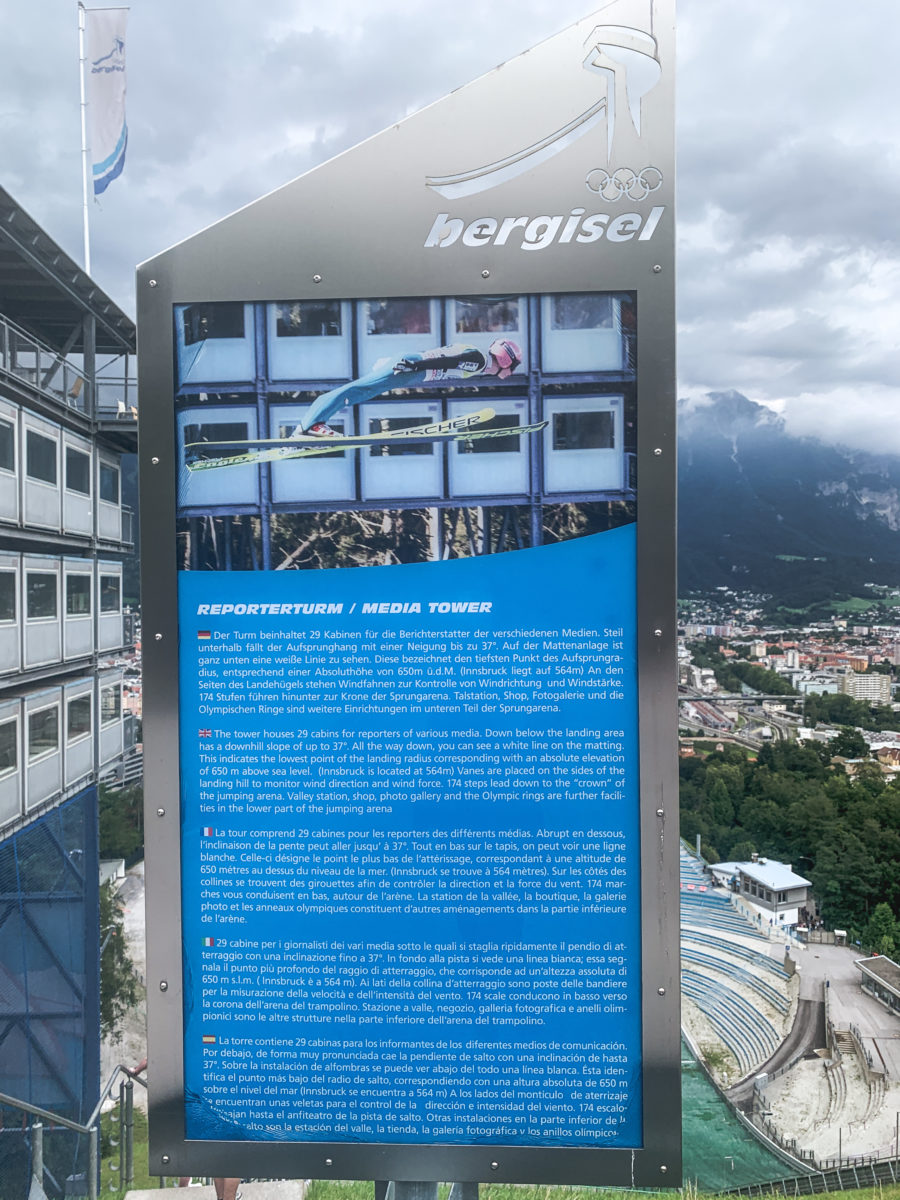
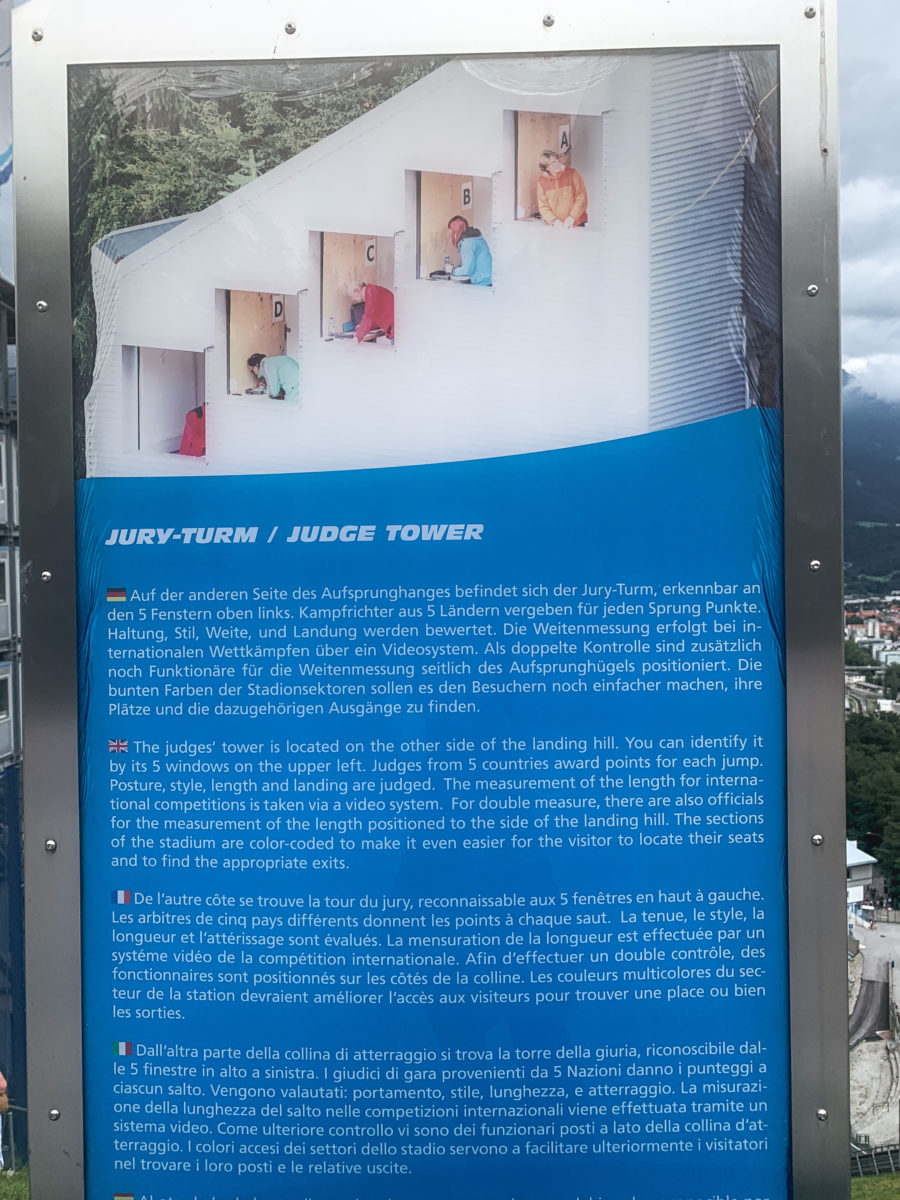
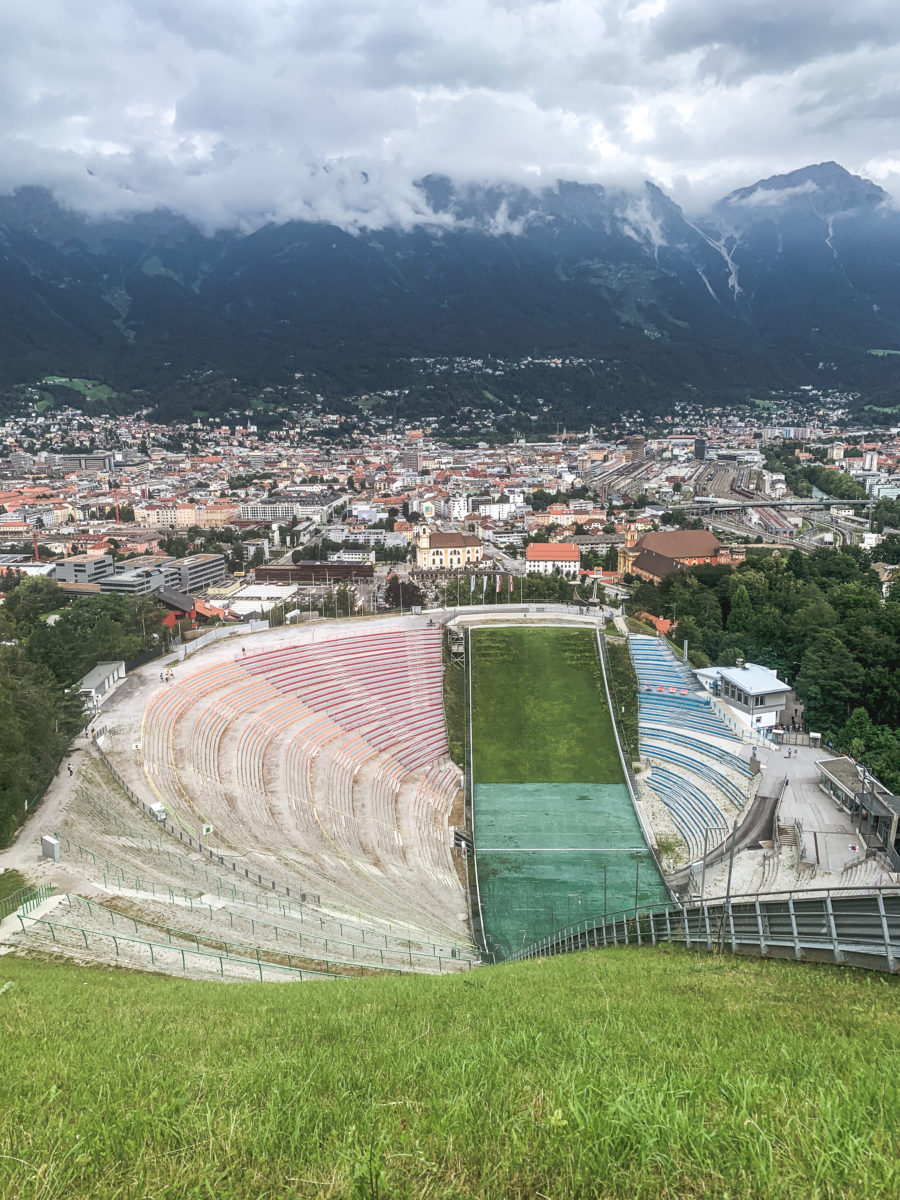
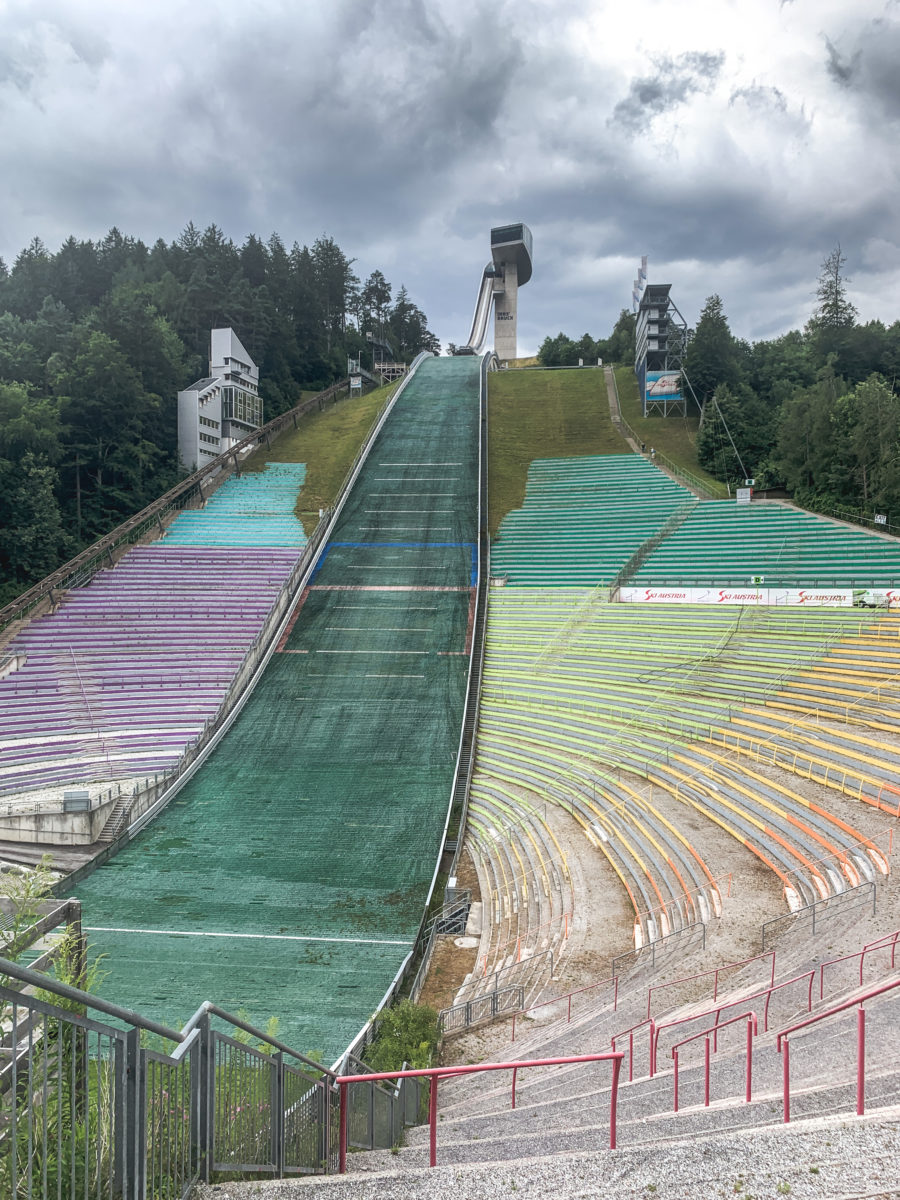
The tower rises 50 meters above the ground and on the first level, it houses the start with the jumping platform, on the second a restaurant and on the third a terrace with a view. These last two can be reached by elevator, but I advise you to go back down by the stairs, as there is a small exhibition of posters of great champions – especially Austrian ones, including Gregor Schlierenzauer, who was my favourite at the time when I followed this sport quite assiduously, but there is no trace of Simon Ammann, the immense Swiss champion (chauvinism, but you can find me a greater champion than him!), perhaps due to the fact that he has never won the Four Hills Tournament…
I particularly enjoyed seeing where the journalists from various countries were commenting on the event, as well as seeing where the judges were located. It’s pretty funny when you think about it to see them in those little diagonal booths.


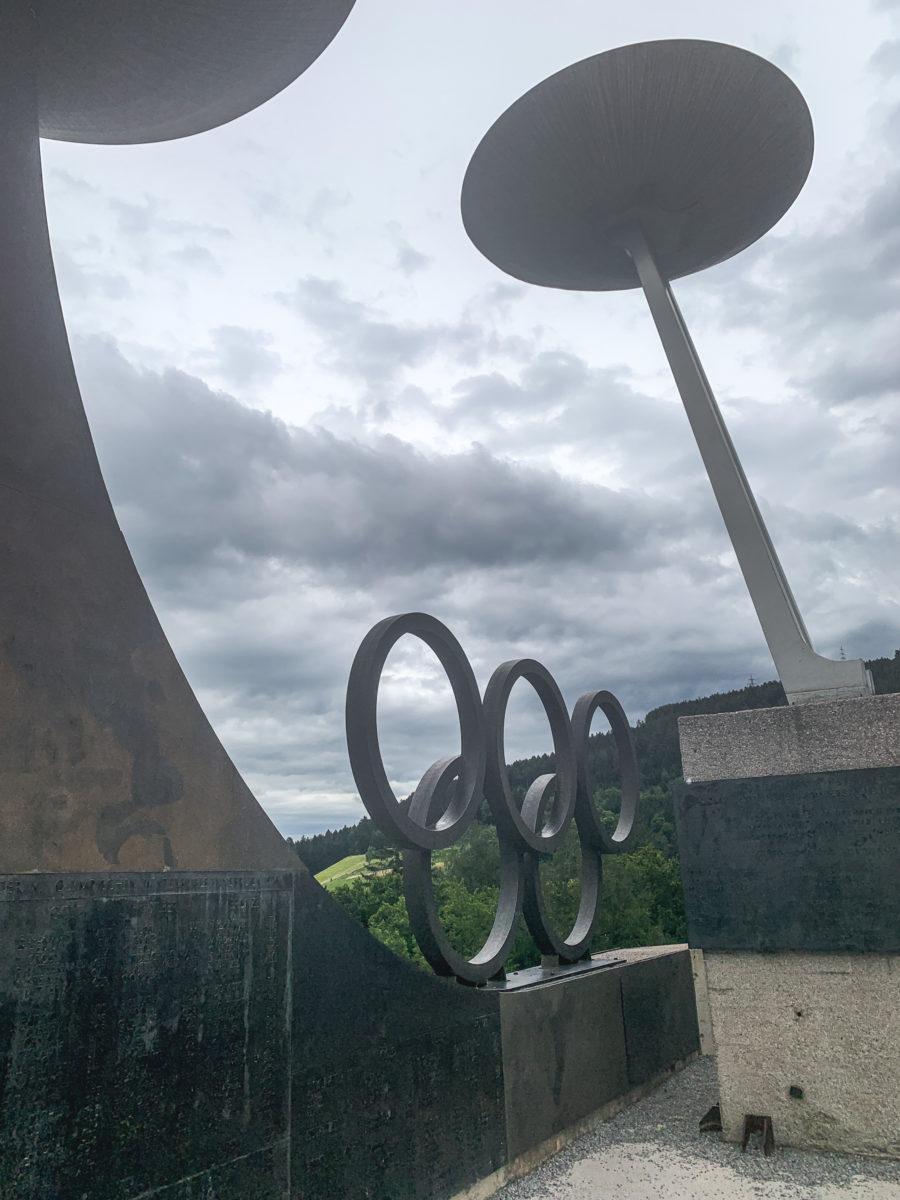

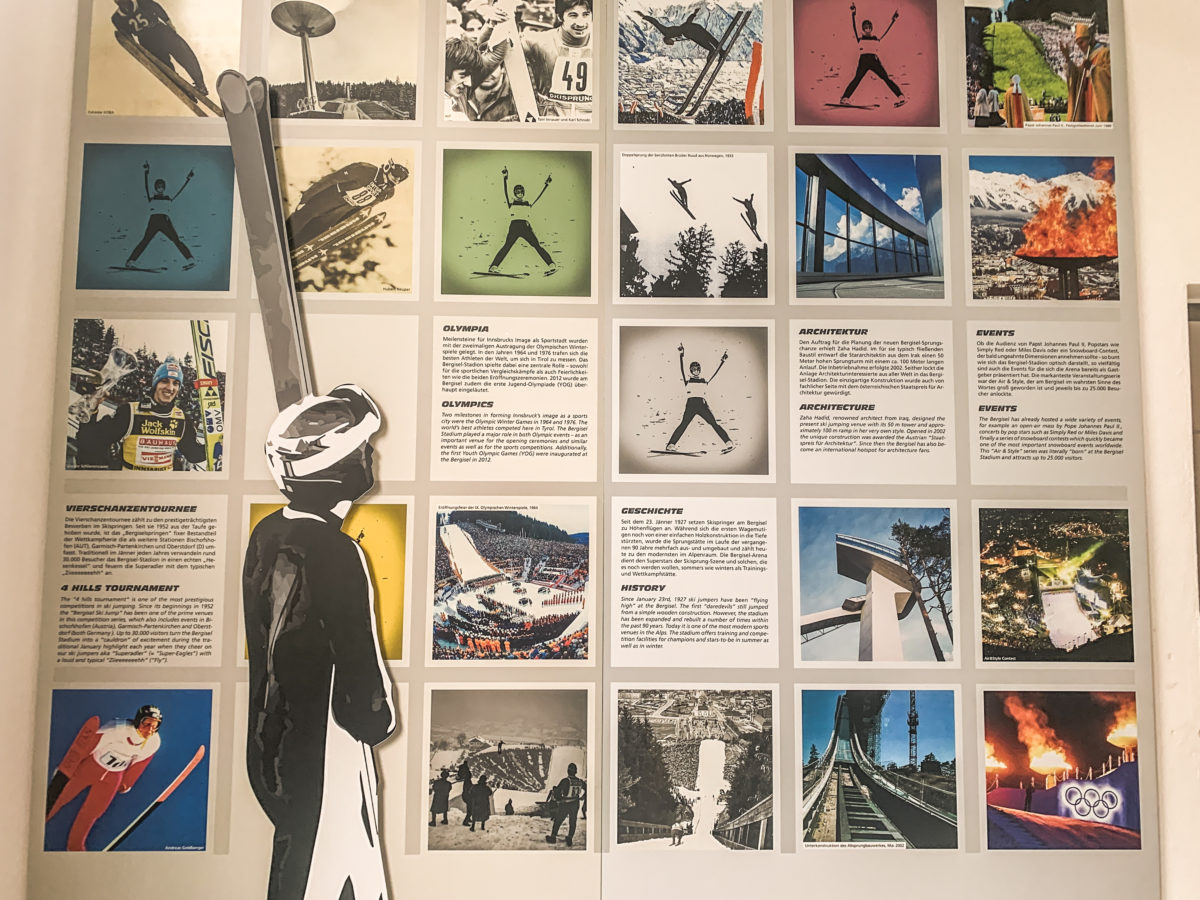
Afterwards, it started to rain, and having the Innsbruck Card, I took refuge in the Tirol Panorama Museum. This one is the witness of the history of the region, interesting but nothing more. It is, however, the giant painting of 1’000 square meters wide that amazed me.
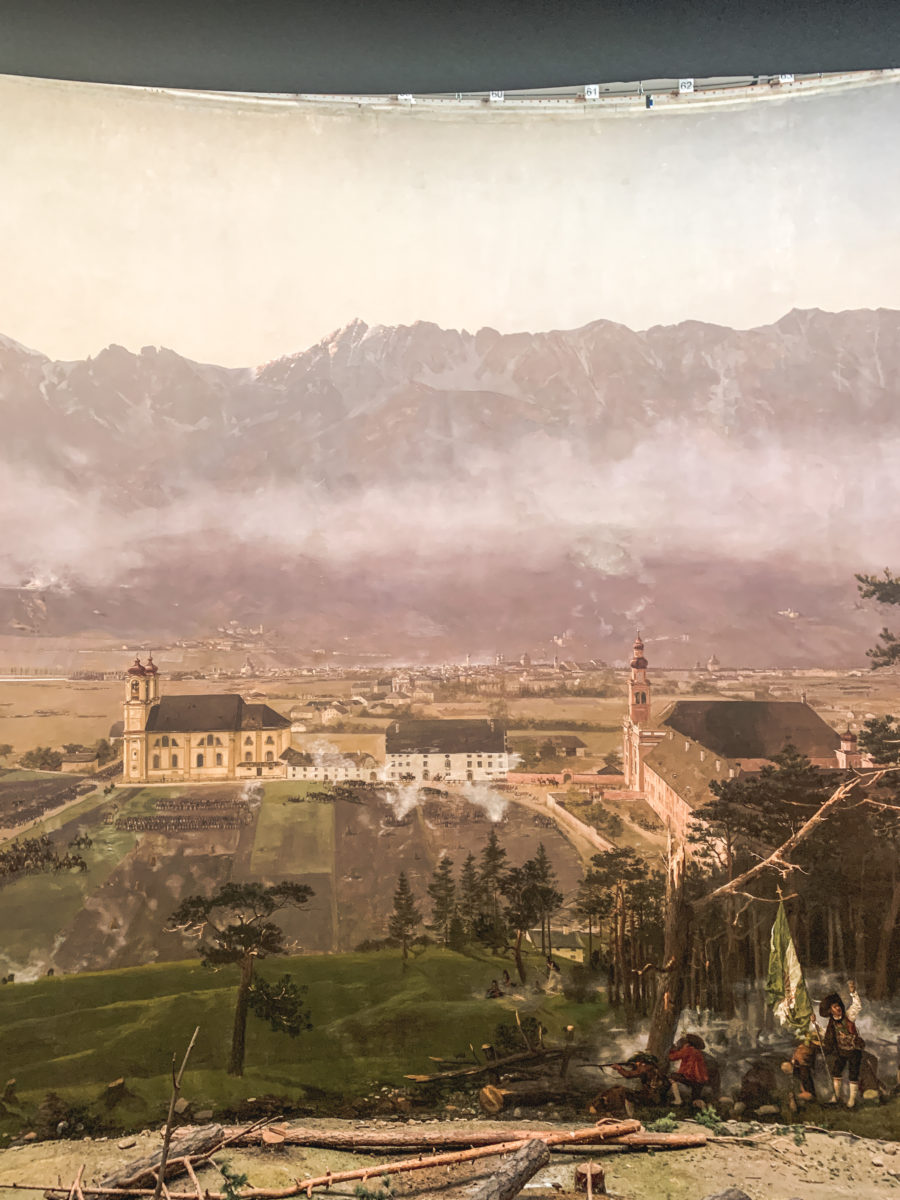
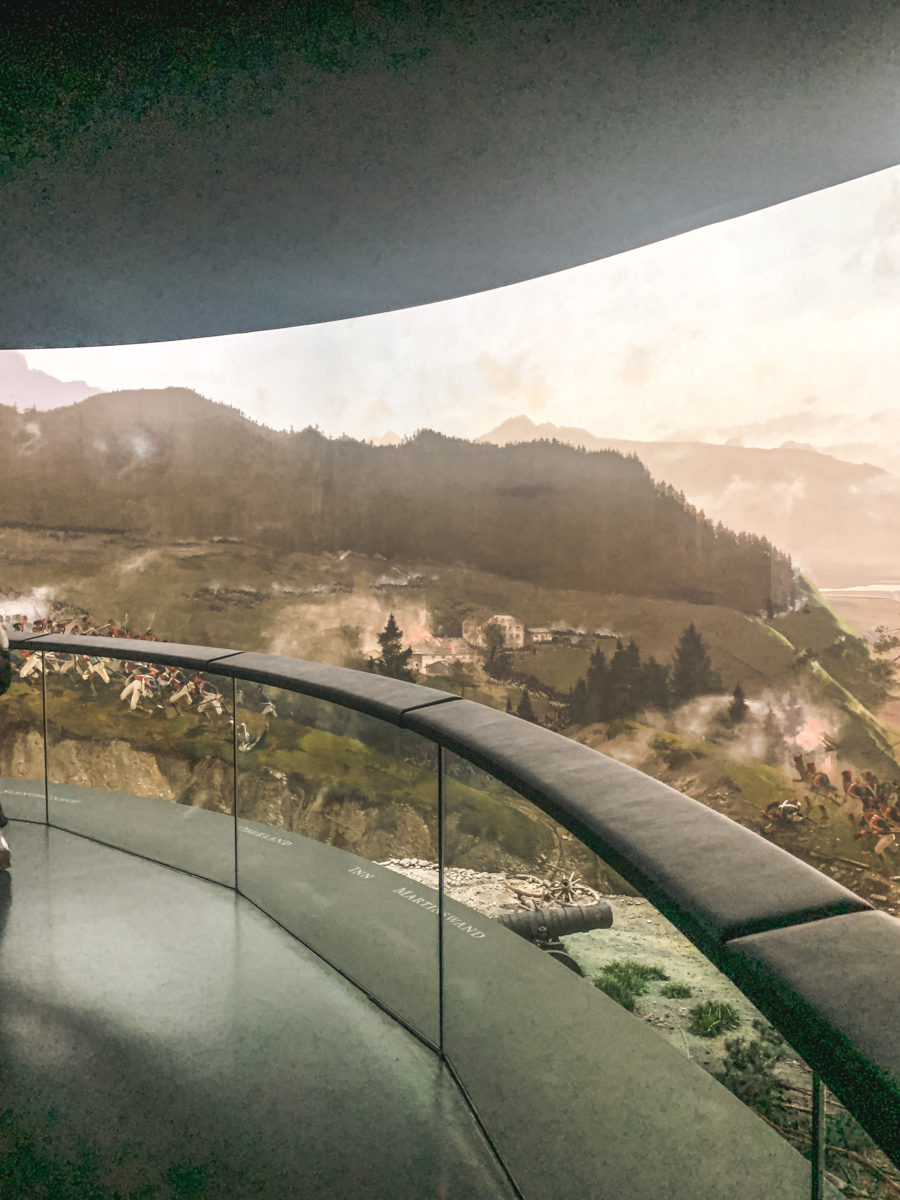
Crystal Worlds of Swarovski
I decided to take the Innsbruck Card when I knew that the Swarovski experience museum was included in the package. Indeed, the entrance is a bit expensive (19 euros) and especially the shuttle that goes there 4 times a day is 7.50 euros but also included.
I am not a huge fan of jewellery, but it turns out that I have a soft spot for the brand Swarovski. I could not miss the “world of crystal” established by the brand in its original stronghold in Wattens.
The Swarovski Kristallwelten was opened in 1995 on the occasion of the centenary of the Swarovski company. The artist André Heller is responsible for this unique place, dedicated, according to him, to the imagination, especially through the visit of the sparkling Wonder Chambers. Bling bling for sure, I find that the price of 19 euros for the visit of the rooms and the entrance to the park is a bit exorbitant, but in the end, I spent a pleasant moment.
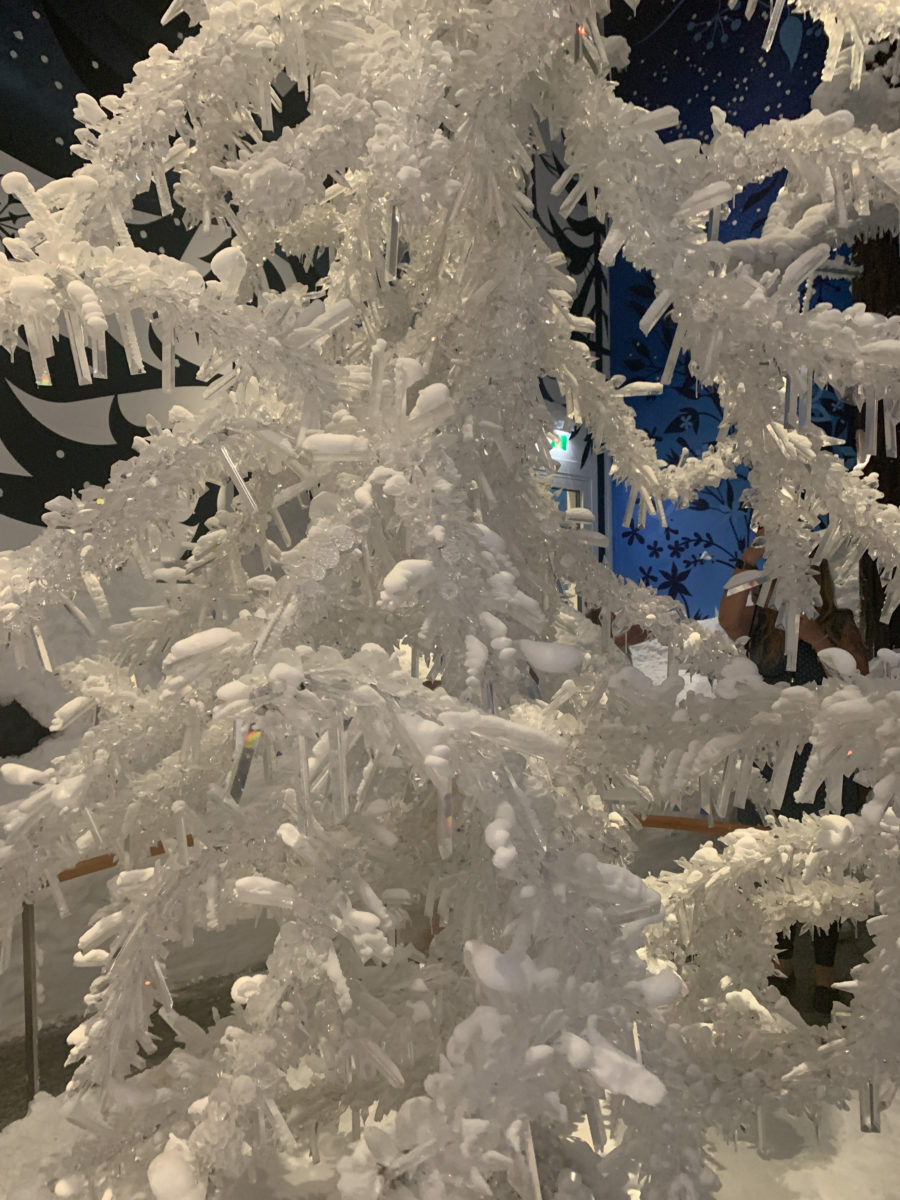

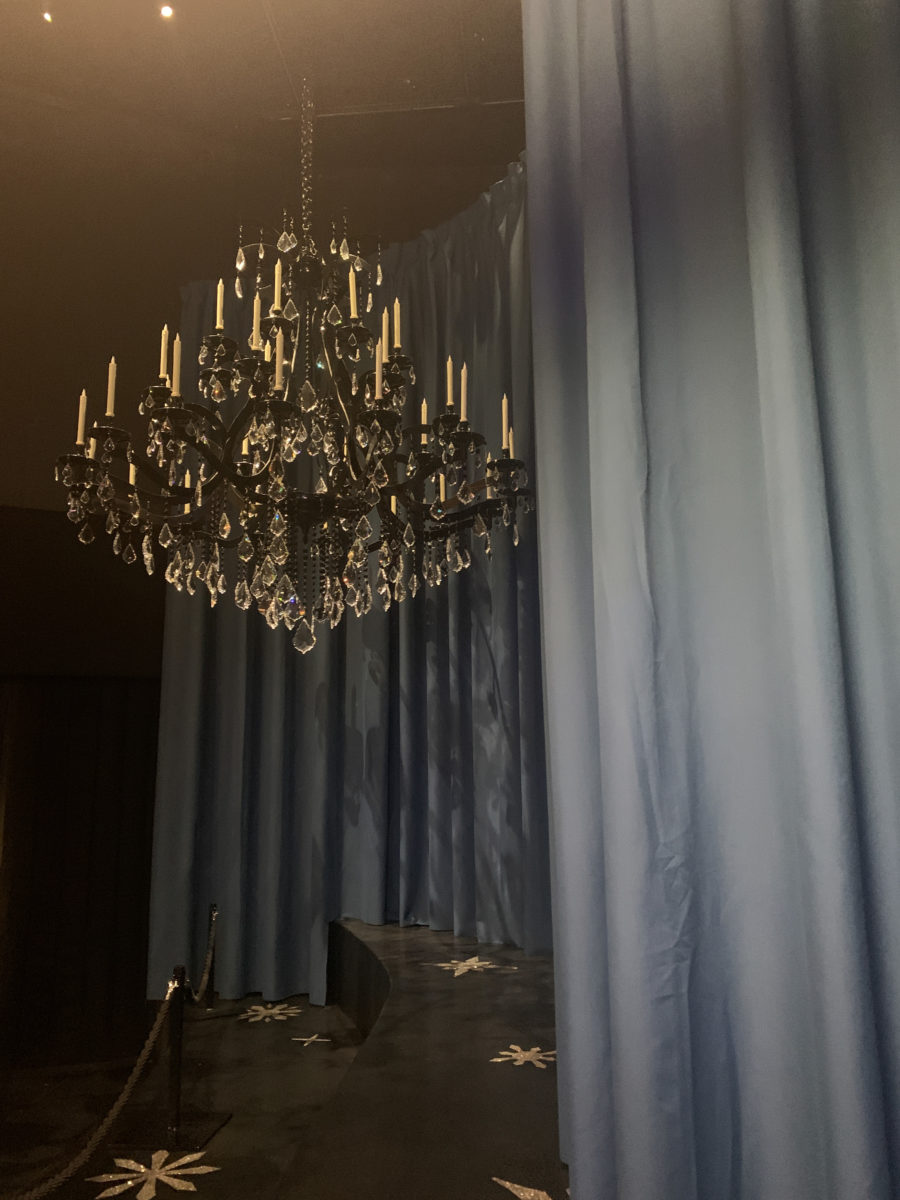


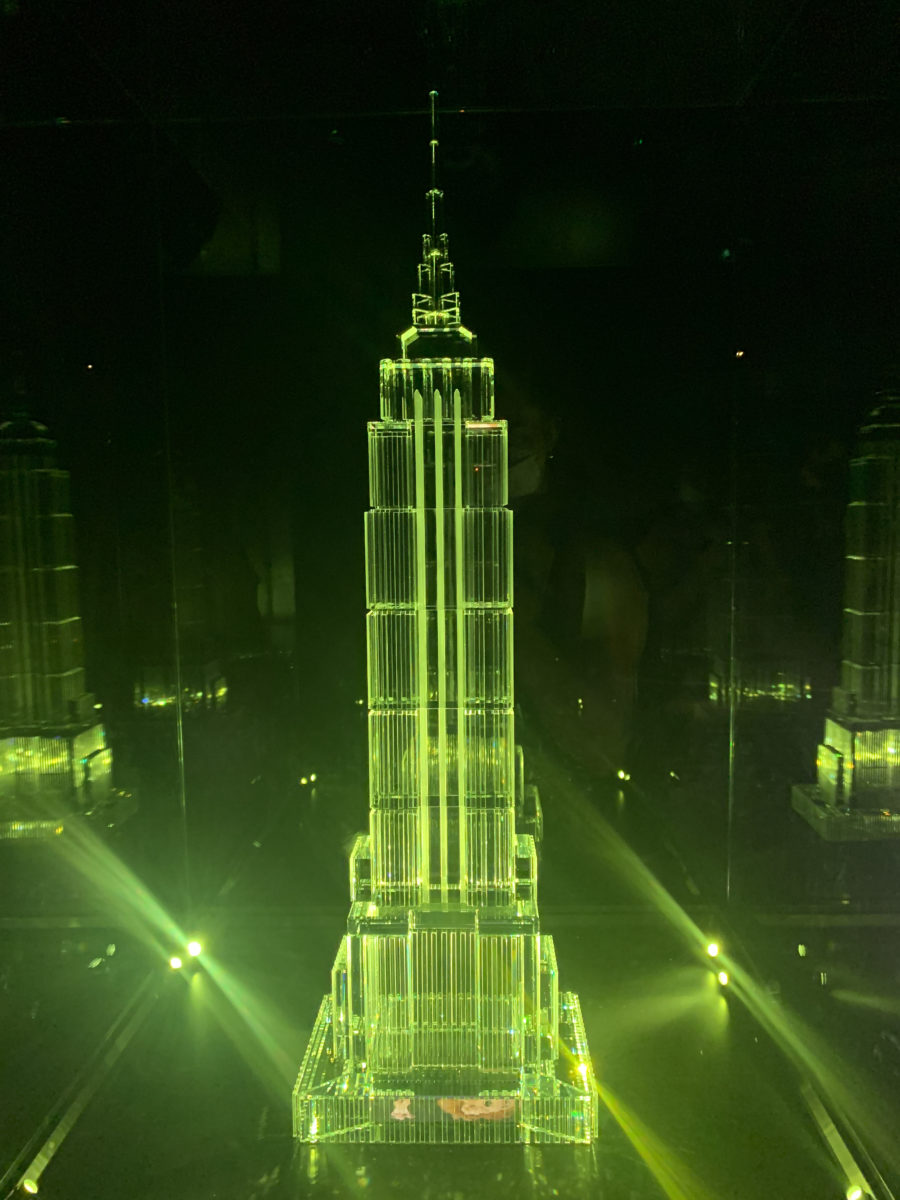
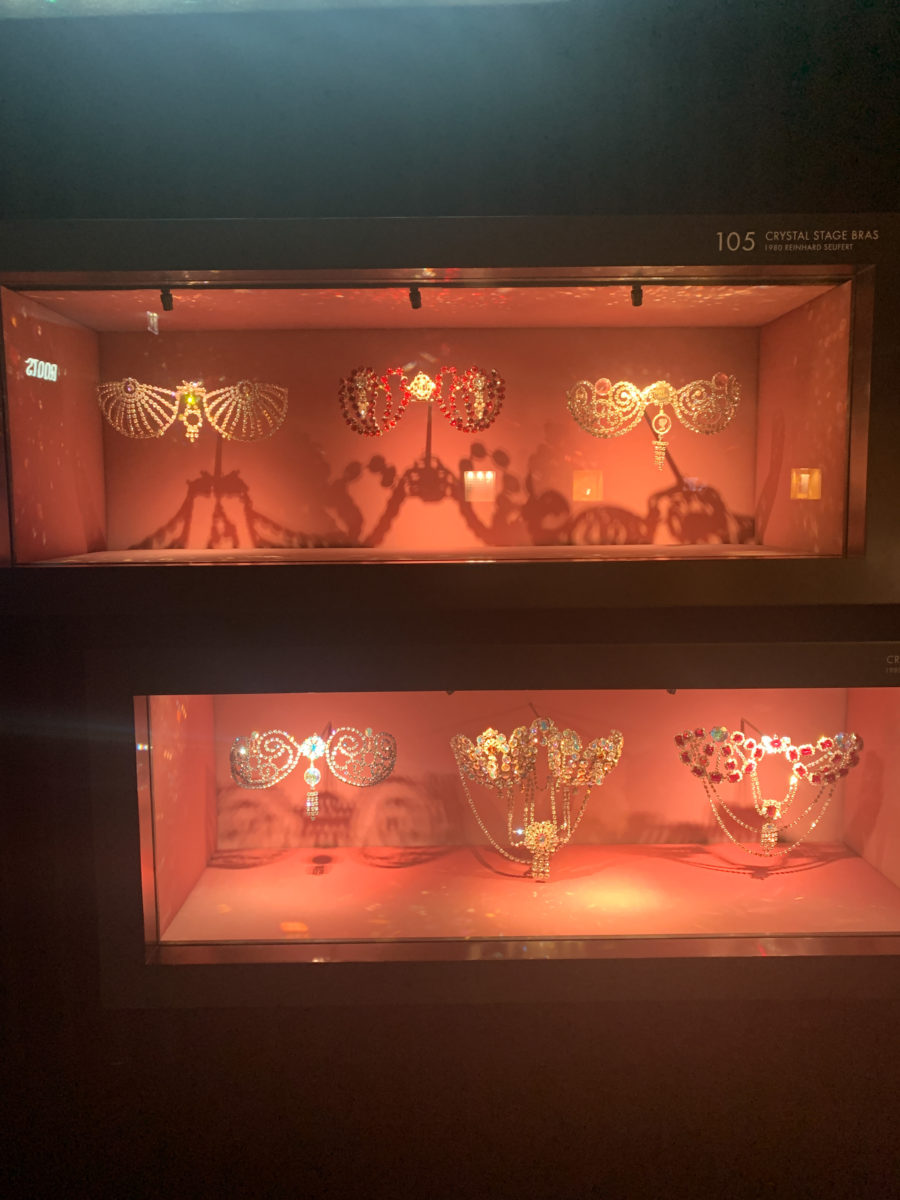
These rooms show how different artists interpret crystal, and some rooms are particularly interesting. It’s really the park that attracted my curiosity, after having paid several tens of euros (fortunately there are sales in the store…) for a nice ring. I fell in love with a beautiful necklace representing the moon, but considering the price (more expensive than 3 nights at the youth hostel…), I, unfortunately, had to leave it in the store (link of the necklace, Christmas gift if my family reads this)!
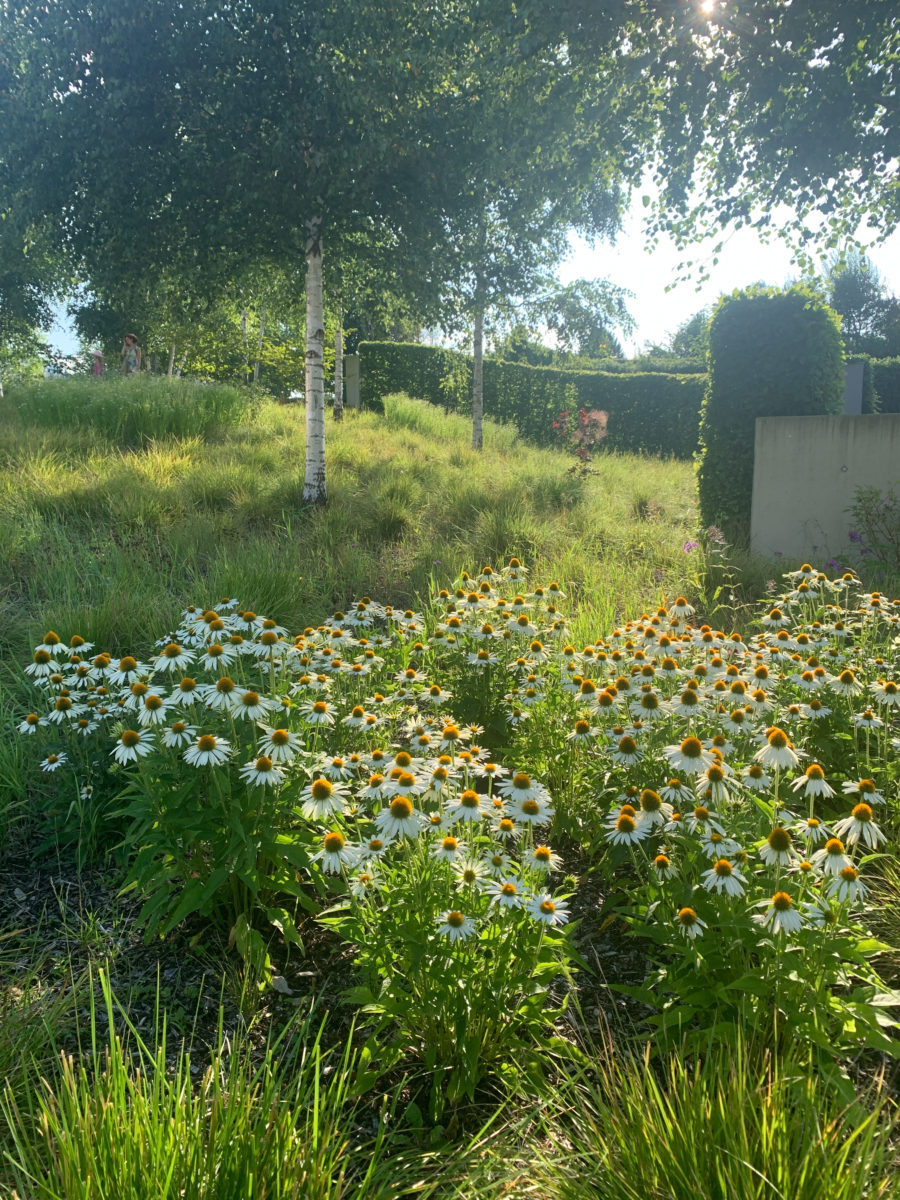


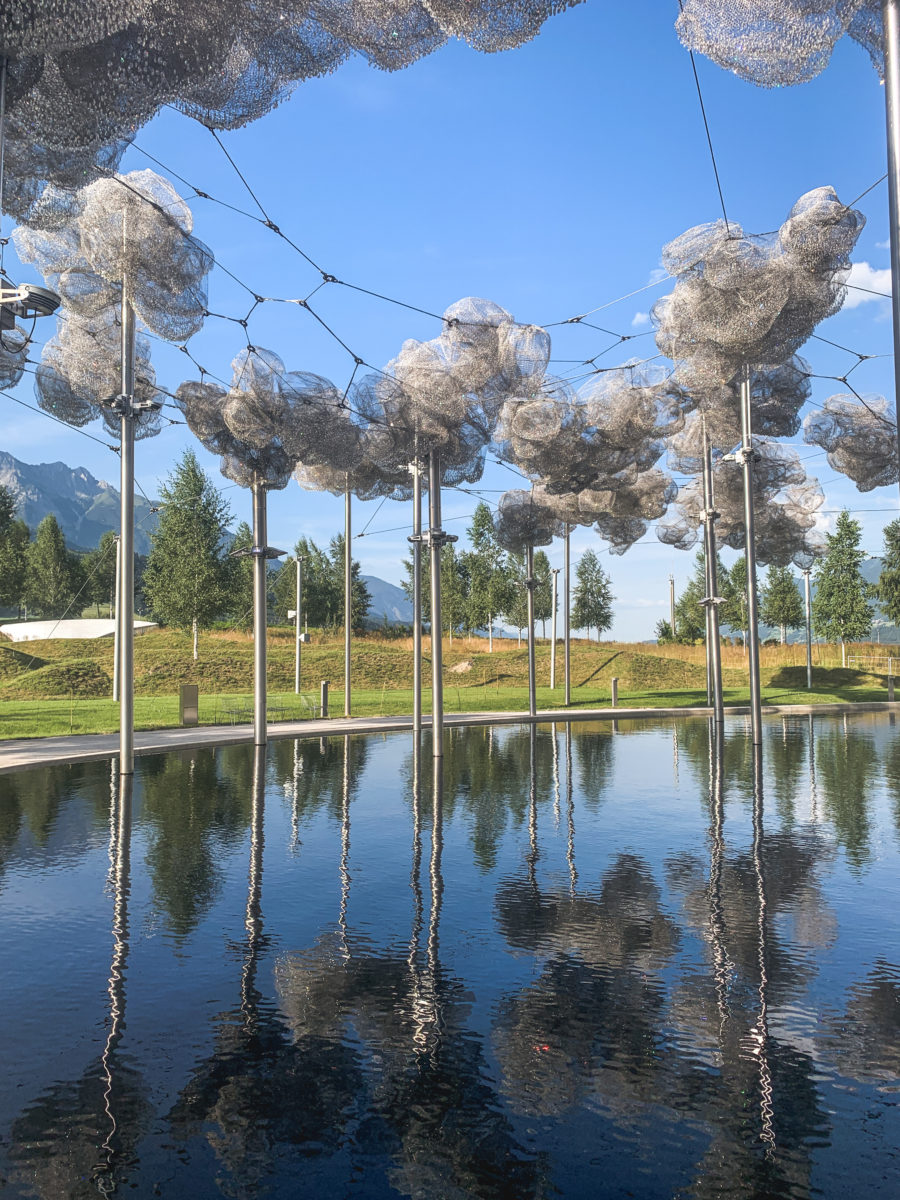
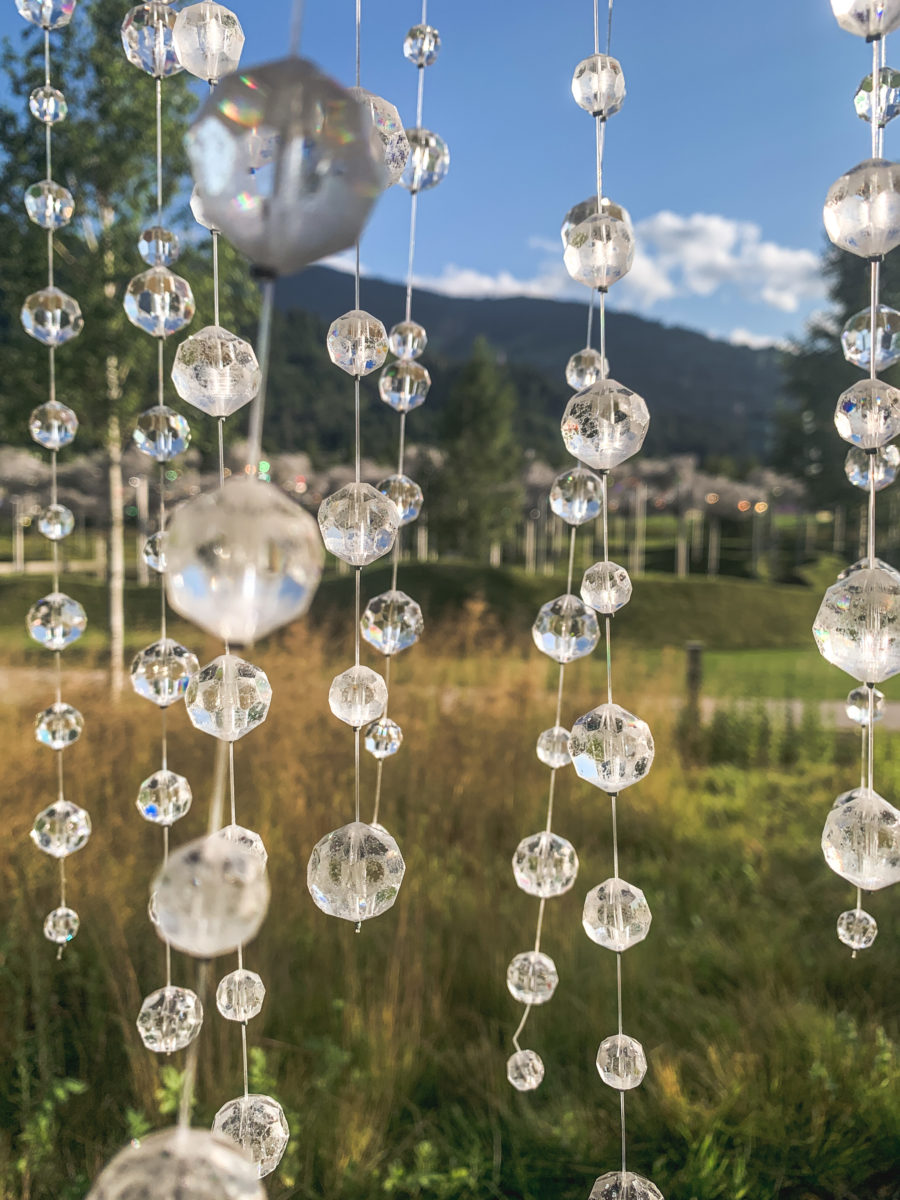
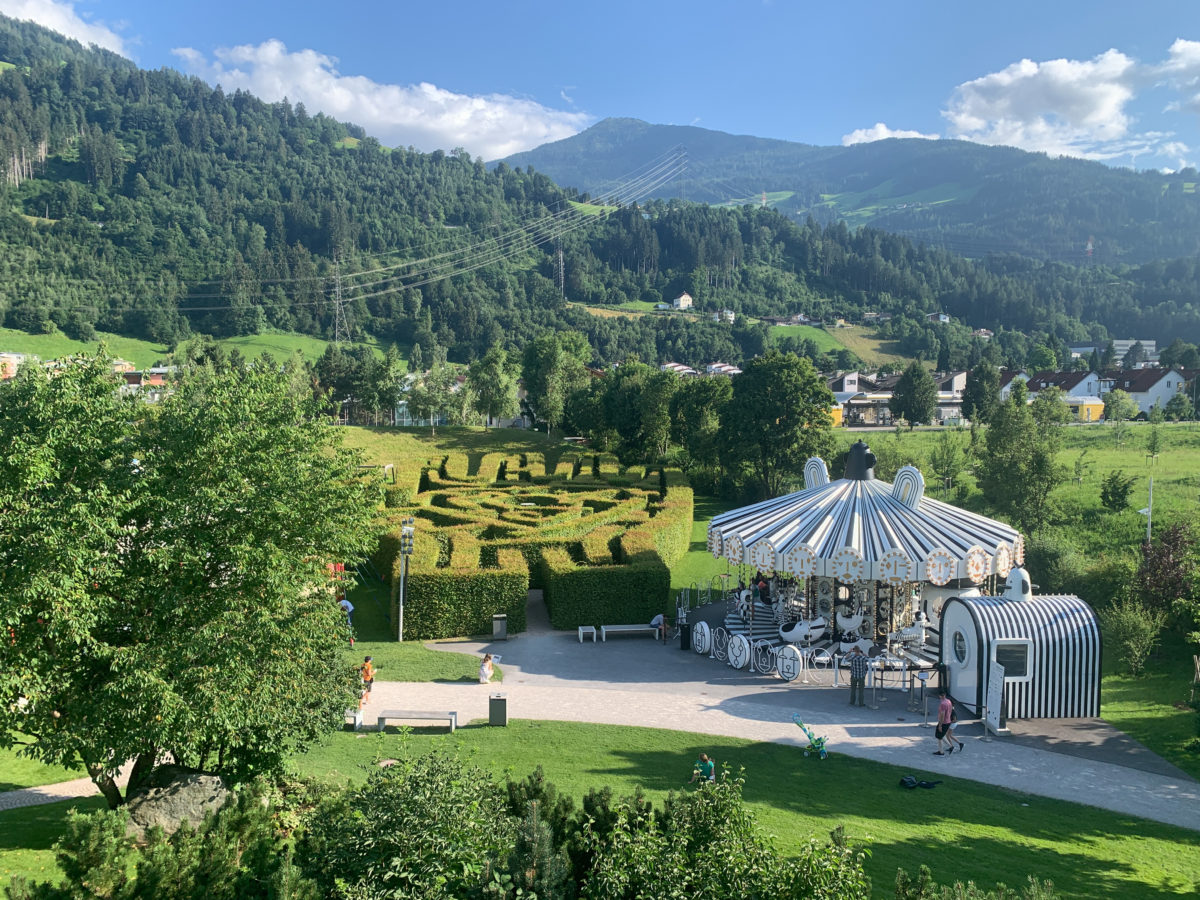

Tips for travelers: Innsbruck Card & Welcome Card
Innsbruck (and Austria in general) is quite expensive, especially being in a resort with many ski lifts that cost a fortune. So, only one piece of advice is given in this article in order to save a lot: take the Innsbruck Card.
But first, you might already be entitled to some savings thanks to the Welcome Card. This is provided by the commercial accommodation (hotel, hostel, etc.) according to the number of nights you stay.
From 2 nights onwards, public transport in Innsbruck is free of charge, and from 3 nights onwards, other free services come into play. With this guest card, you get free or reduced admission to many leisure activities. Some mountain railroads are also free of charge (DreiSeenBahn in Kühtai, Muttereralmbahn, 20% discount for the Nordkettenbahn, etc.). Resting 3 nights at the youth hostel (which I highly recommend!), I was able to take advantage of the free ride to the Mutterer Alm.
If you also want to see a lot of things in Innsbruck and its surroundings, the good plan is definitely the Innsbruck Card! With this card, you can explore the city for 24, 48 or 72 hours and benefit from many discounts and free entries. It is especially a must-have pass if you plan to go to the Nordkette (it costs nothing more than 45 euros round trip) during your stay. I took the 48 hours card, and it was clearly worth it. Sure, it can push you to consume and do more activities than you planned, but depending on what you’re planning for your Tyrolean getaway, it can be a great and economical asset to consider.
